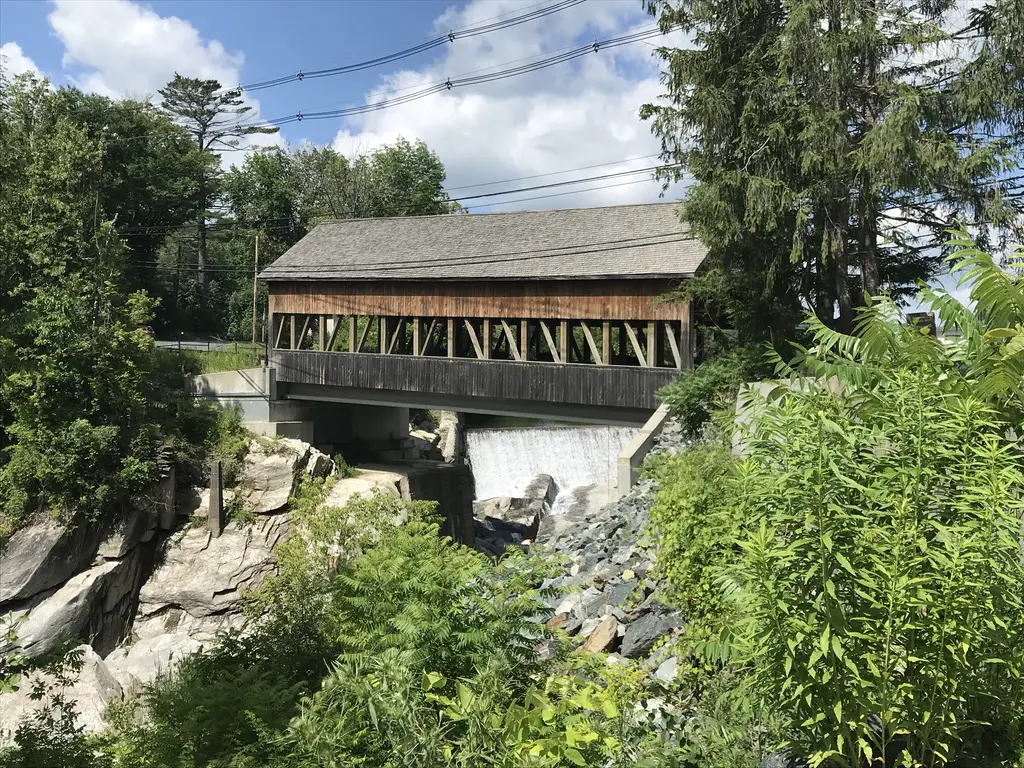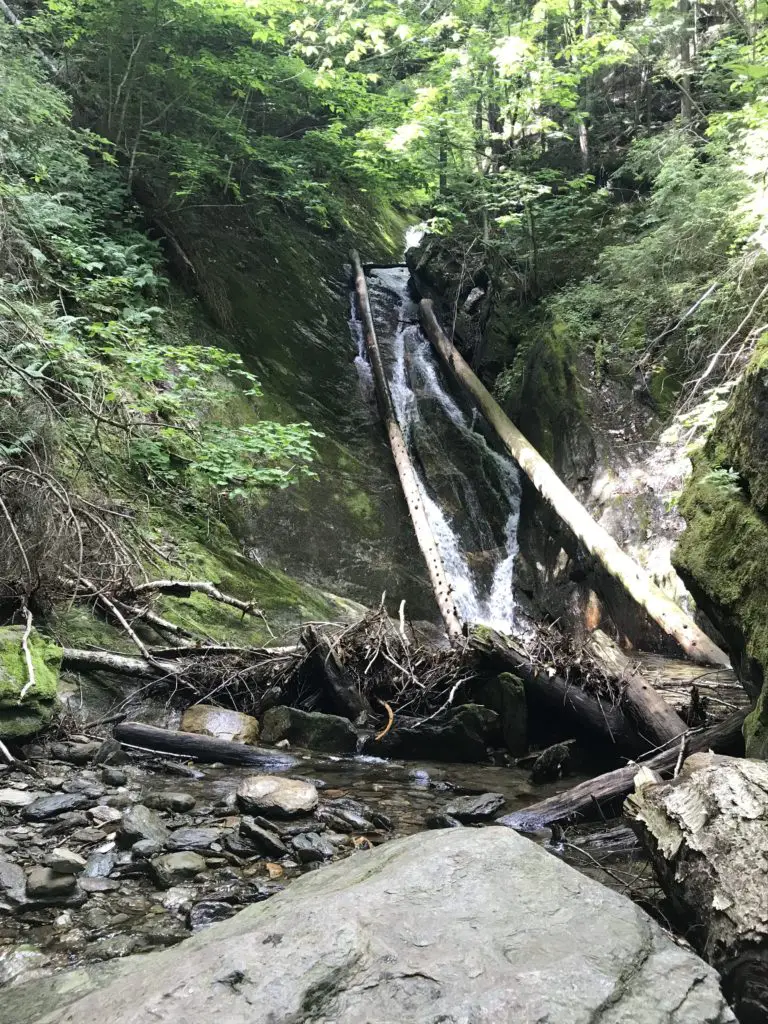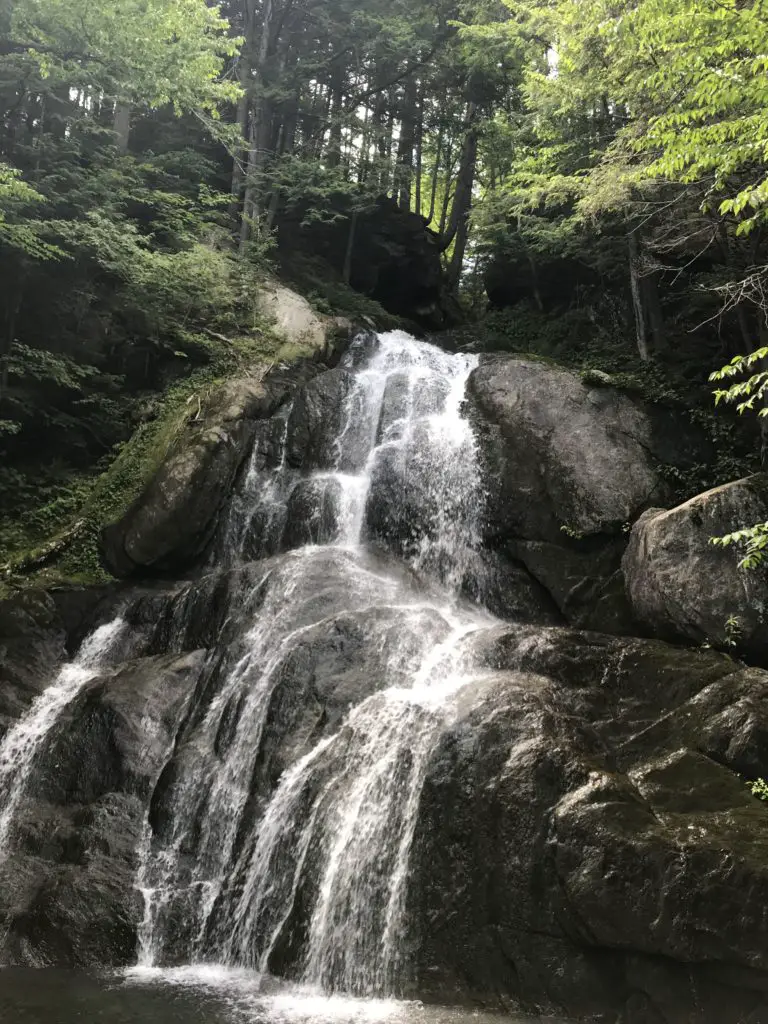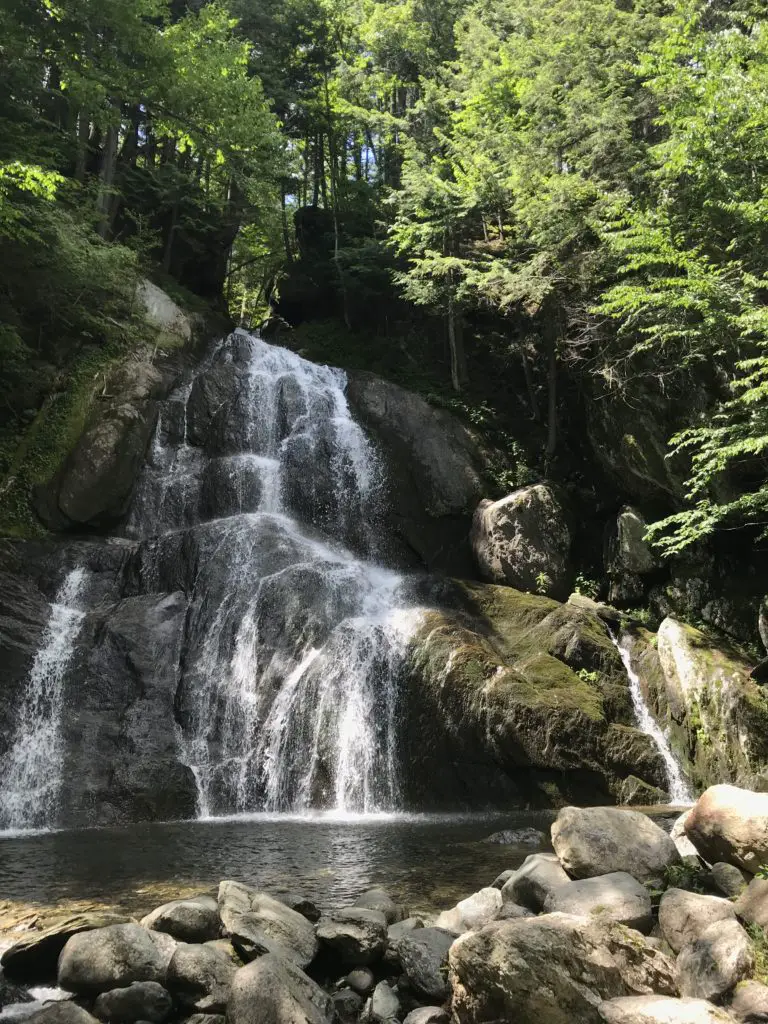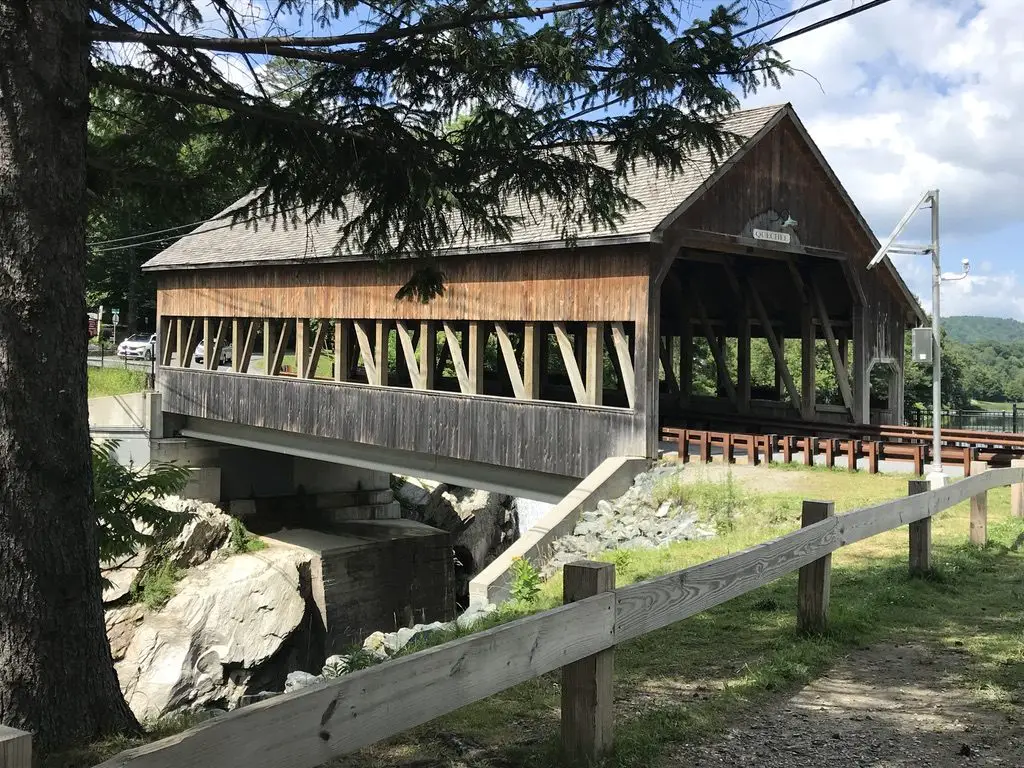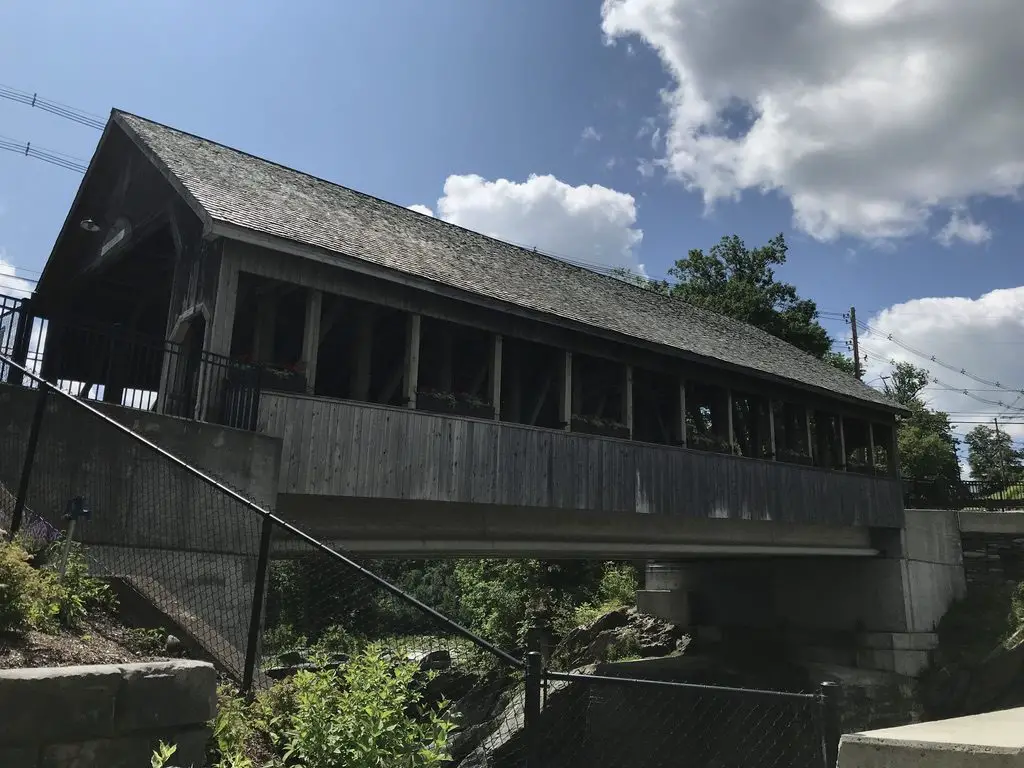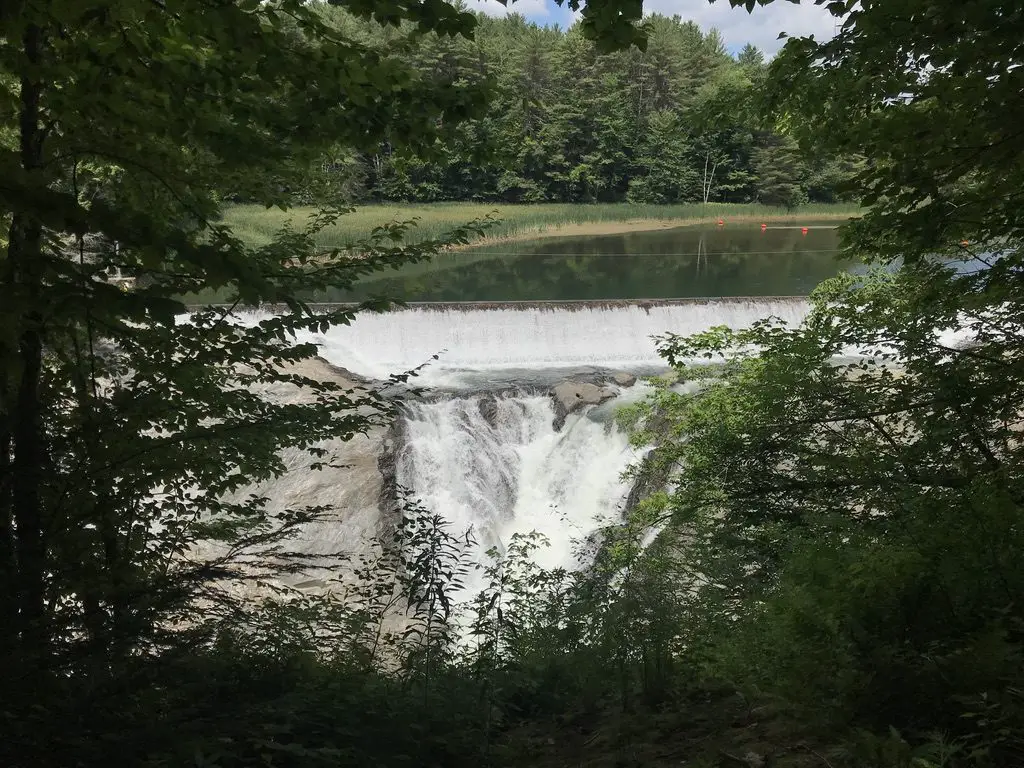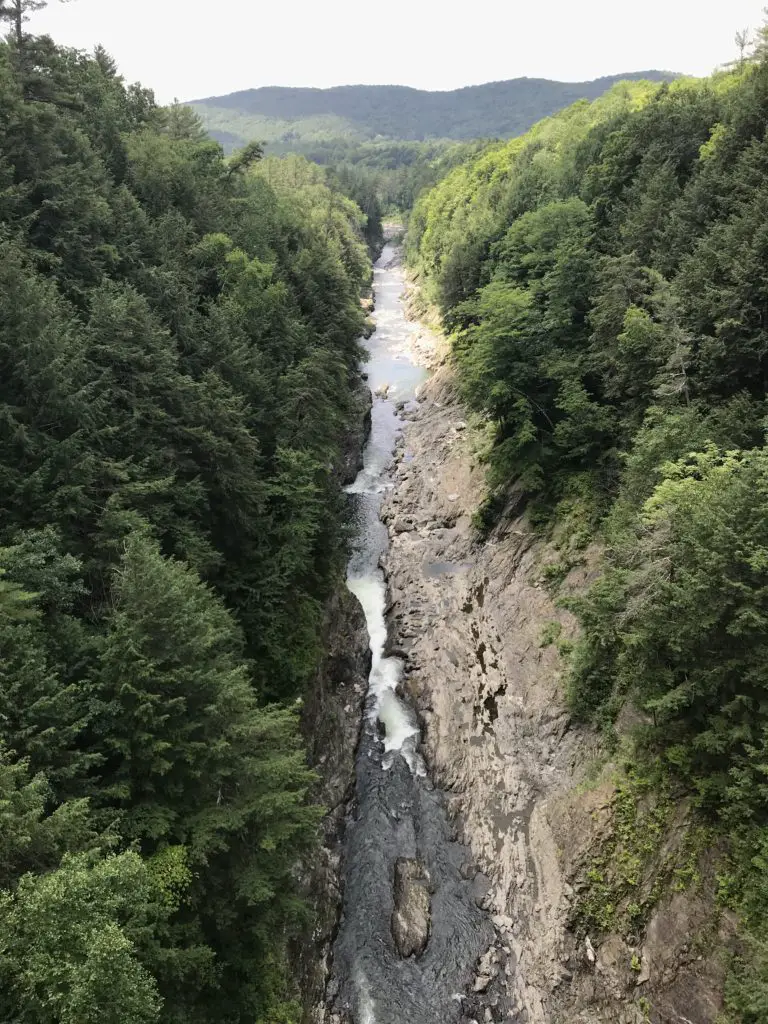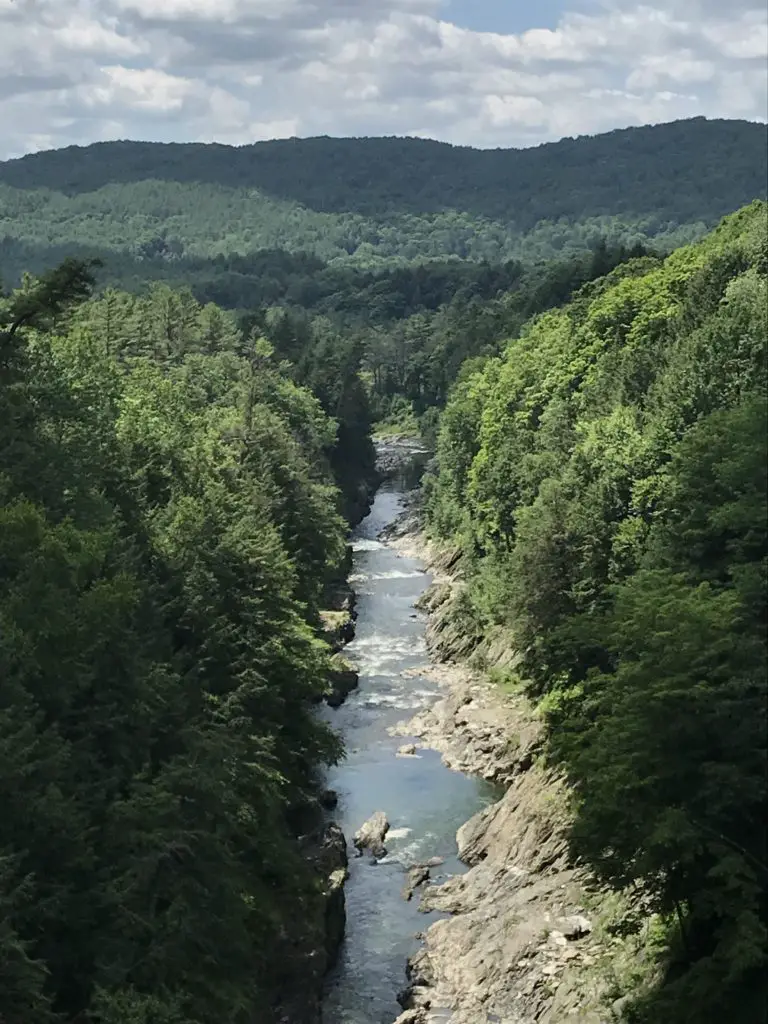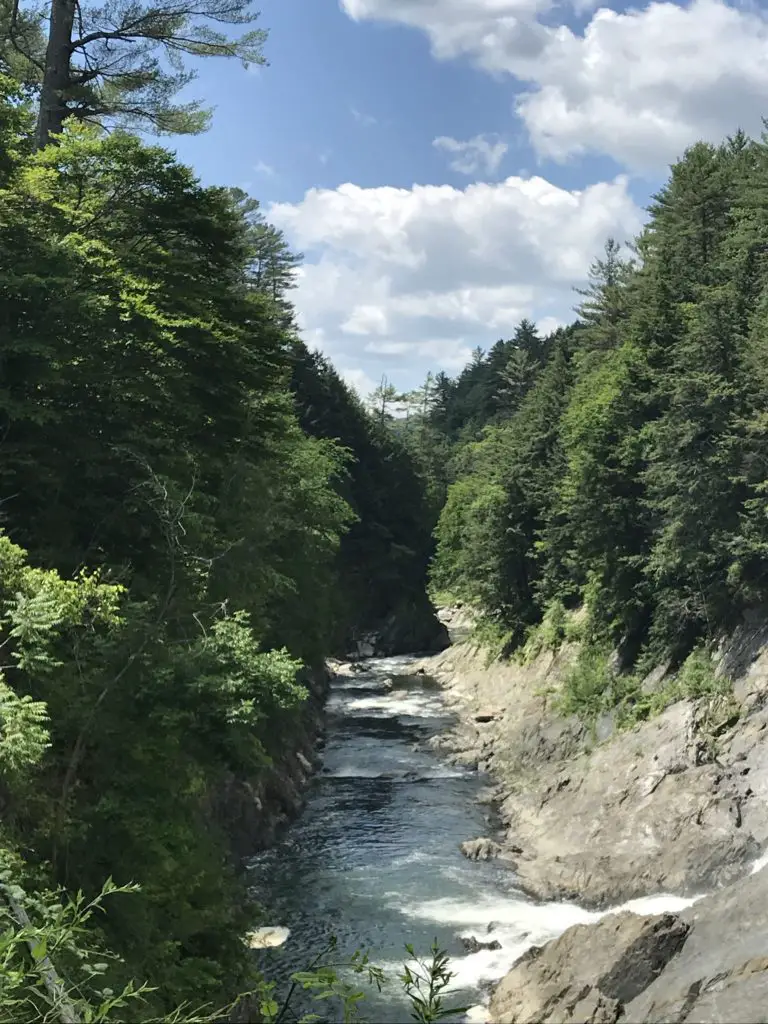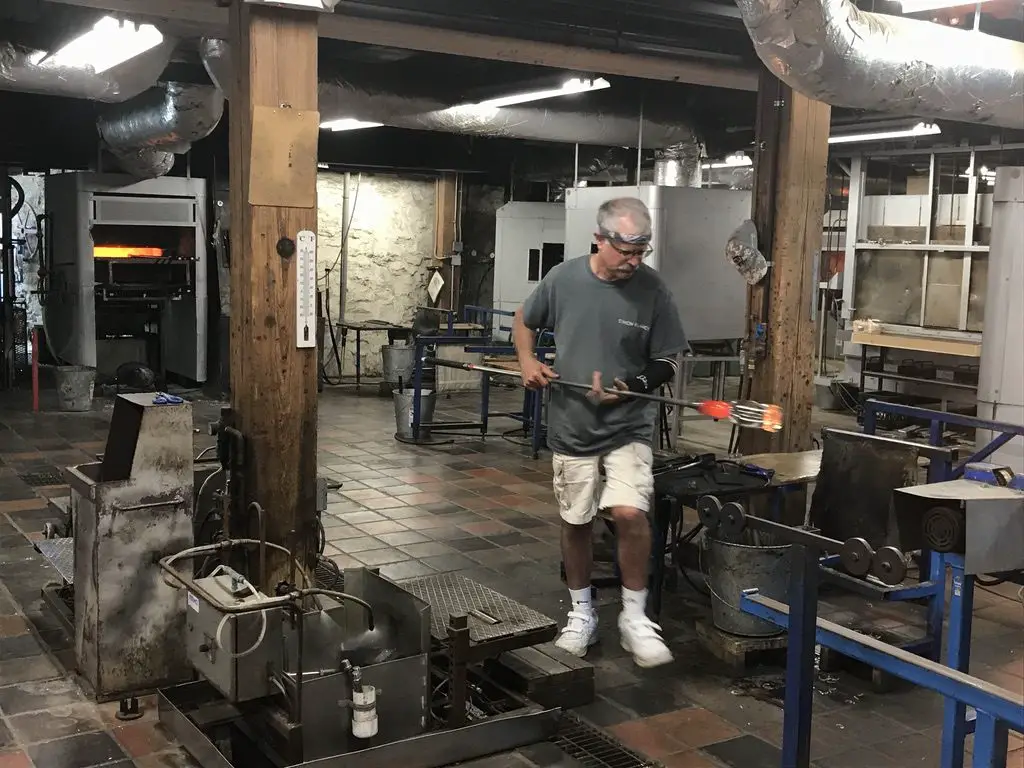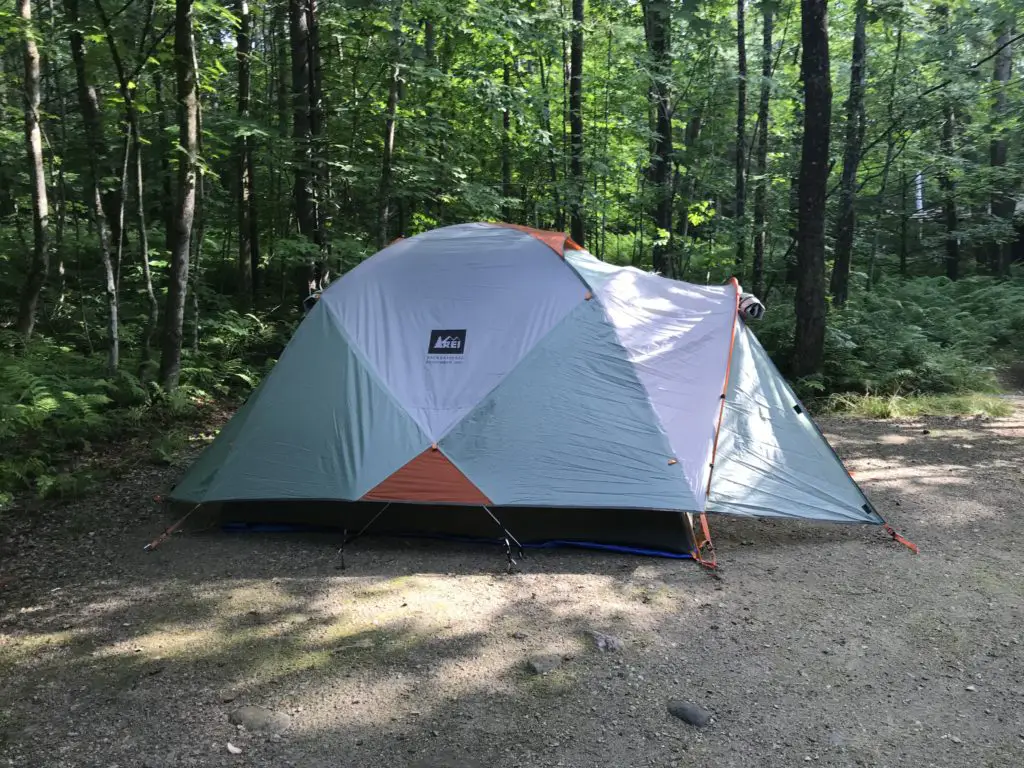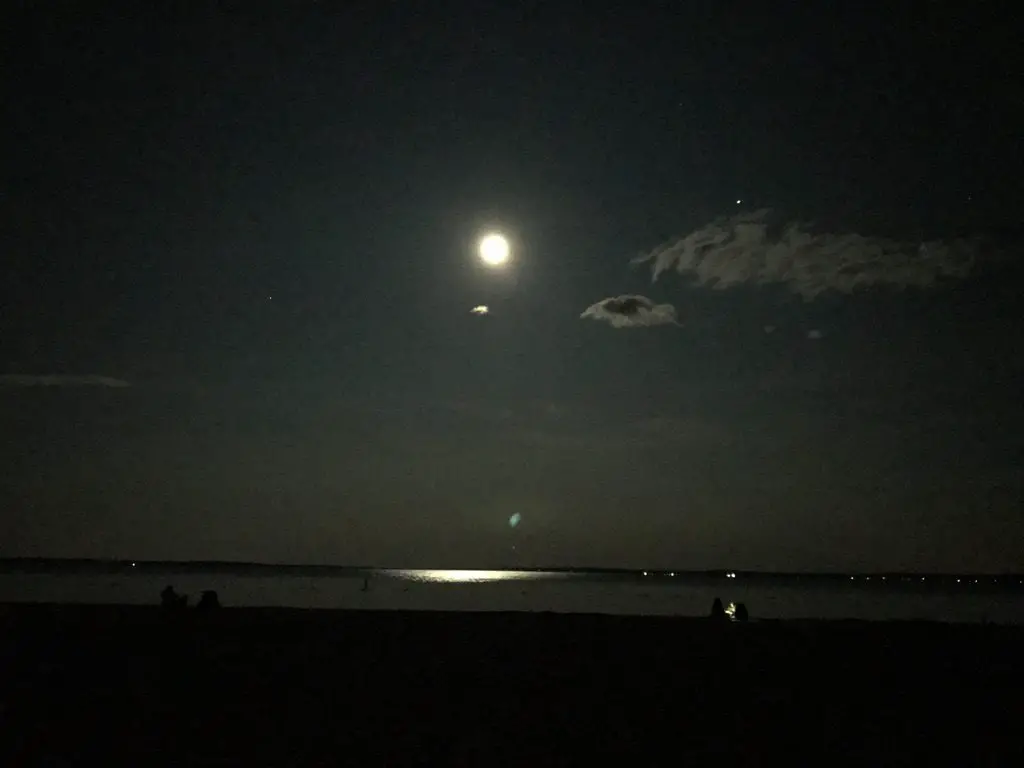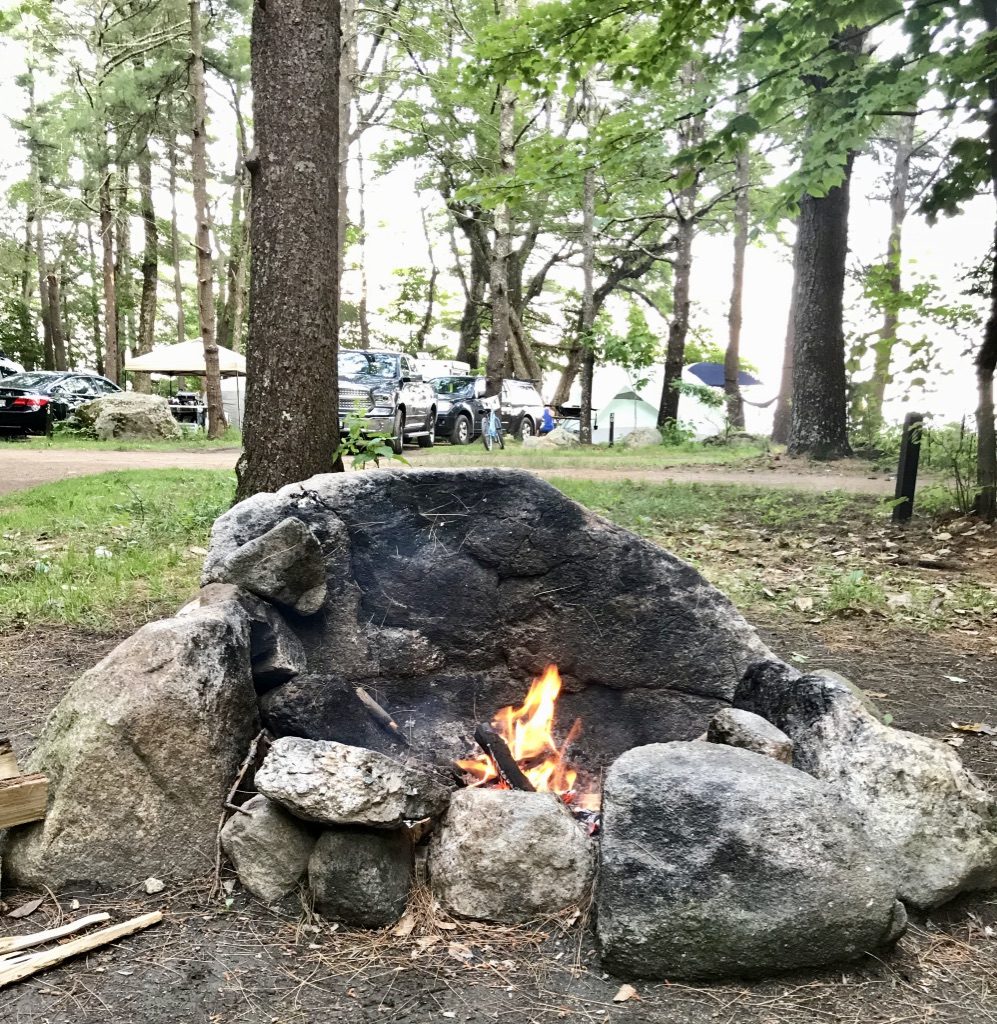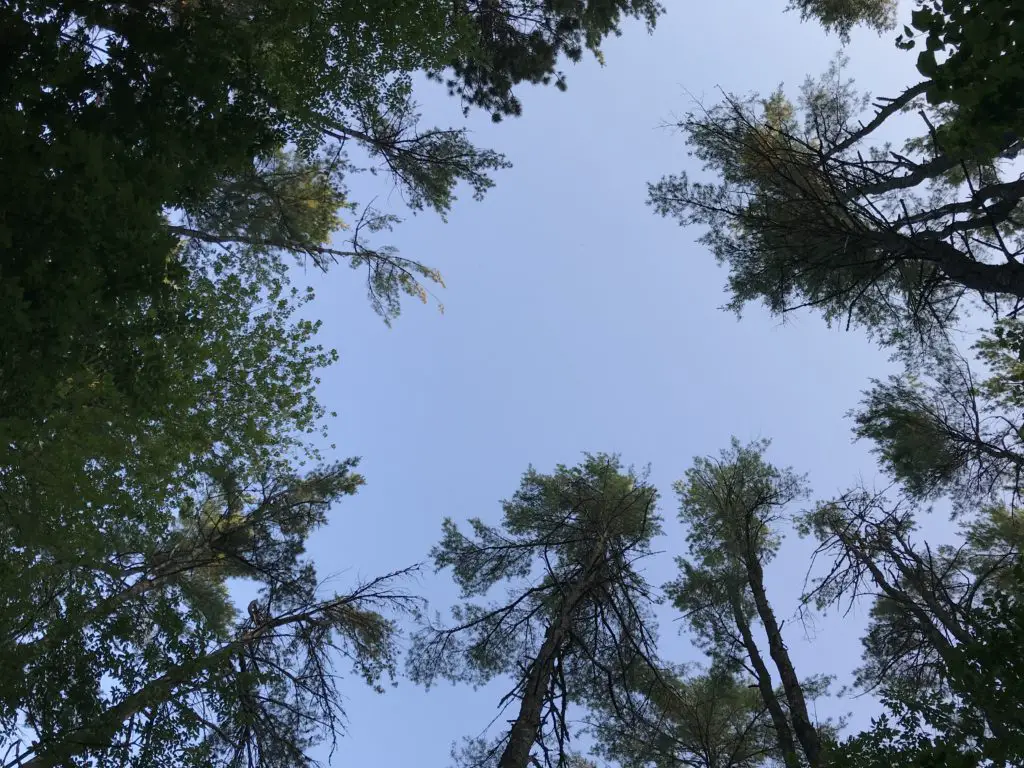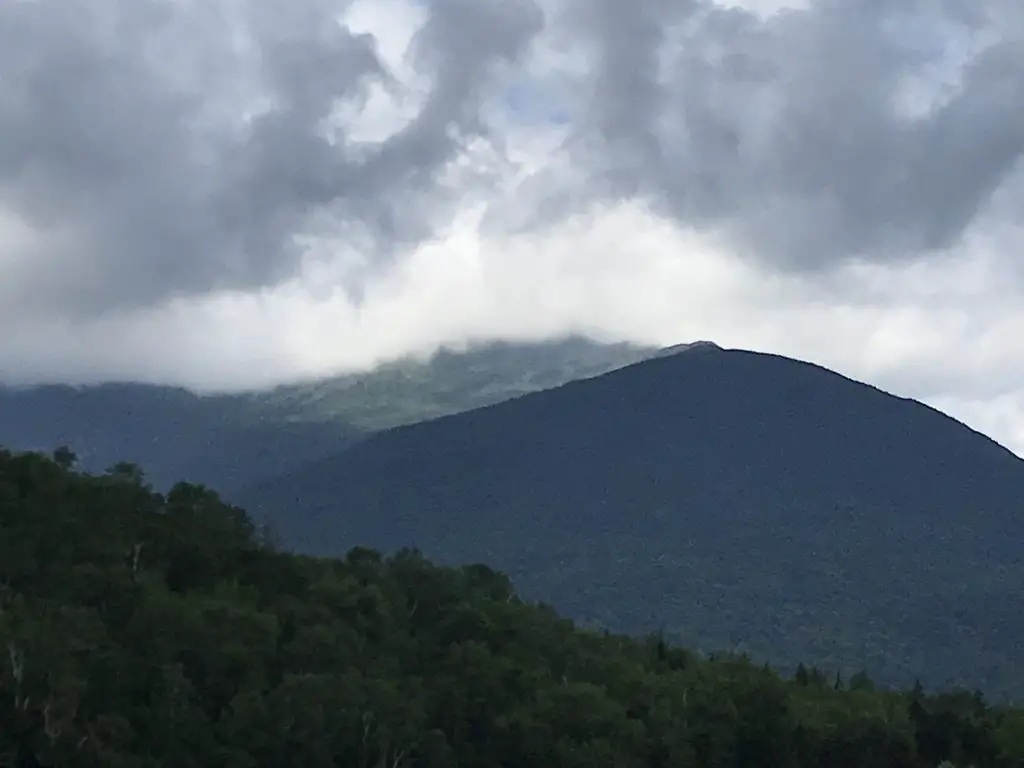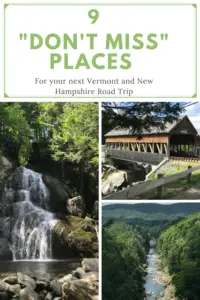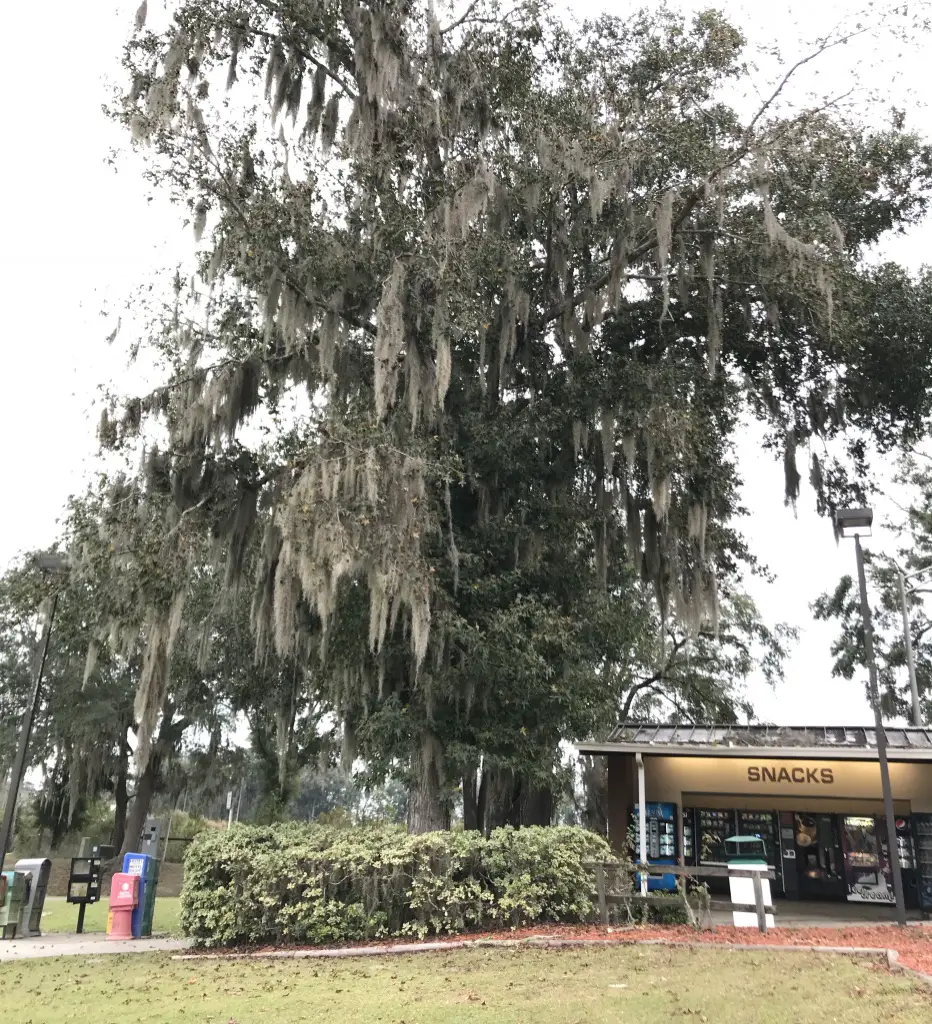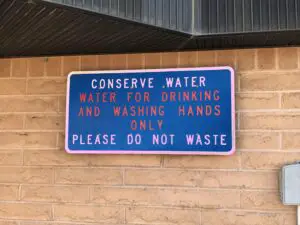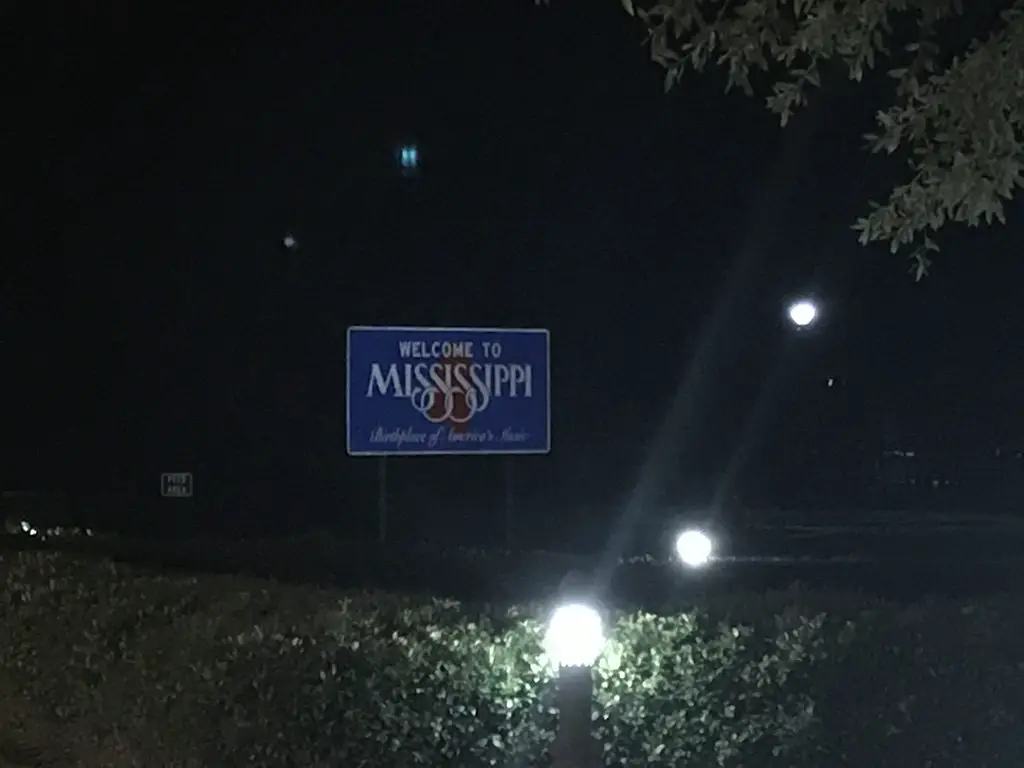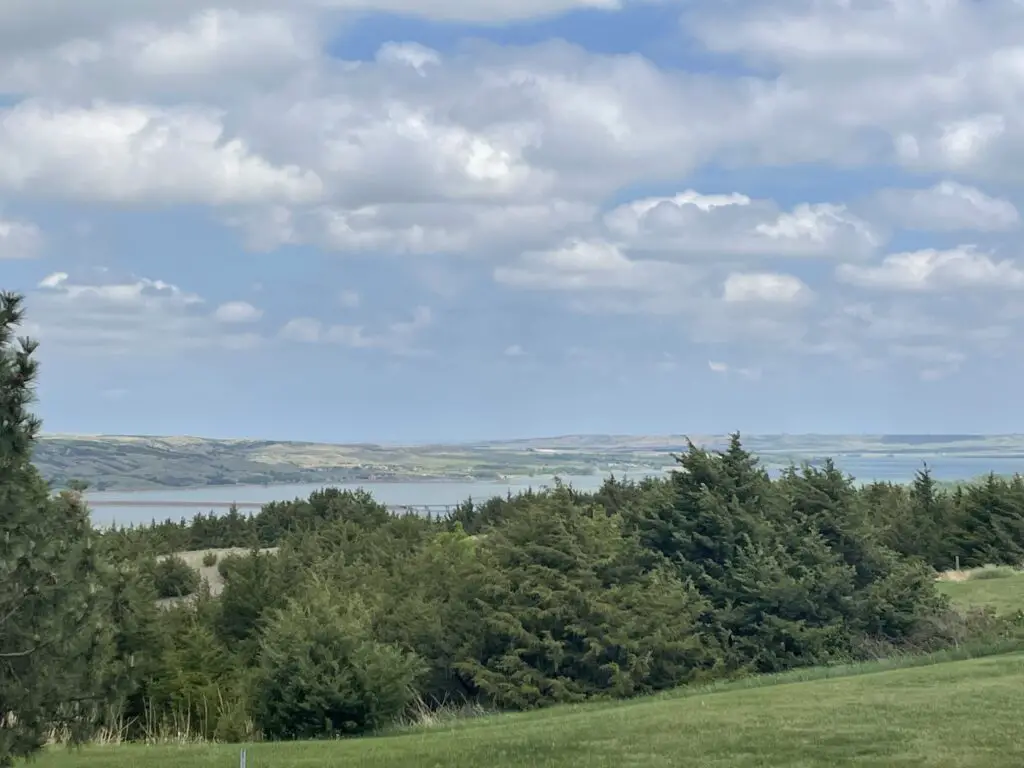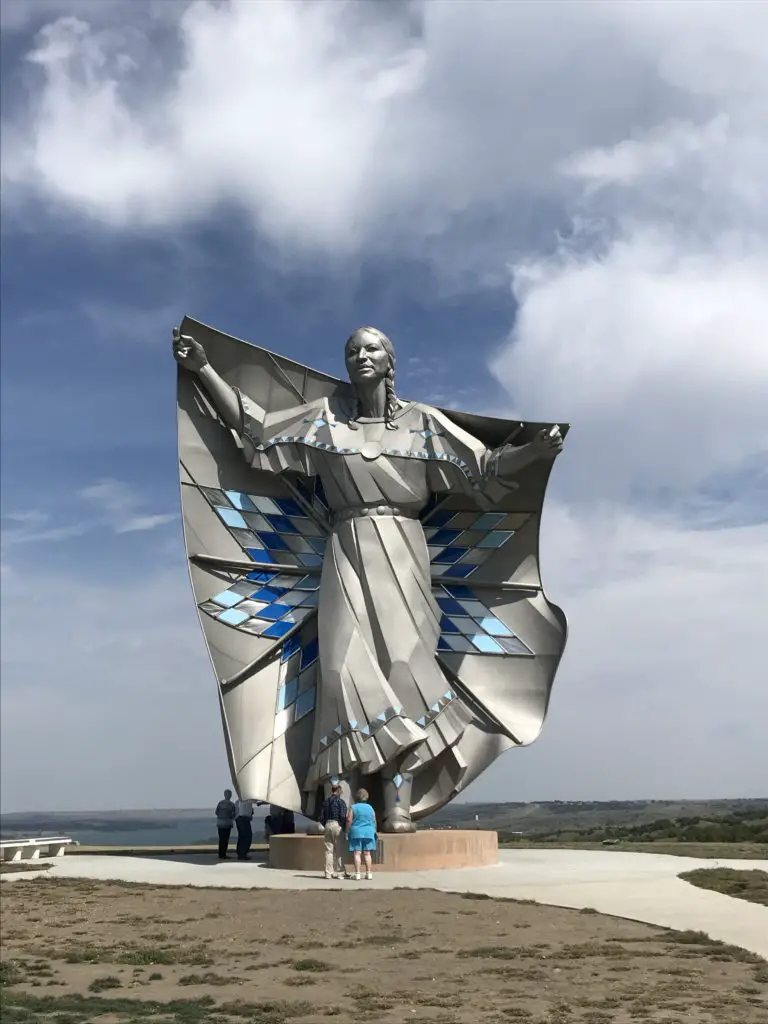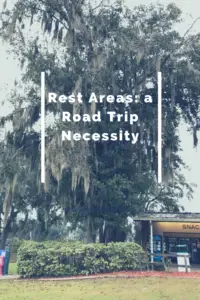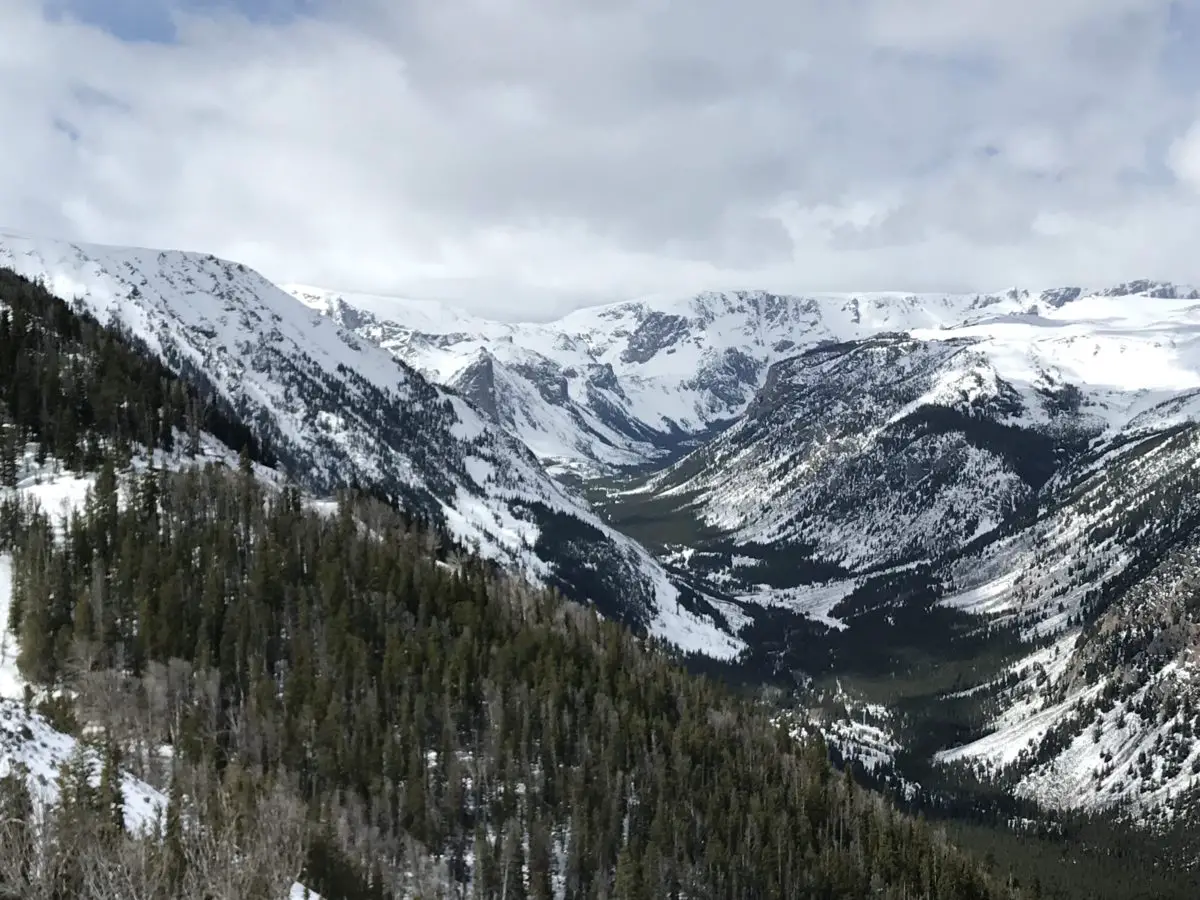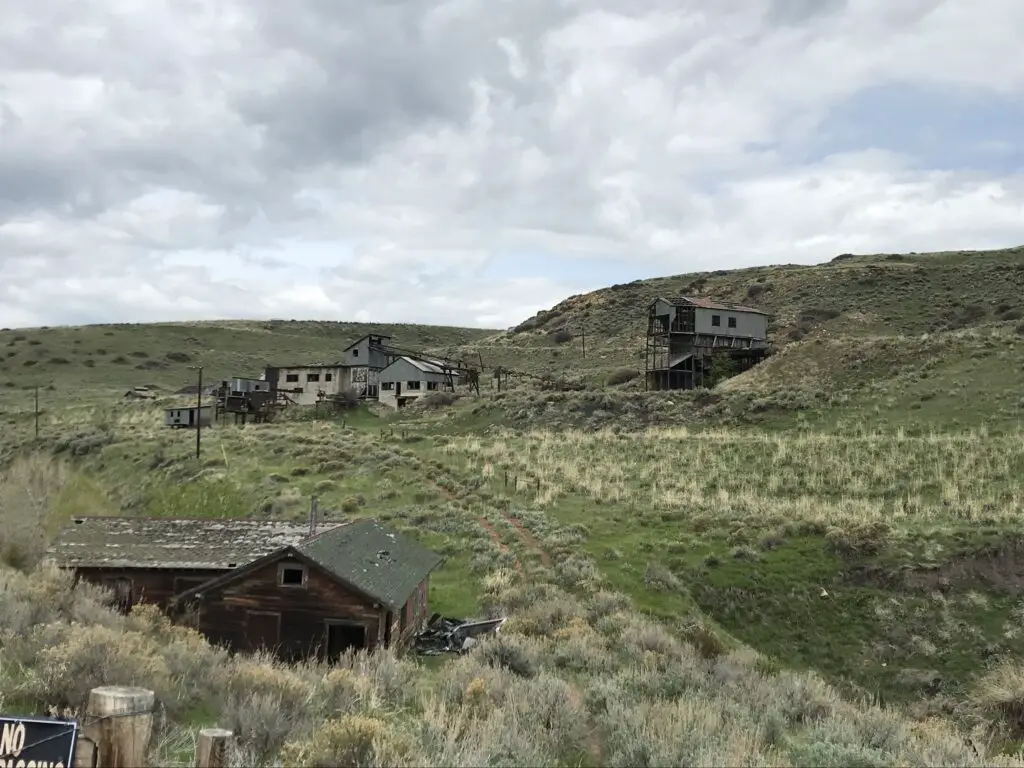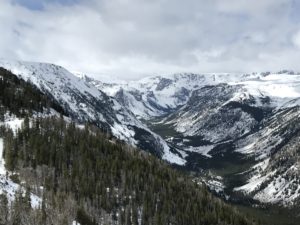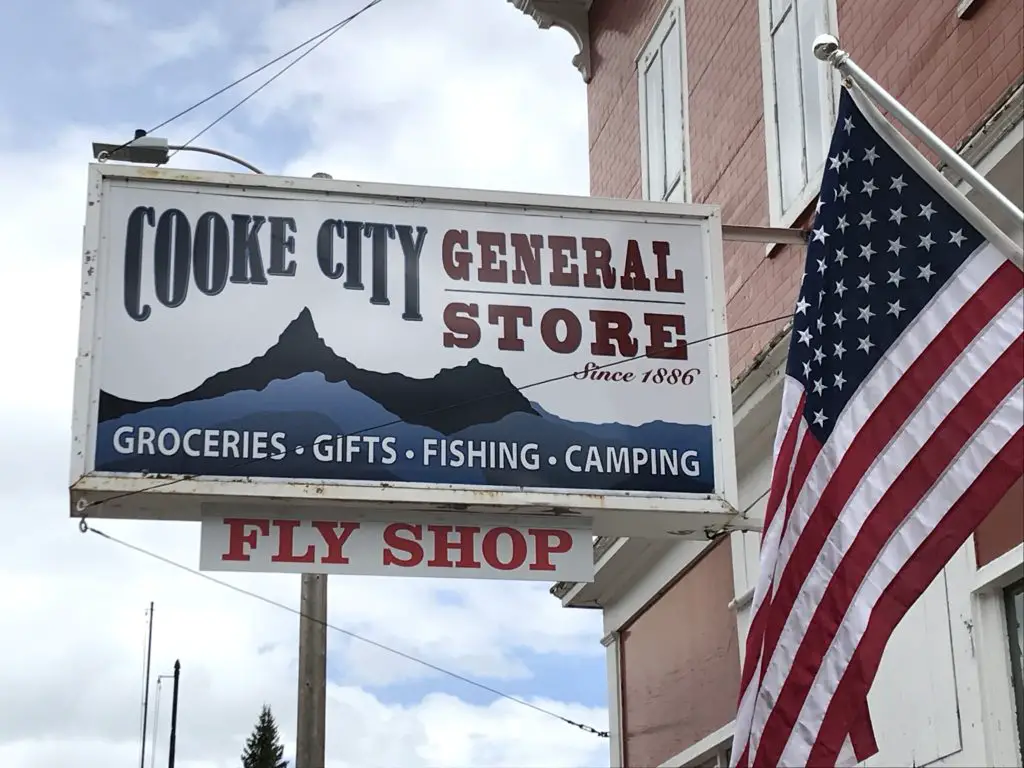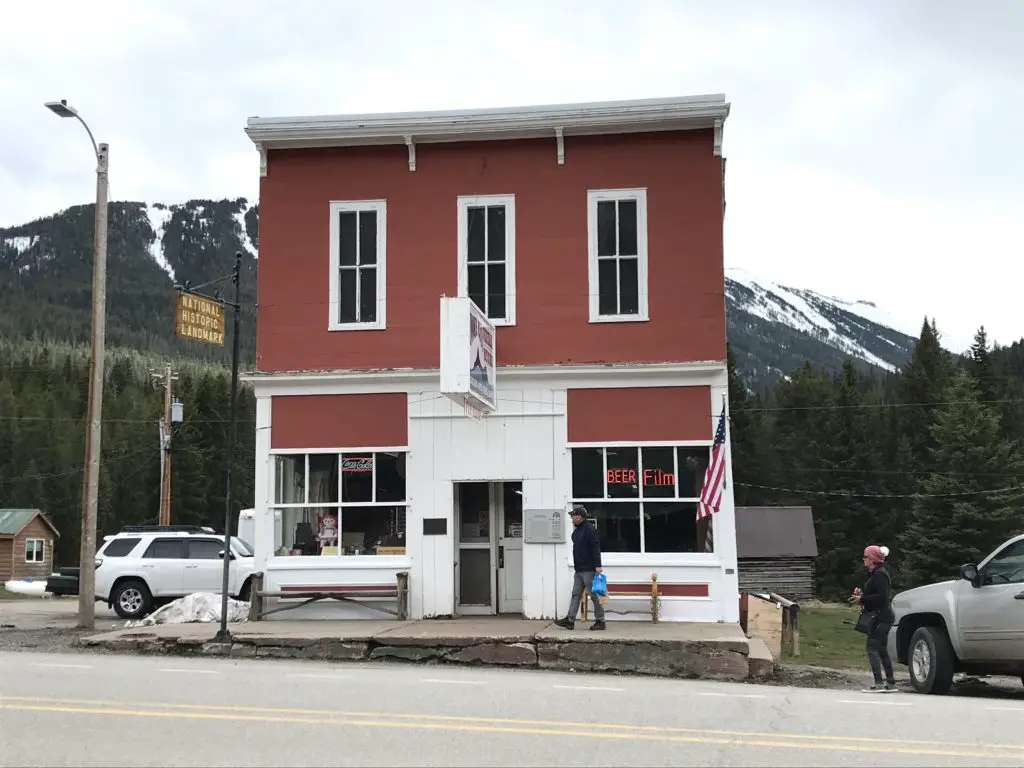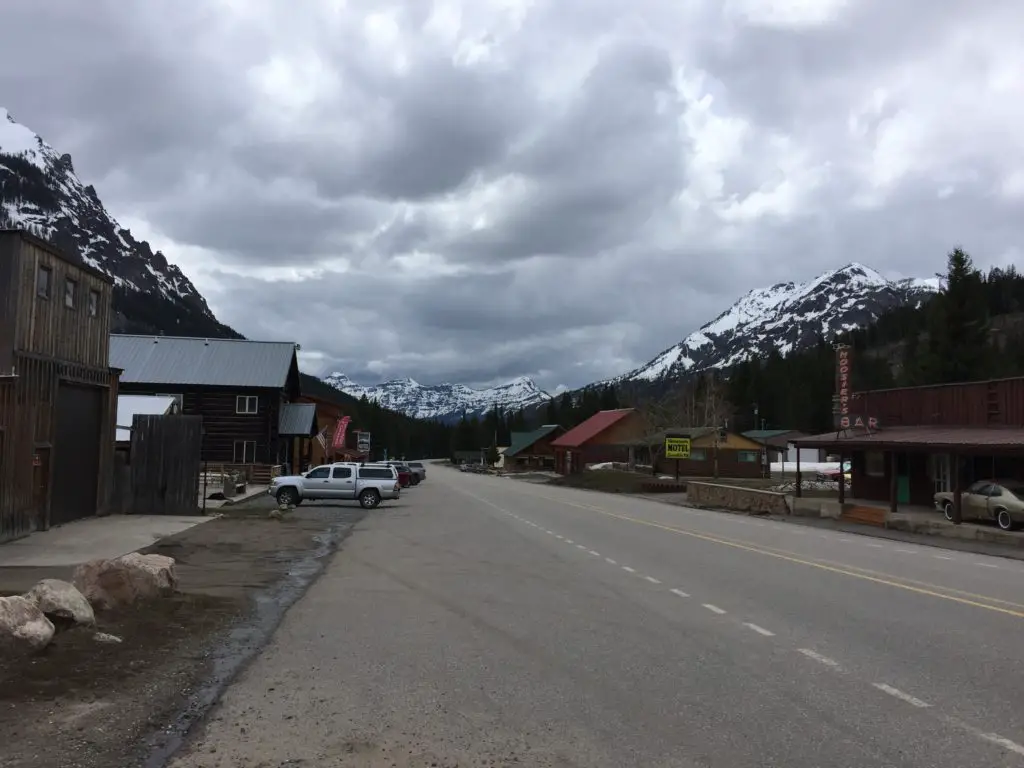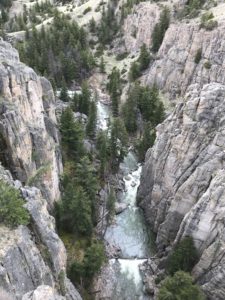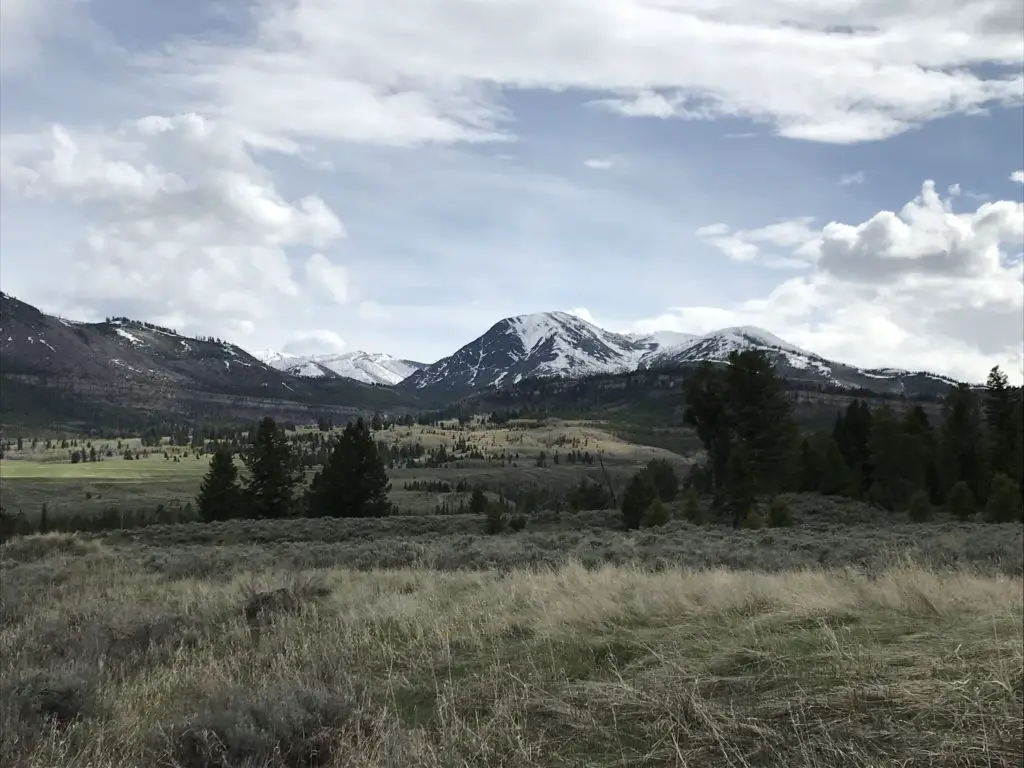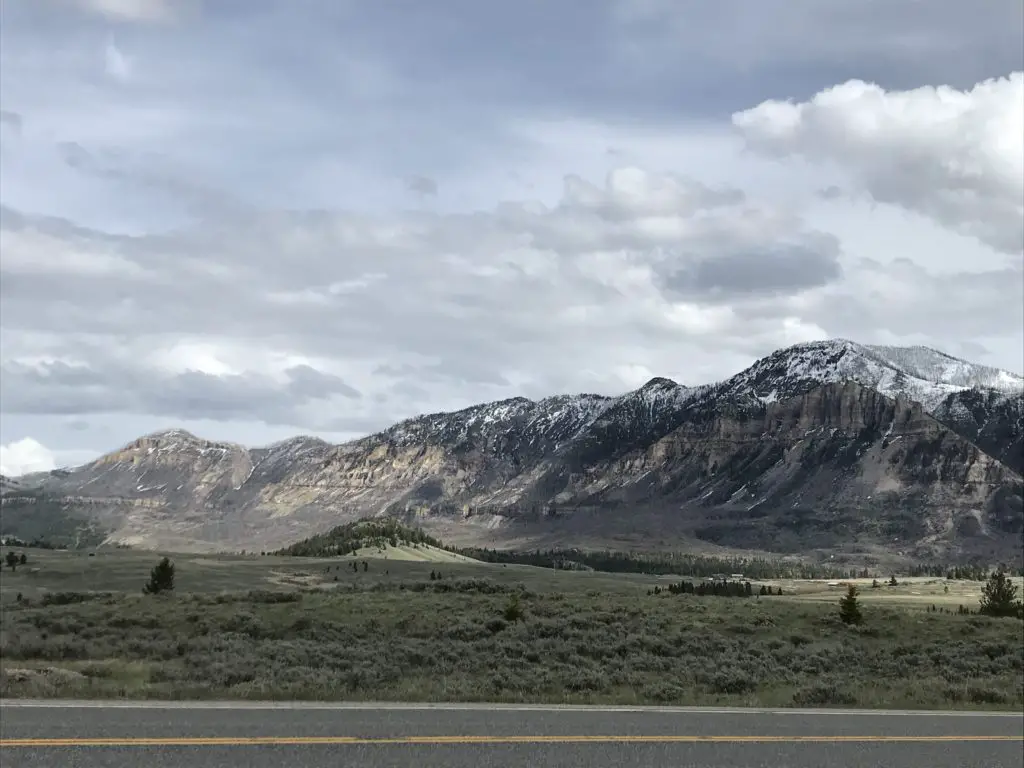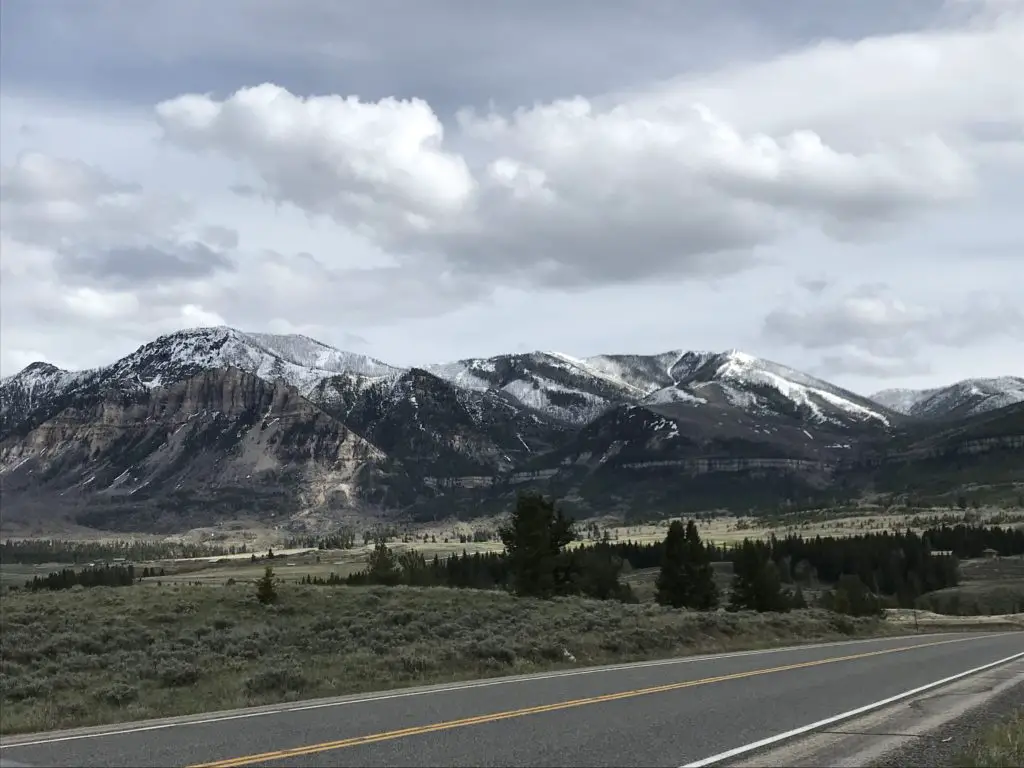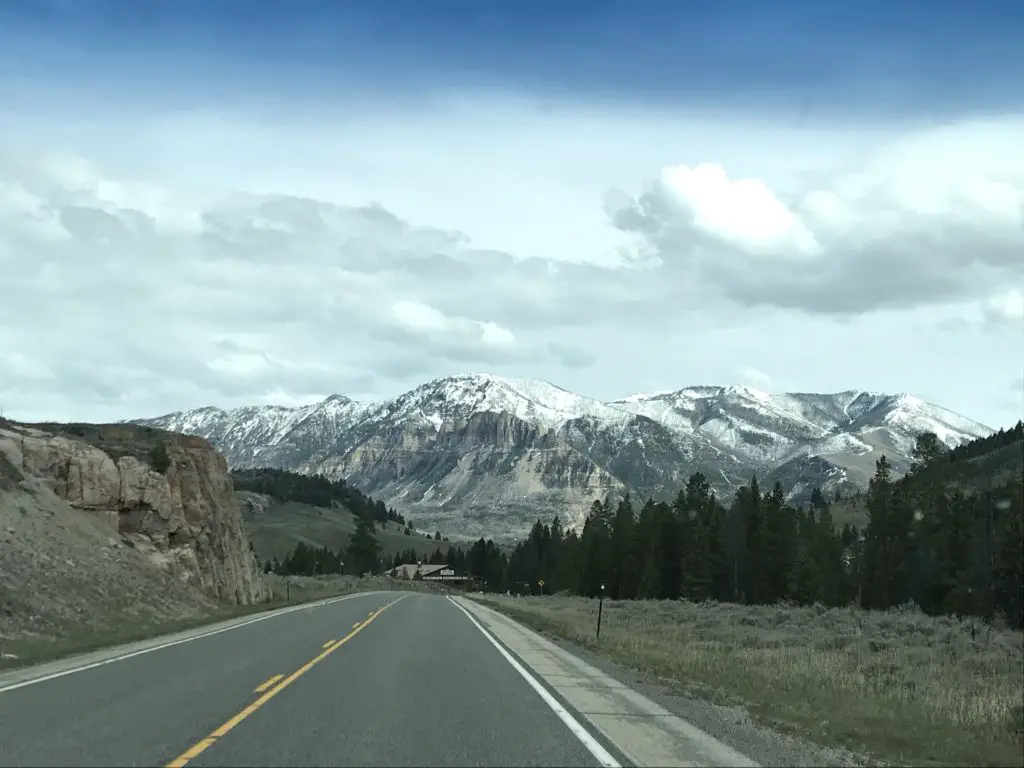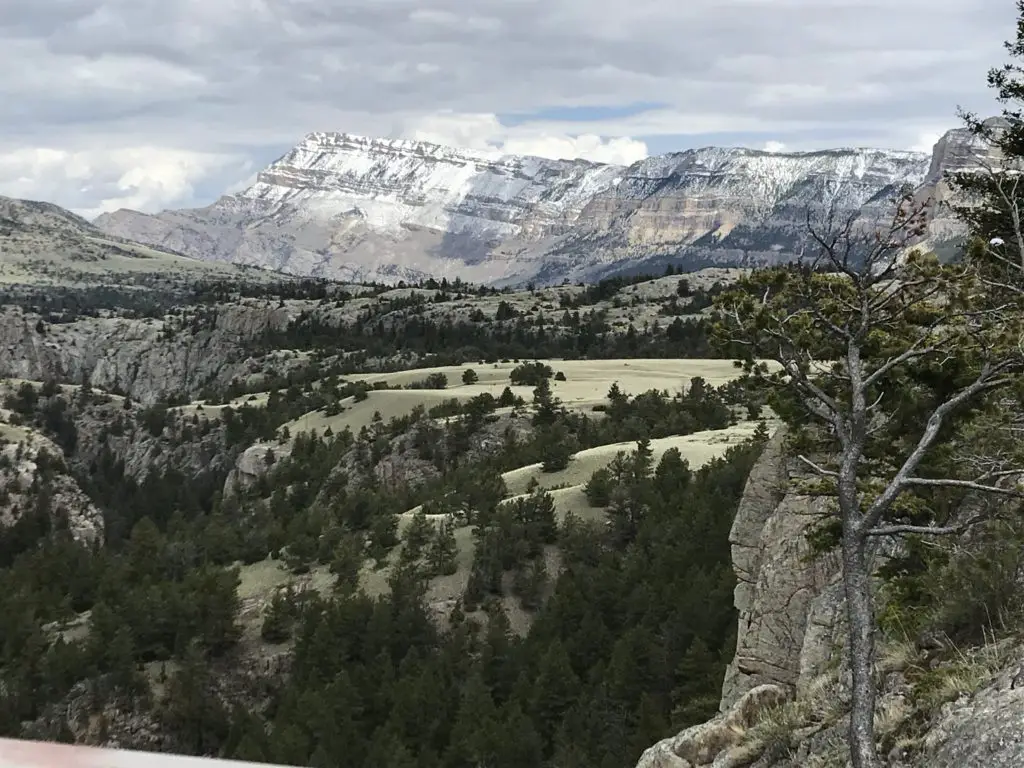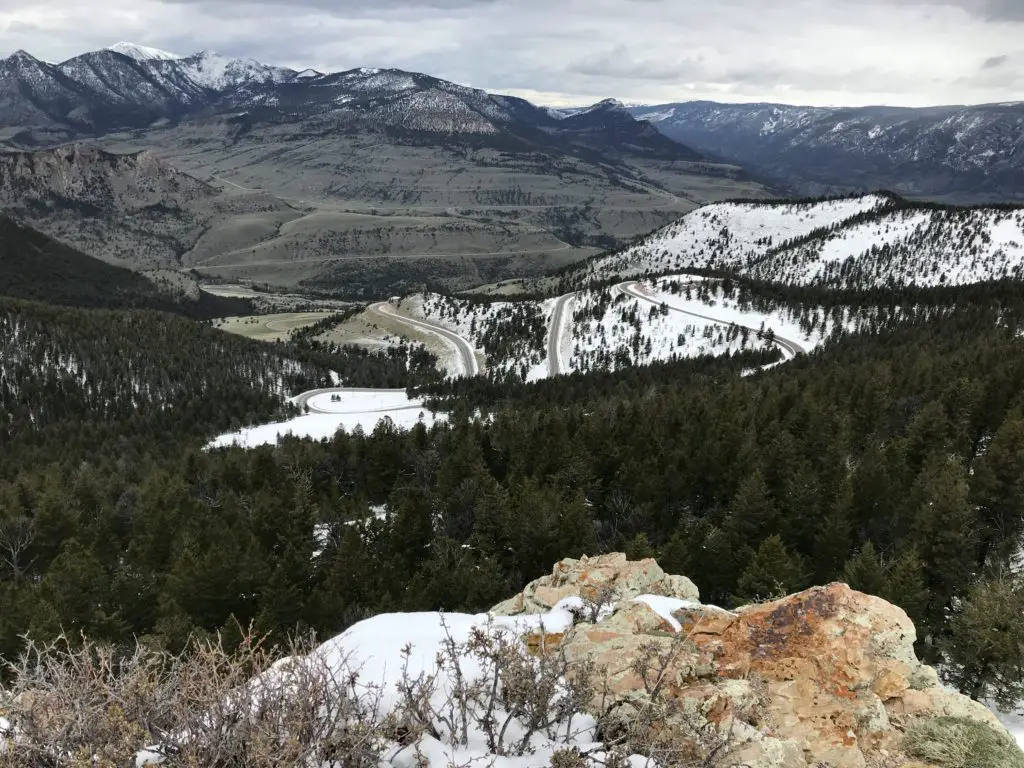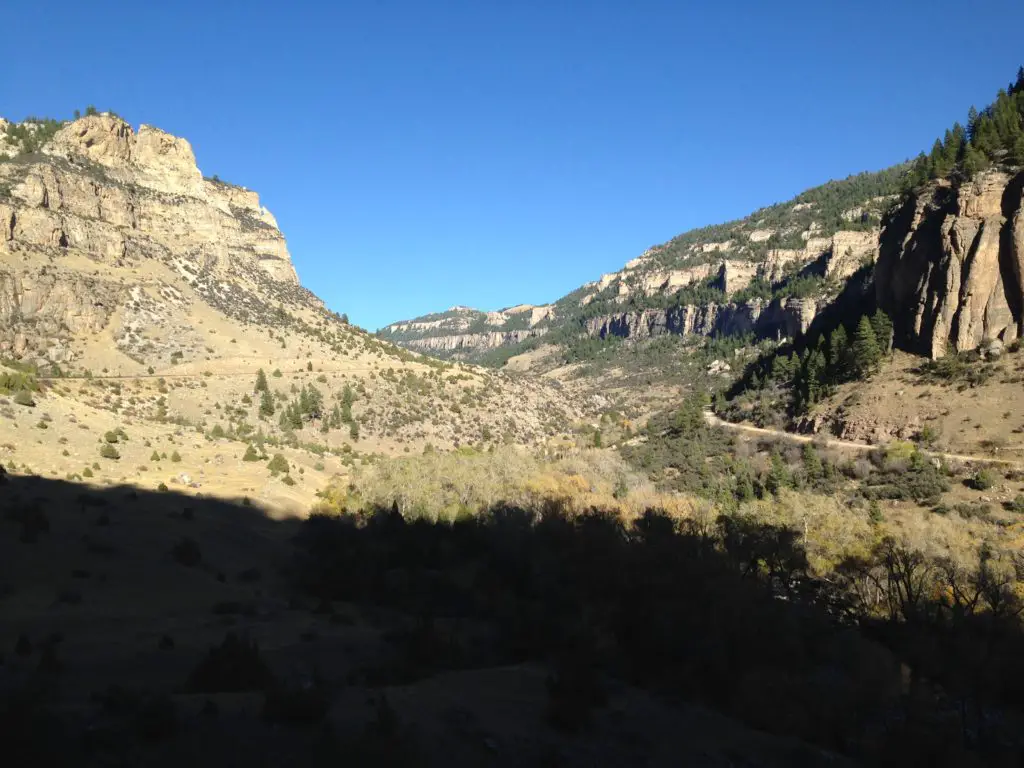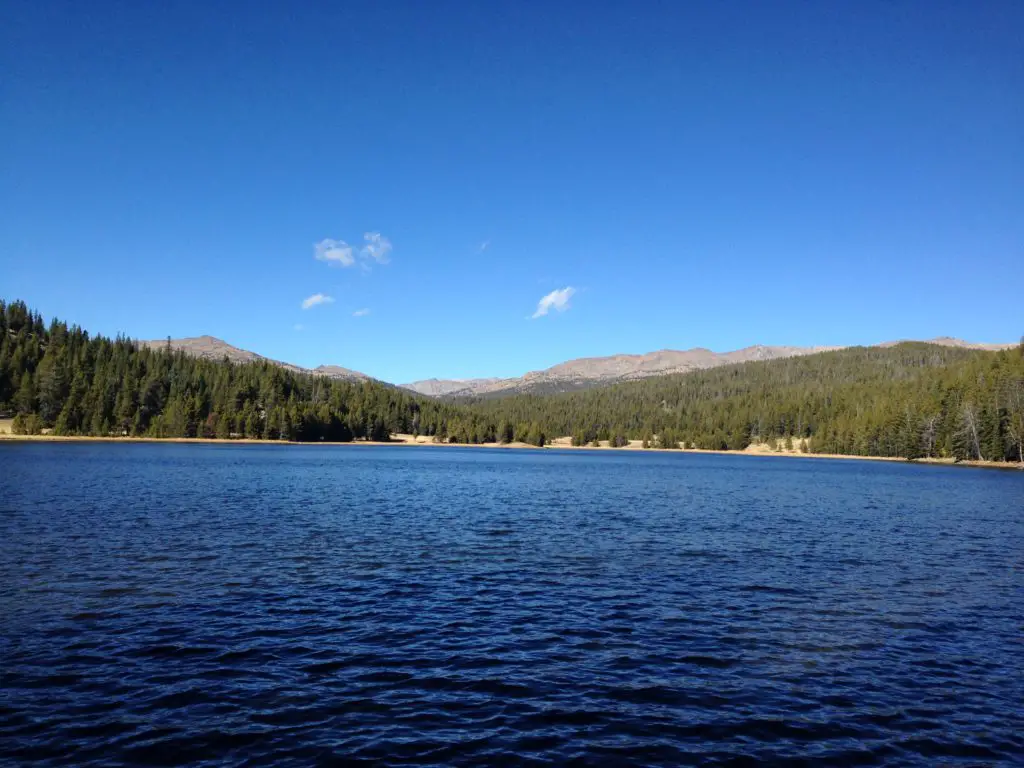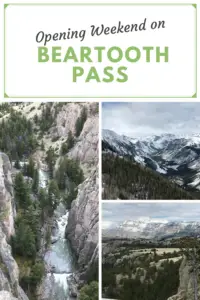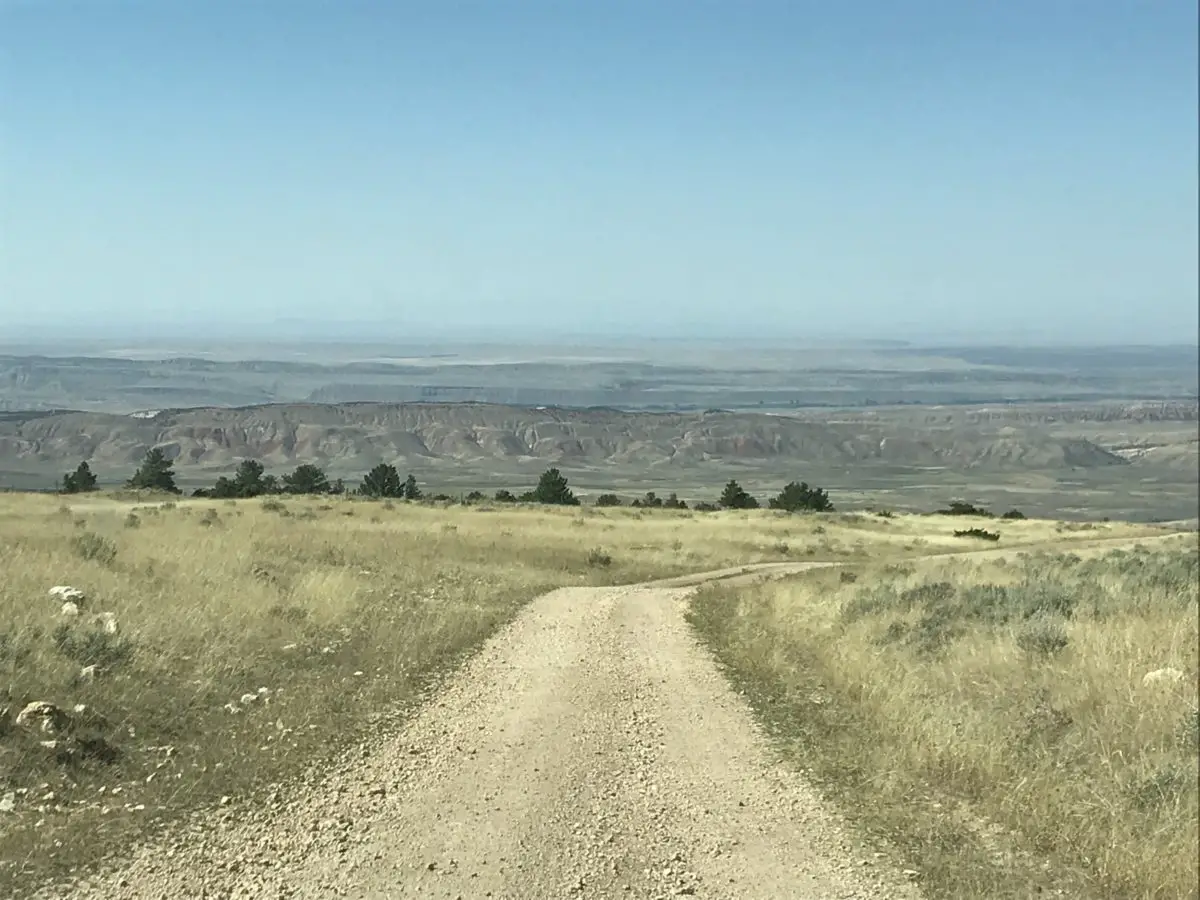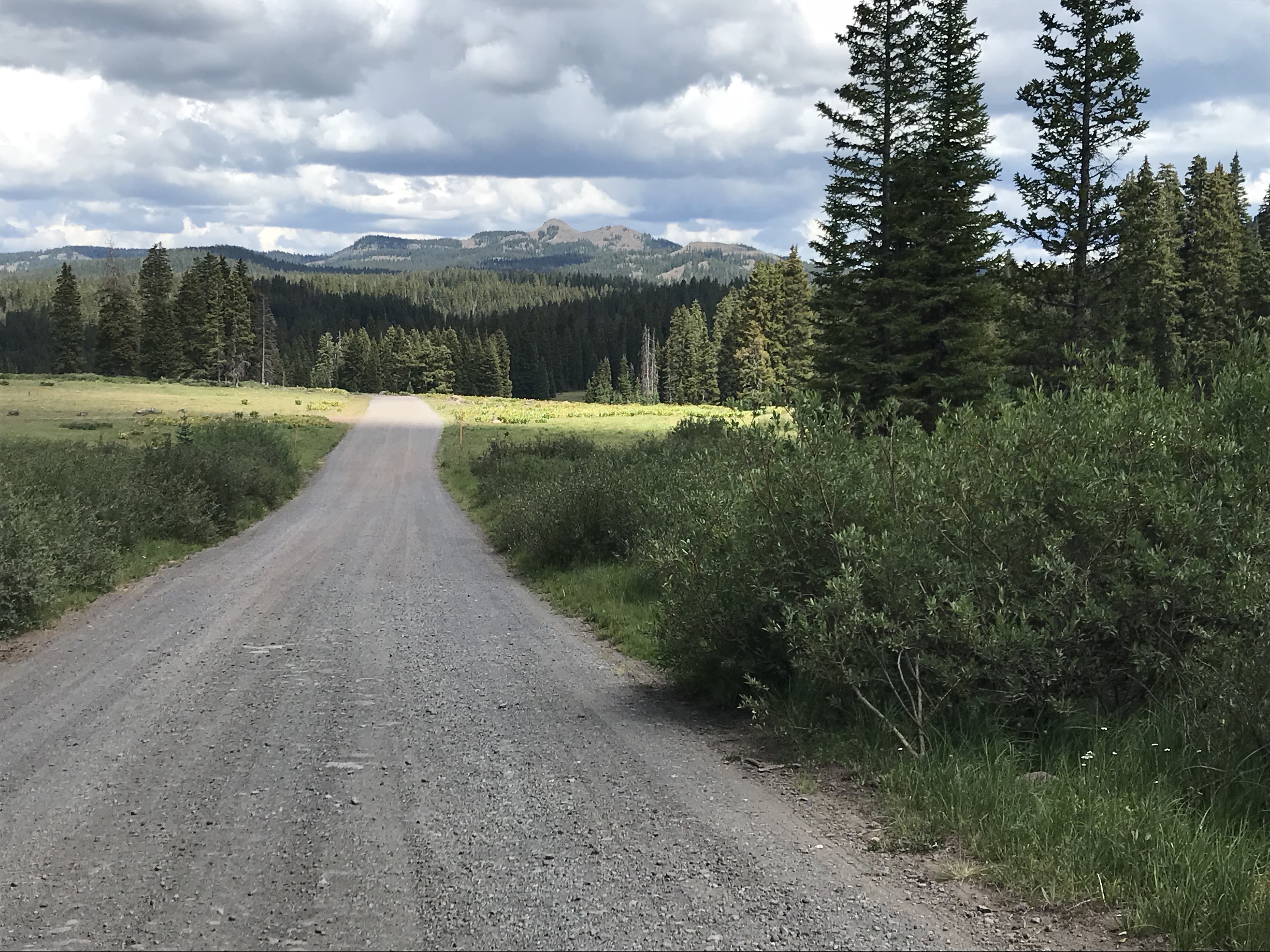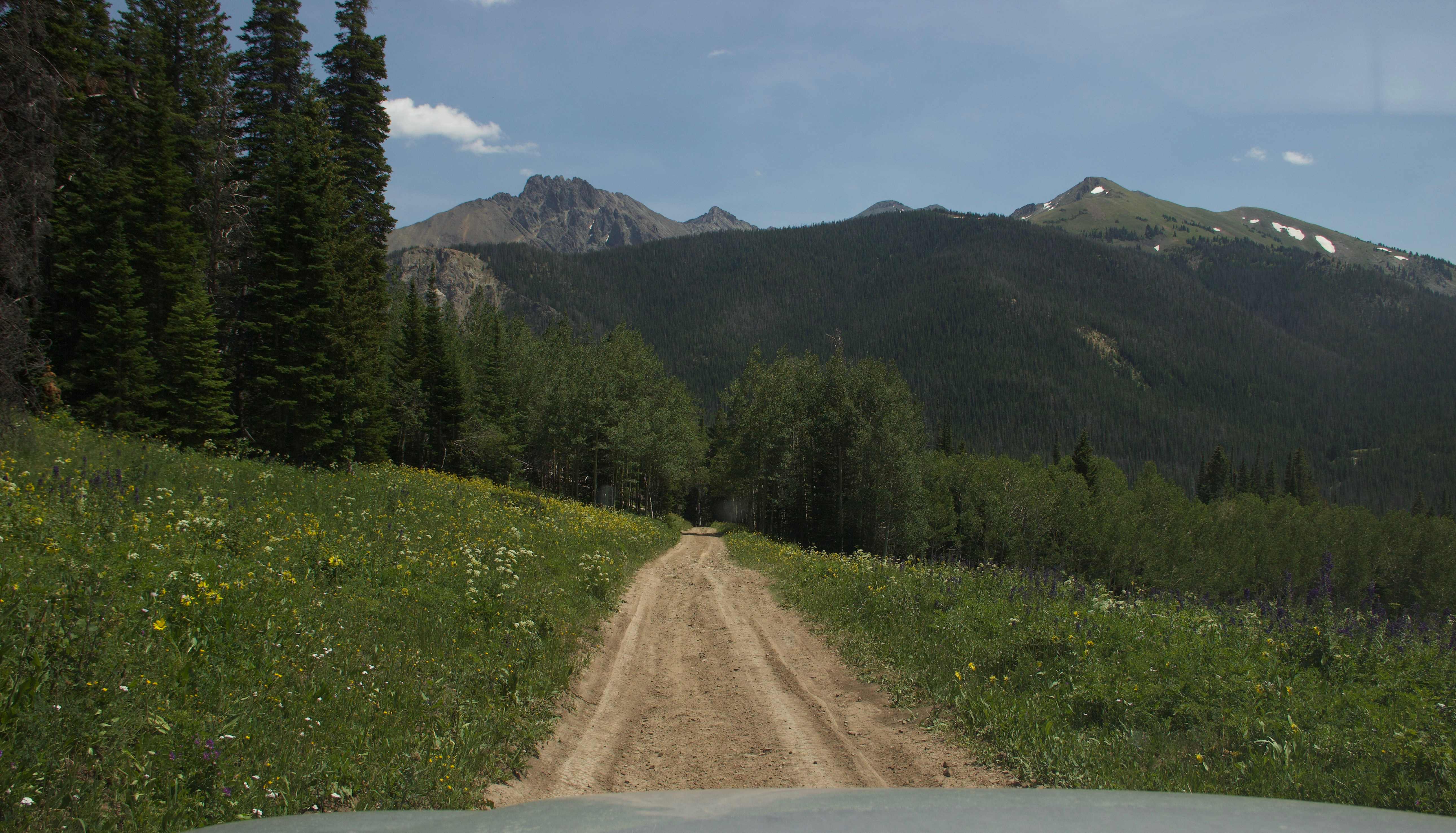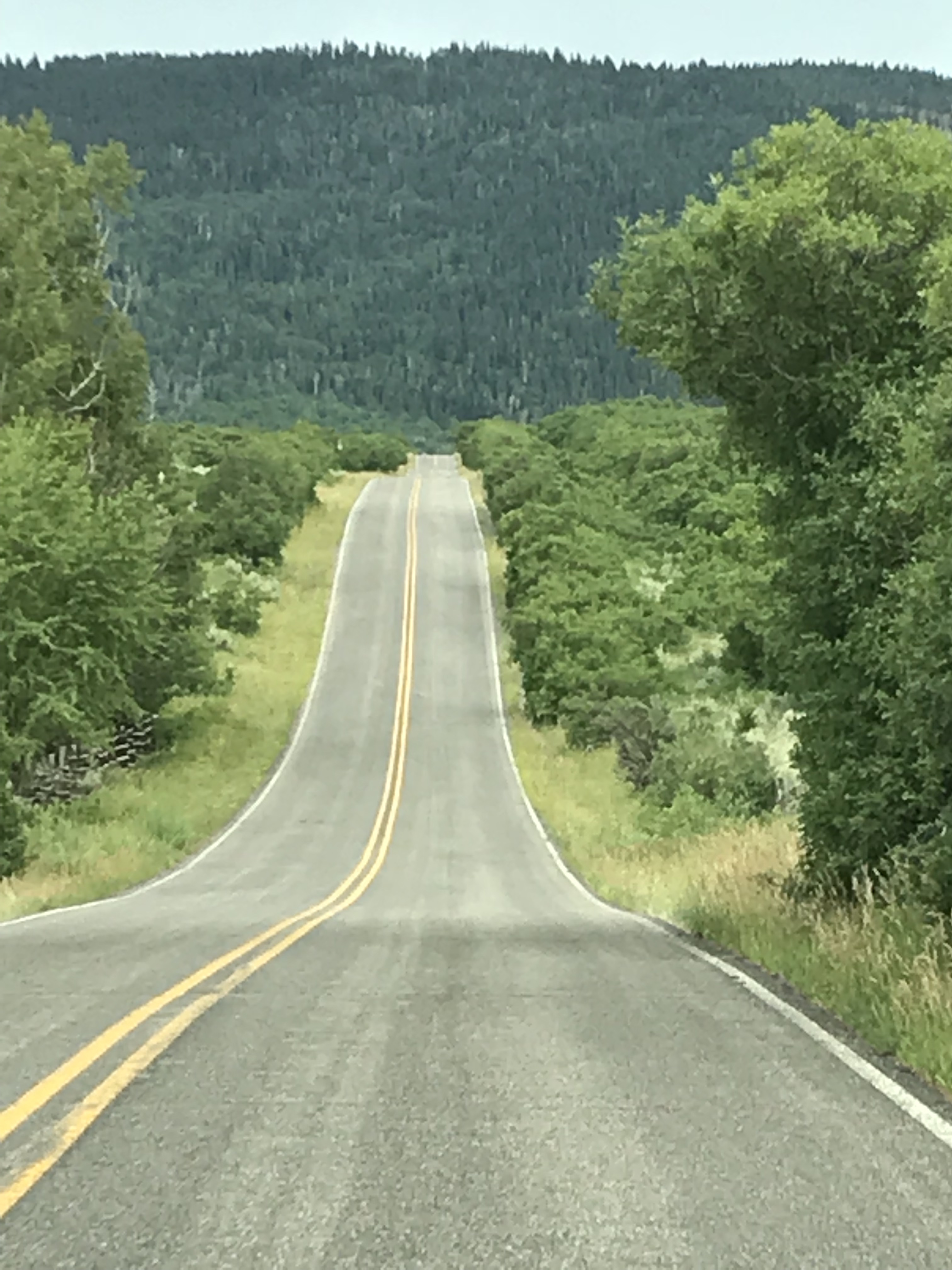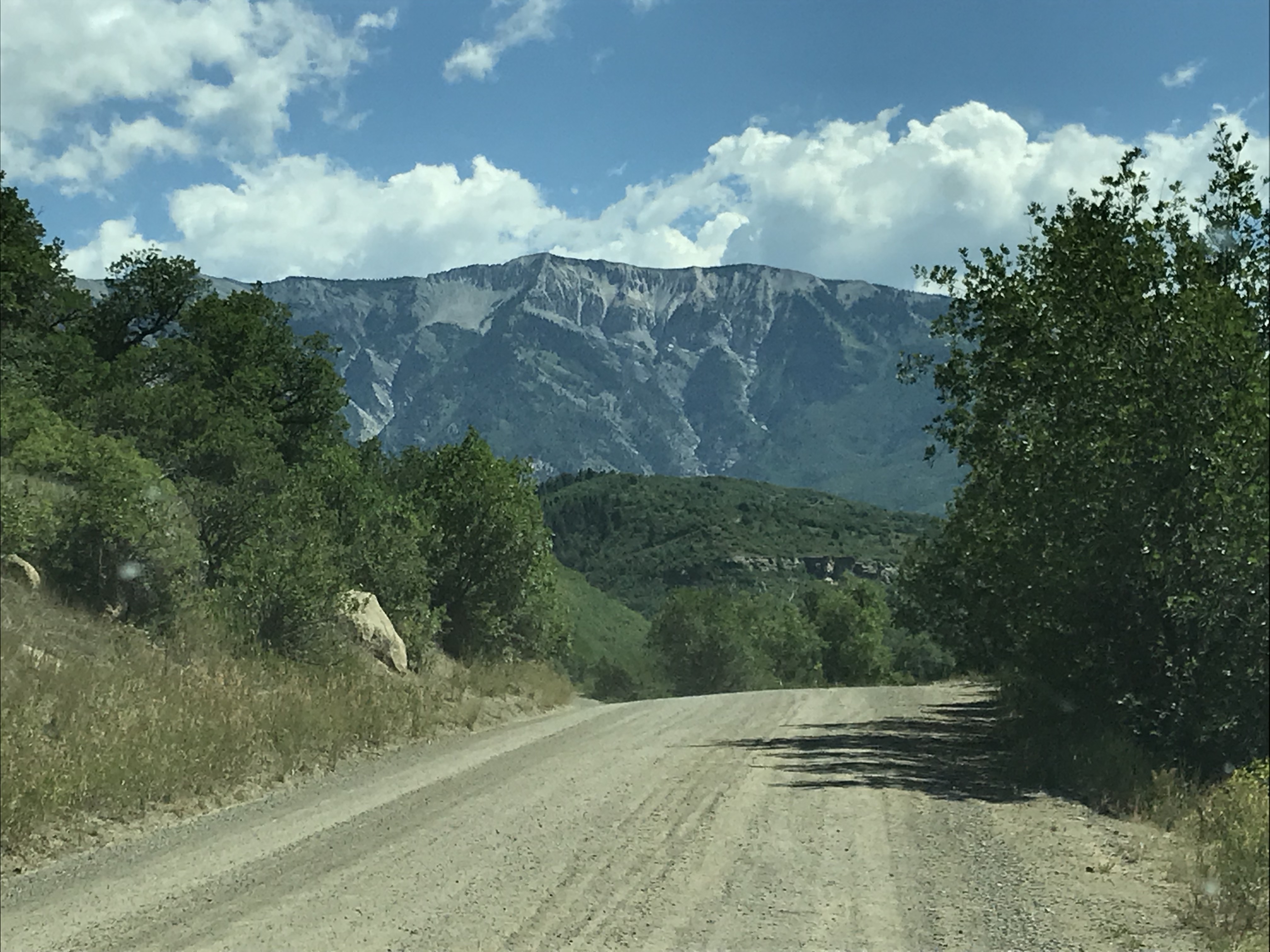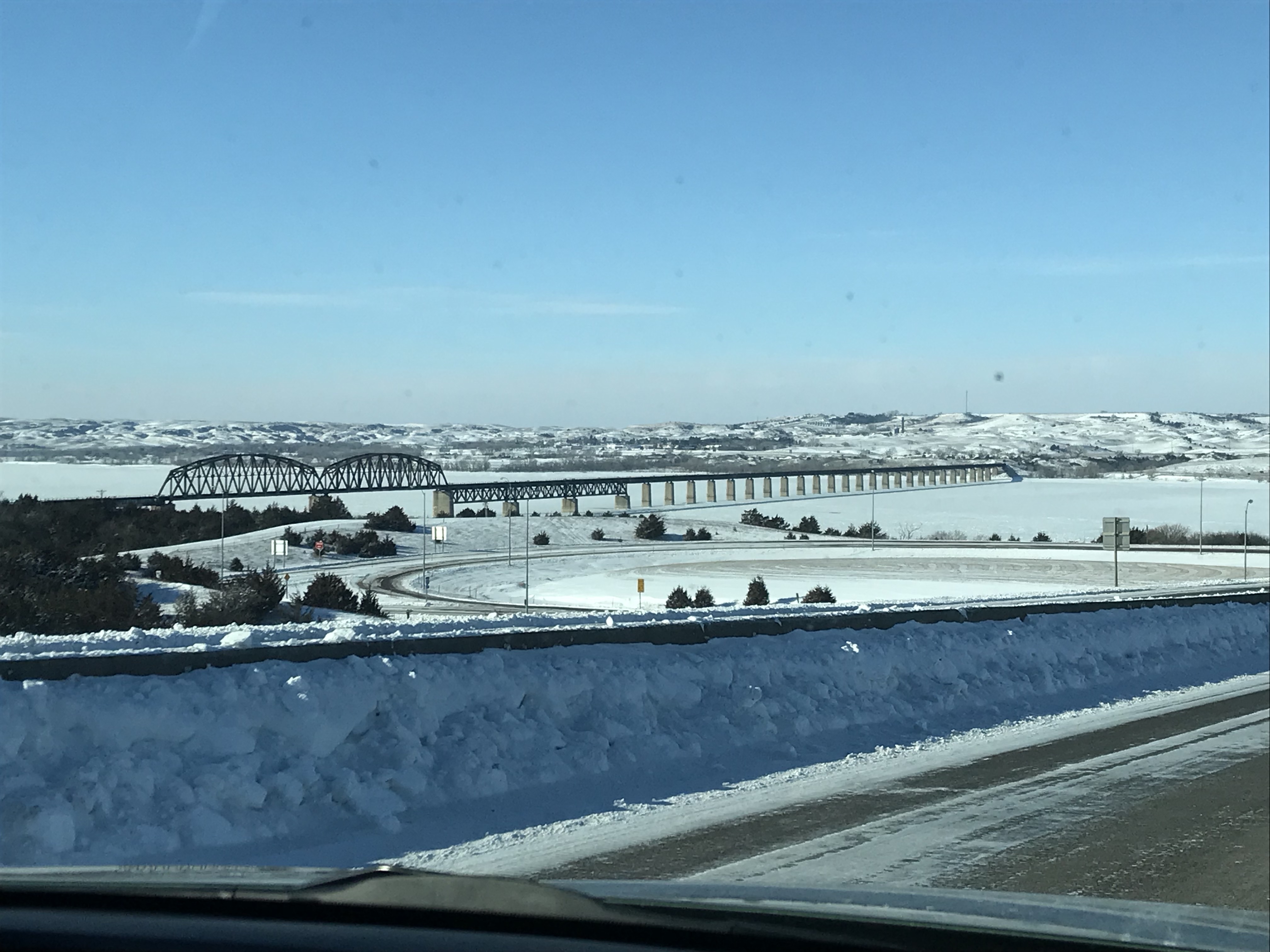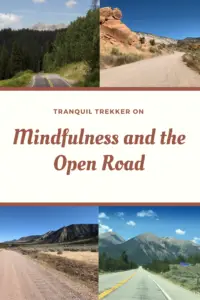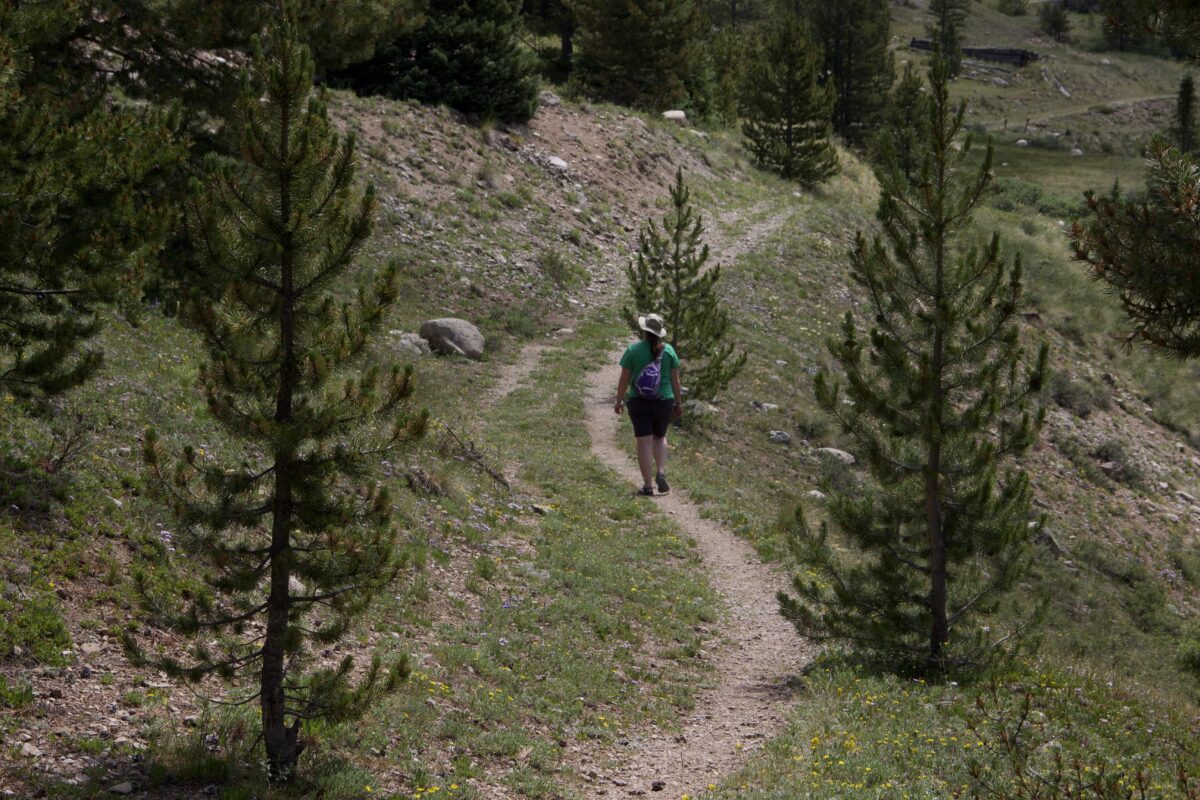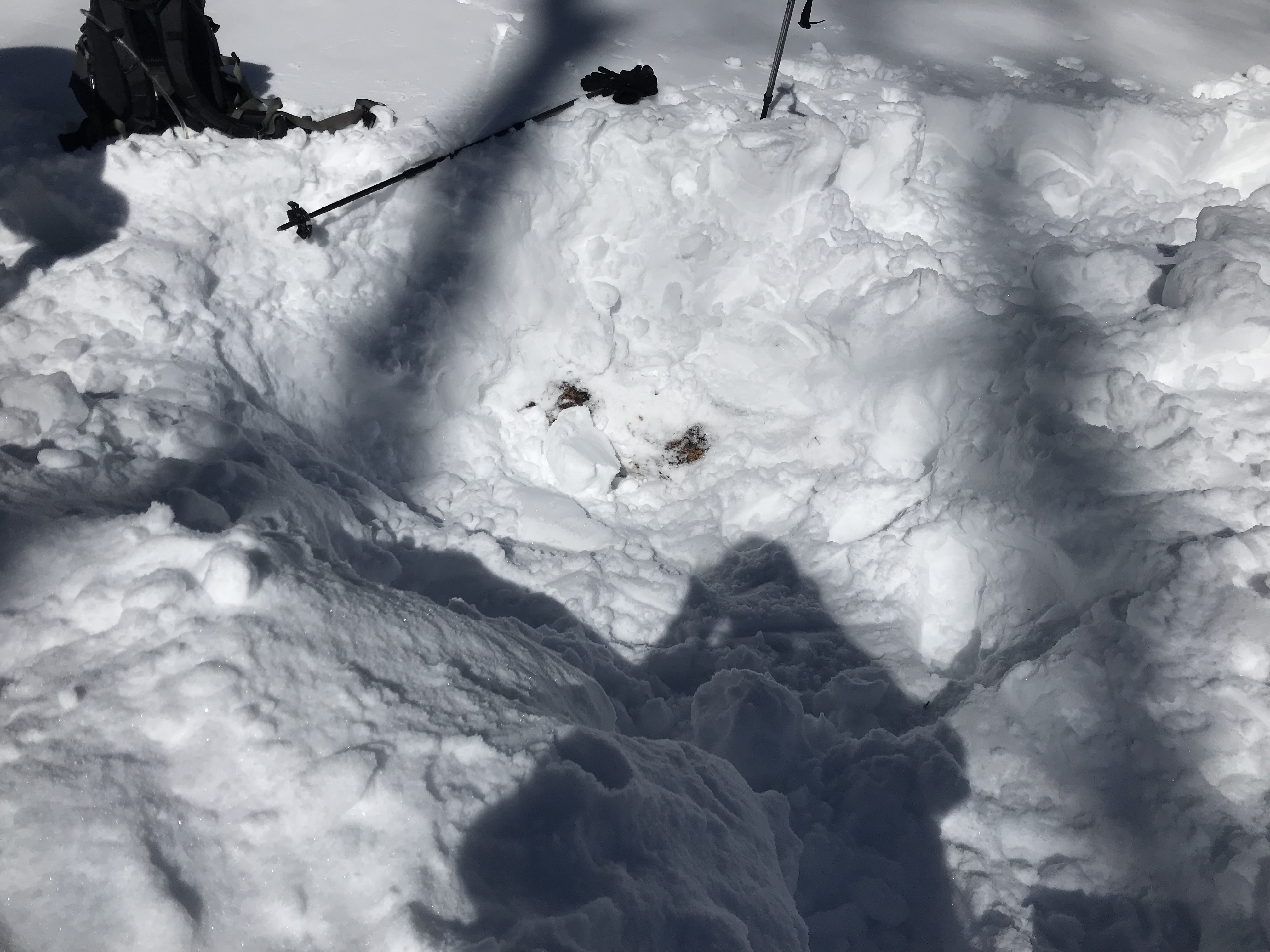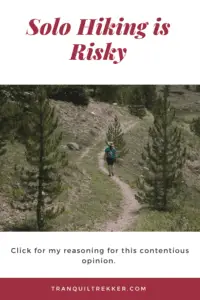Well, kids, it’s that time of year again! Thanksgiving is over, the turkey has been eaten, you may have gotten some good deals on holiday shopping…or better yet, you said, “FORGET THAT!” and chose to #optoutside to enjoy some fresh air and work off those Thanksgiving Dinner calories instead. Either way, it is now, FINALLY time to enjoy the Christmas season!
The tree is decorated, the lights are sparkling (both inside and outside the house), and Trans-Siberian Orchestra is booming from the speakers. Christmas has now been fully embraced by the Trekker household! (I told ya I wasn’t a Grinch! 
This time of year the Trekkers take part in what has become an annual tradition: Christmas Tree Hunting in the Black Hills National Forest for the Trekker Family Christmas Tree!
Some years, thigh-high snowdrifts can make the hunt exceptionally challenging (this is especially true when you find yourself attached to a rambunctious pup who happens to LOVE the snow! 😝 {Mr. Trekker plays lumberjack, carrying the tree and saw. 😮})
We load up the “old family sleigh” (otherwise known as Mr. Trekker’s 4WD truck) and head out to our favorite, tree cutting spot (no, I’m not going to tell you exactly where it is. We’ve got our eyes set on other trees up there for future years! 😉)
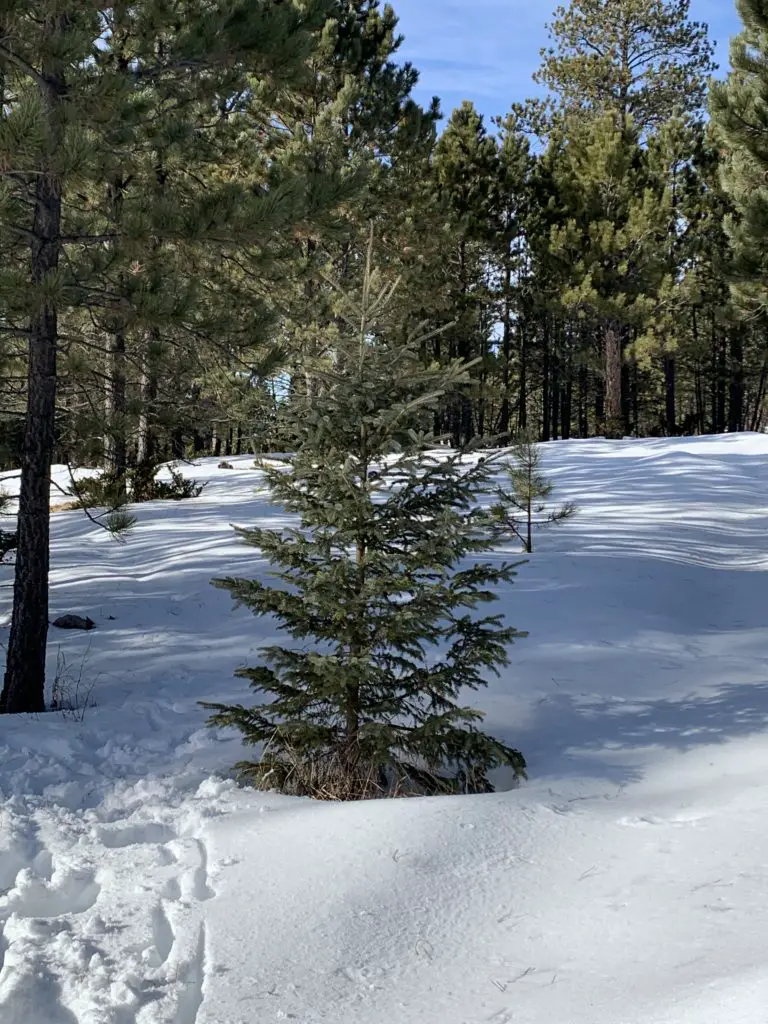
Where do I get a permit for hunting Christmas trees in the Black Hills?
The Forest Service encourages the practice of hunting Christmas trees in the national forest to assist them in maintaining healthy forest spaces. Also, there is nothing better to compliment the Christmas Season than the smell of pine in your living room!
You do need a permit to cut a Christmas tree in these areas. They are $10 each (max 5 per person) and you have to go to a Forest Service office or certain private vendors to obtain one.
For information on how to go about acquiring these, check the Forest Service website (where you can buy and download a pass online).
There are some restrictions on which parcels of land you can acquire the trees from and all usual restrictions pertaining to vehicle travel still apply. Also, be sure you are on public, Forest Service land and not Private Property when tree hunting.
Something to be aware of if you’re going tree hunting in the Hills…these are not “tree lot” or “tree farm” trees. These are WILD, “free-range” trees. 😮 They haven’t been trimmed and shaped on a farm with others their size, placed a perfect distance apart for ultimate fullness. They’ve been forced to fight for sunlight and nutrients among others of their kind, some that are MUCH bigger.
They may have had to grow around other trees or obstructions or had to survive vicious storms and wind, or the damage caused by animals. Basically, these trees look how they are SUPPOSED to, without human intervention. 😁 The chances of finding “the perfect tree” are pretty slim, but you’ll know when you find the “right” tree. It calls to you. 😉
Where are good places to hunt for Christmas trees in the Black Hills National Forest?
There are a variety of pine trees available in the Hills for this purpose, ranging from the stereotypical, Christmasy, spruce tree to ponderosa pines. I personally recommend the Black Hills Spruce which is usually found on north-facing slopes of hills and wetter, lower-lying areas. We tend to favor the central to northern Black Hills in our searches.
Be warned, many roads in the Hills are Forest Service roads (or old logging roads) which means they are dirt, rutted, and not maintained AT ALL for winter travel. Conditions in this area this time of year can range from dry, dusty forest roads, to mud, to–frequently–several inches or even feet of snow!
I would not recommend driving on them without a four-wheel-drive/high-clearance vehicle. Some of the roads don’t require this but much of it depends upon current conditions and varies year-to-year (or even week-to-week and day-to-day. Heck, let’s face it, in the mountains, it can vary hour-to-hour!)
Usually, the roads are snow-covered, sometimes deeply. Some years (moreso recently) there is little snow and the roads aren’t muddy, so even my all-wheel-drive CRV could suffice, though these are not normal years. Also be aware, as with many places in the Hills, if you were to become stuck or mired…it will likely be quite a hassle (and quite expensive!) to get out–and that’s once you hike somewhere you can get a cell signal to call for a rescue!
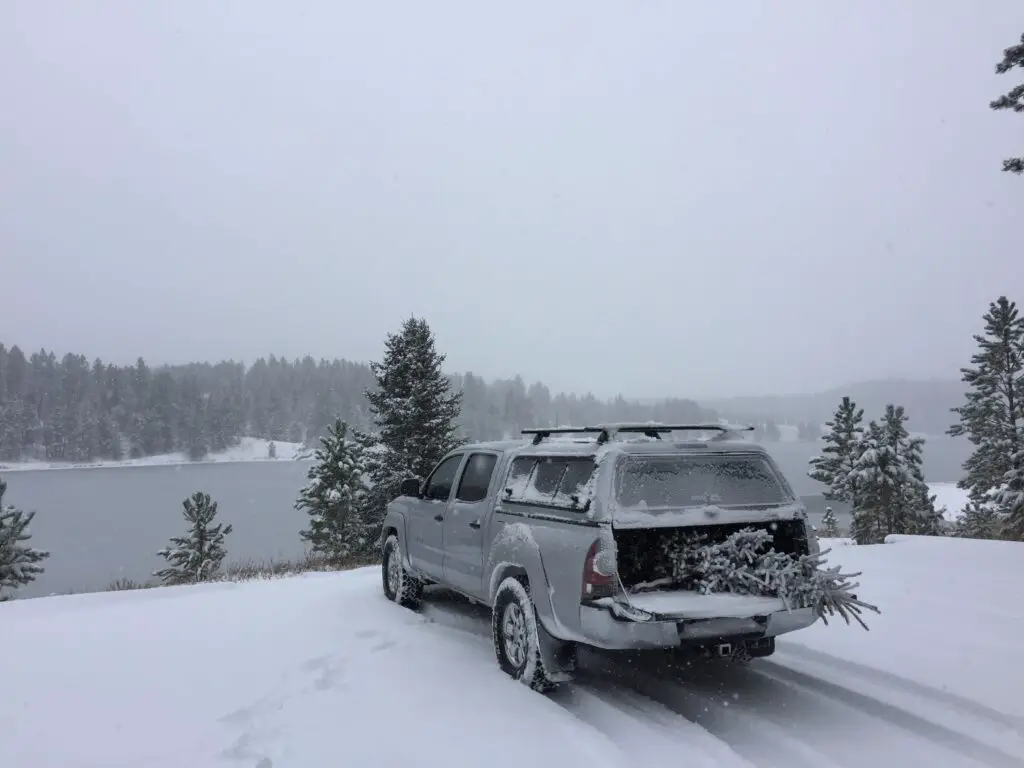
We have a favorite area we frequent (nope, still not going to tell you where it is!) I will tell you this much, the mountains west of Deerfield Lake have an abundance of spruce trees (assuming that’s the type you’re searching for.) Flag Mountain Road is one of our favorite routes that takes you to some good hunting spots. (That’s ALL the helpful info you will get from me!)
The difficulty with this location is that it usually receives some of the heavier snowfall in the Hills. Even if there is little to no snow in the lower elevations, what falls as rain in these locales often falls as snow in the higher portions of the Hills. And, as I mentioned previously, as is true throughout the Black Hills, cell service in this area is often spotty (if it exists at all). So if you do get stuck and/or your vehicle becomes disabled, you may have a lengthy walk–possibly in deep snow–before you can call for help. Also, watch your step when you venture off the roads. The deep snow can easily hide stumps, downed trees, and other deadfall that can trip you up.
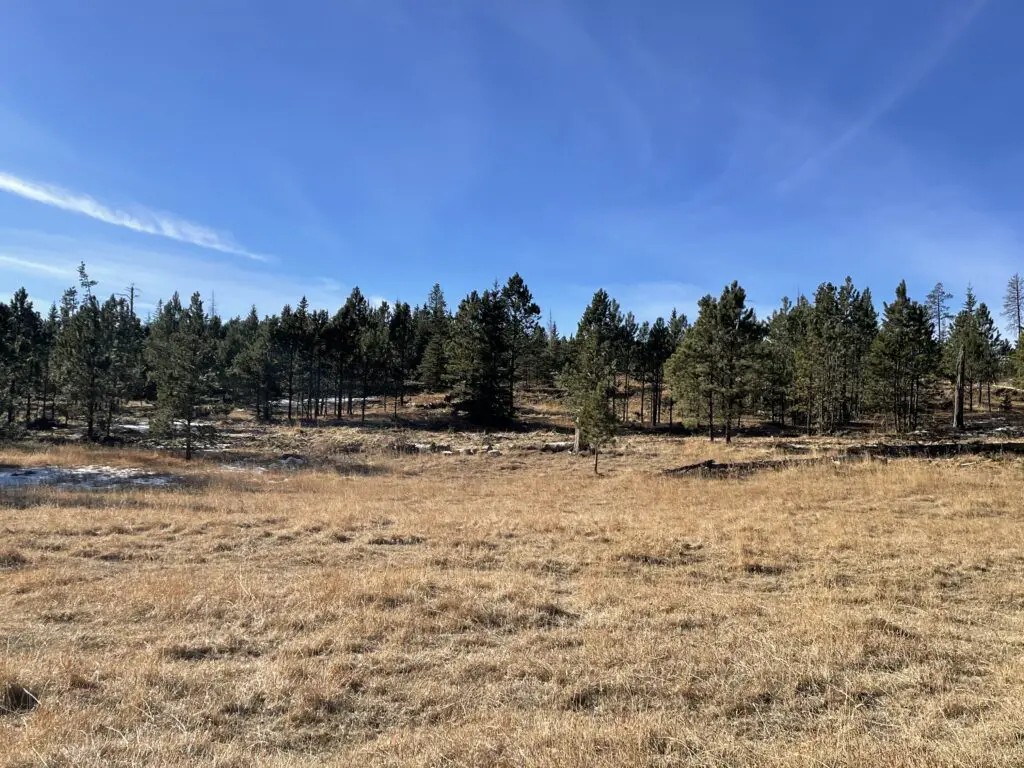
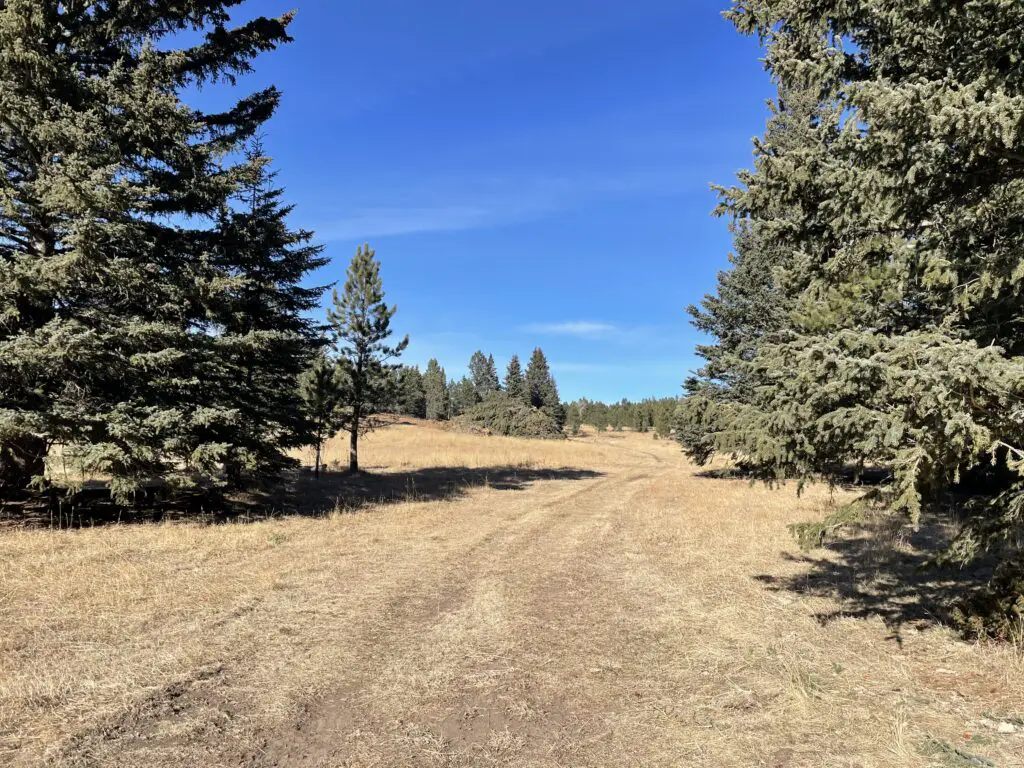
Mr. Trekker and his truck usually handle the conditions well, we’ve only gotten stuck…a few times. 😇 Mr. Trekker didn’t mind too much though, it gave him a chance to expand his trail, snow-driving skills (and the opportunity to play with his tire chains. 🙄)
To be clear, we know this area well, such as which parts to avoid as the road winds through gullies that tend to drift. We always carry numerous options of recovery gear with us–and yes mom 
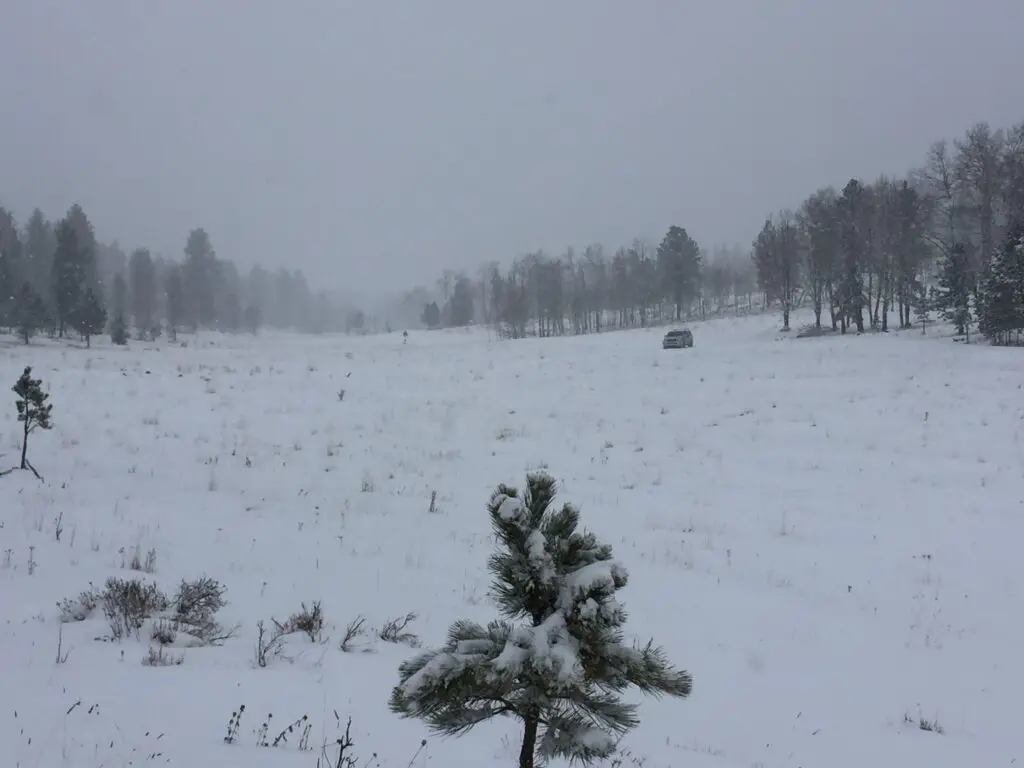
Our usual MO is to wander around one of our favorite hunting sites for a while…until both of us look across the meadow…and see IT, standing on the border between meadow and forest, with its much larger brothers towering in the background. You always have to wait for that “Griswold Family Christmas Tree” moment (and yes, Trekker family tradition dictates we watch that movie the night we go tree hunting as a necessary part of the Christmas season. 
If you’re really lucky, as you begin the search for the perfect tree it may start to snow gently…then it looks like a Norman Rockwell painting! A word of advice, we’ve learned the trees look smaller in their “natural habitat”, surrounded by their MUCH larger brothers. More than once we’ve had to cut a tree more drastically than we initially thought was needed once we got home and tried to fit it in our living room. We’ve learned if Mr. Trekker’s 6’4 frame can reach the top of the tree…it should fit in the house!
To Conclude
So, if you’re looking for a great place to cut down your own tree, while also helping the local forest stay healthy, don’t be afraid to get your hands a little dirty. Get out to your nearby national forest and get yourself a “free-range” Christmas tree. (It’s more organic than those tree-farm trees! 😉)
Christmas Tree Hunting in the Black Hills (or anywhere really) is an enjoyable, family-friendly experience. I encourage everyone to try it out and as always, be safe and smart when venturing out. The experience of trekking out to the wilds to acquire a tree from its natural habitat is incredibly exhilarating. It speaks to the instinctual lumberjack who’s hiding in the deepest, darkest depths of all of us. 
…just don’t forget the saw! 🙃
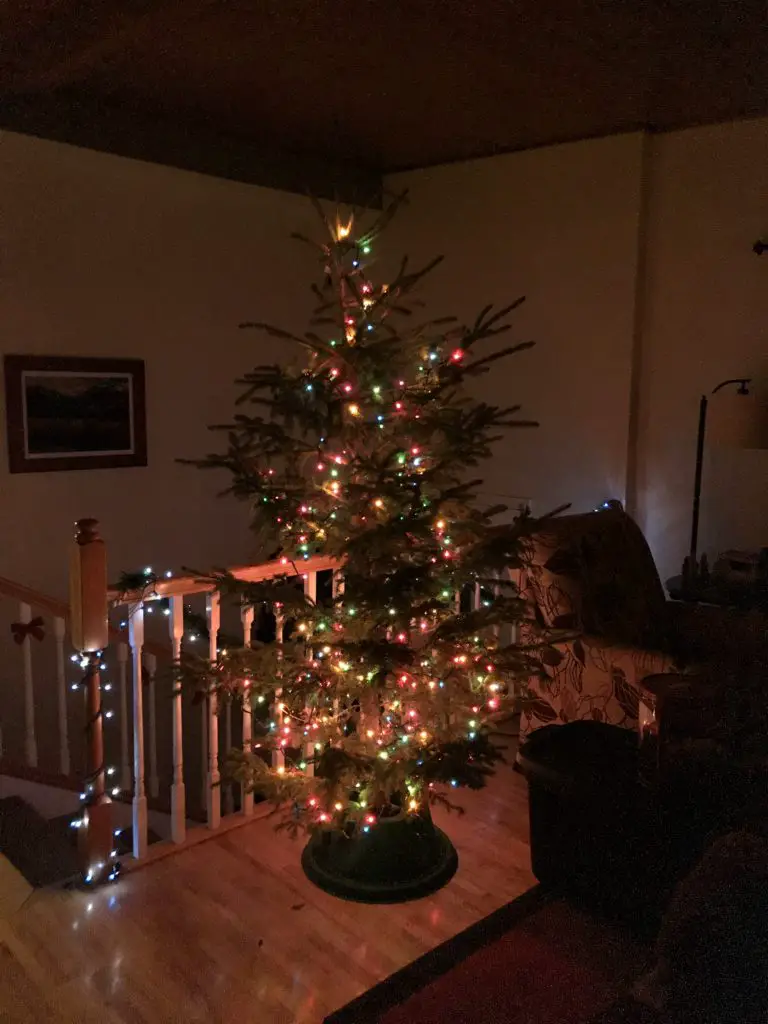
Have you ever ventured out to cut down your own family Christmas tree? Tell me about your experience in the comments!
Did you enjoy reading this post? Pin it!
Like what you read here today? Please feel free to leave a comment, like or share this post! Want to be notified when a new post is published? Add your email and click the “Follow” button at the bottom of the page or the sidebar to the right. By signing up for the email list, you will also receive a free copy of the Tranquil Trekker’s Top 10 Tips of Trekking Do’s and Don’ts!
You can also follow the blog on social media by clicking the links below!
*I earn from all qualifying Amazon purchases
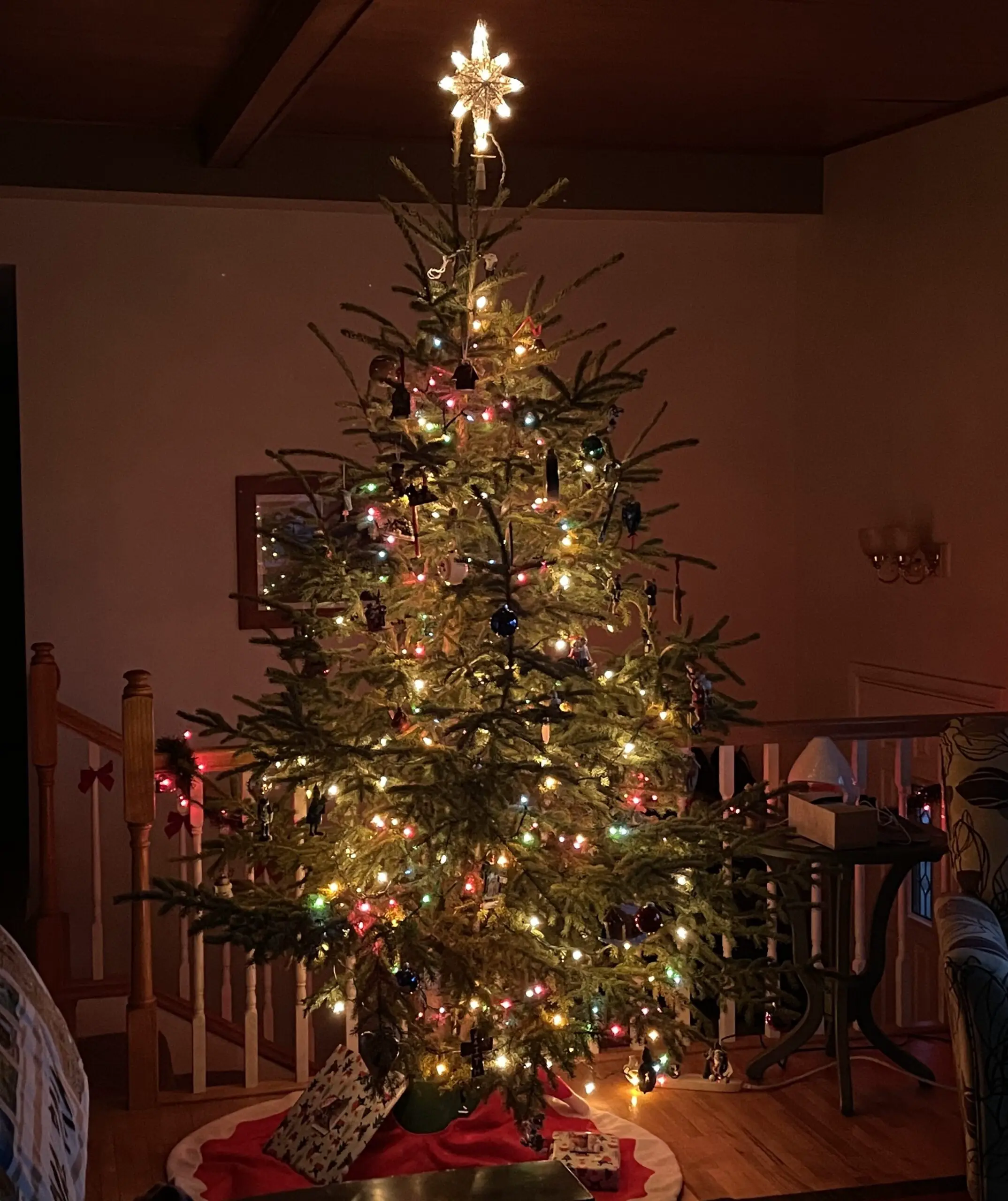
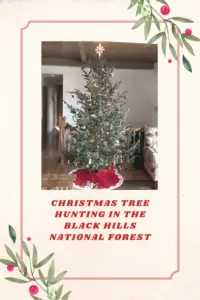
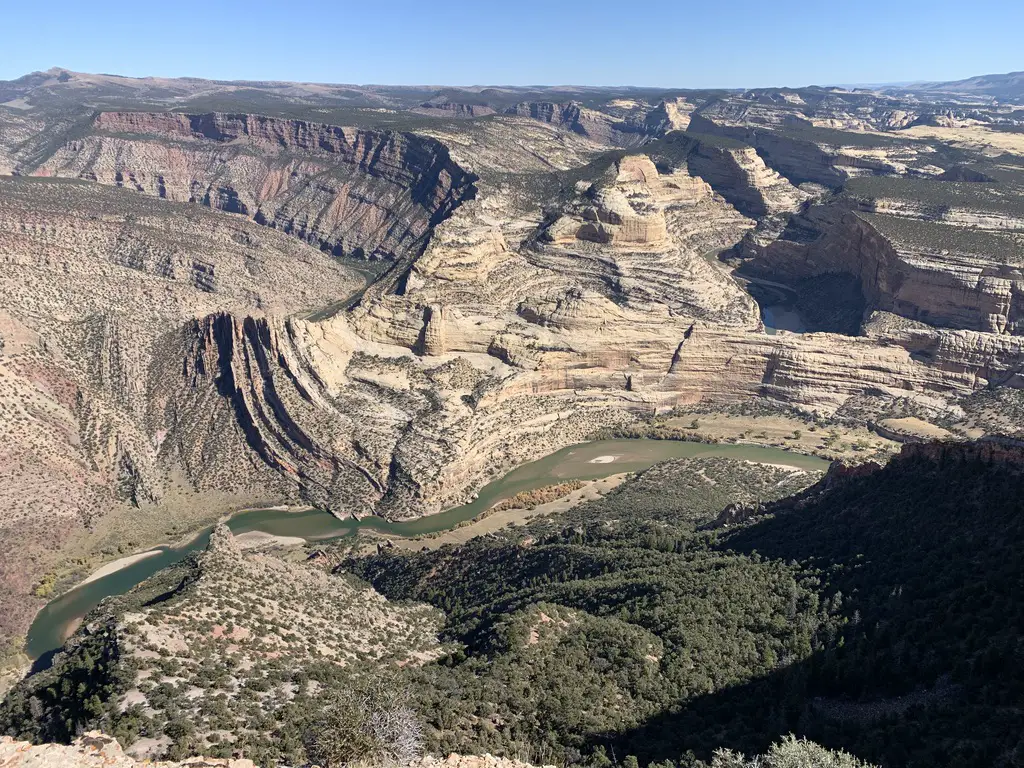
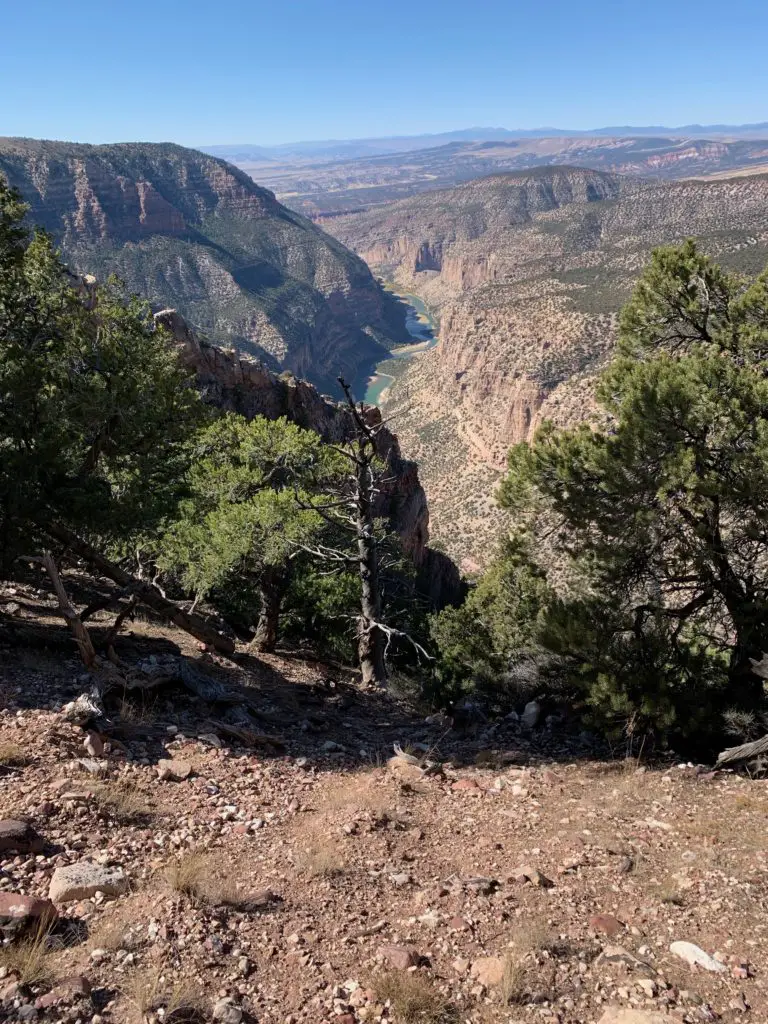
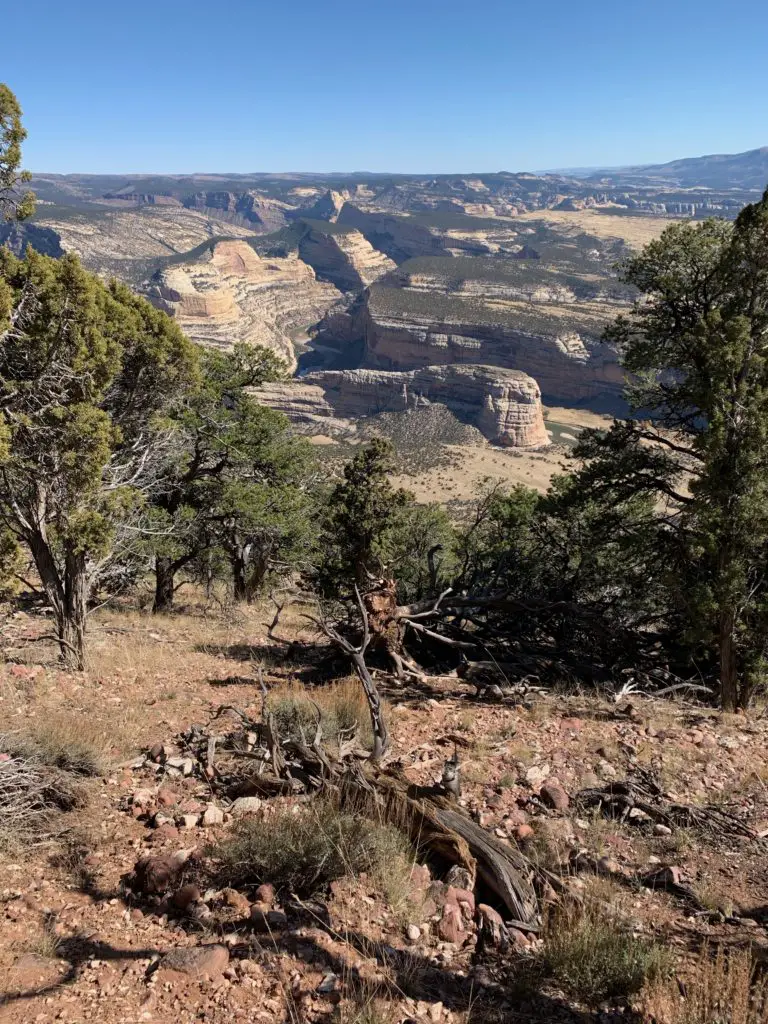
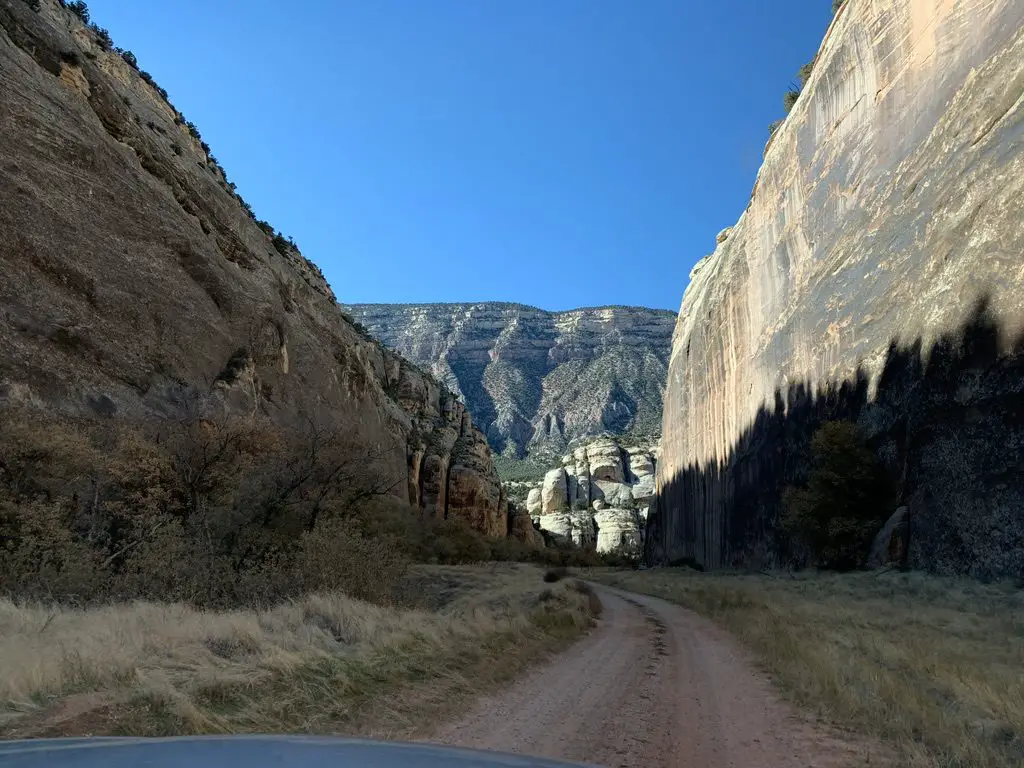
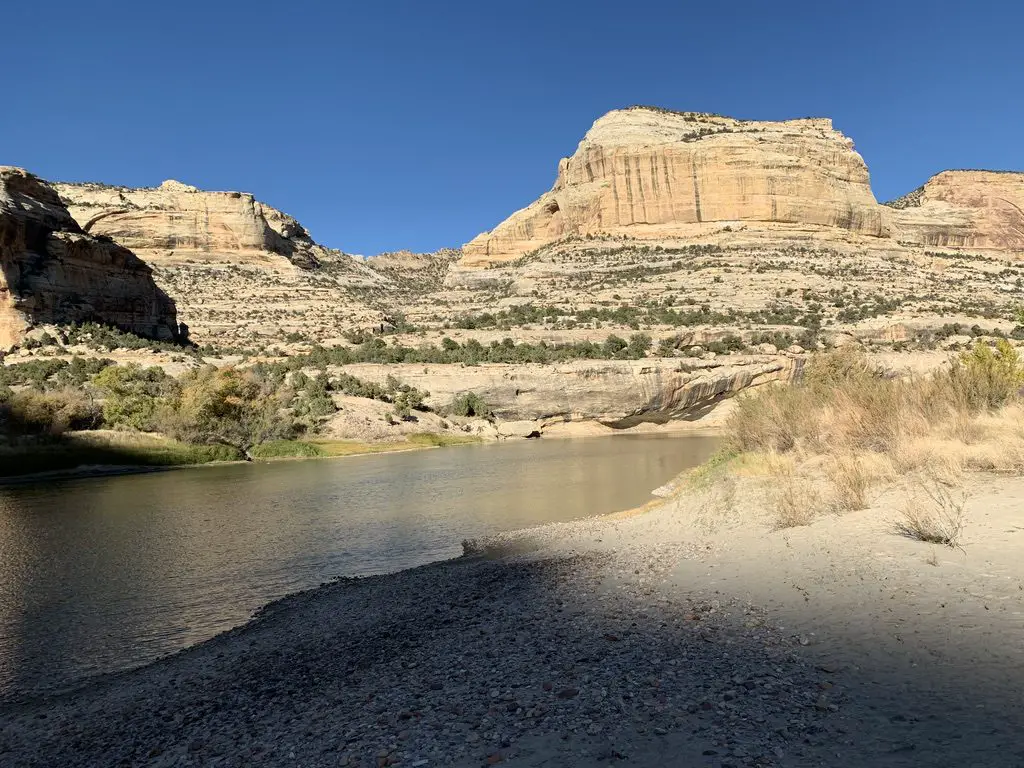
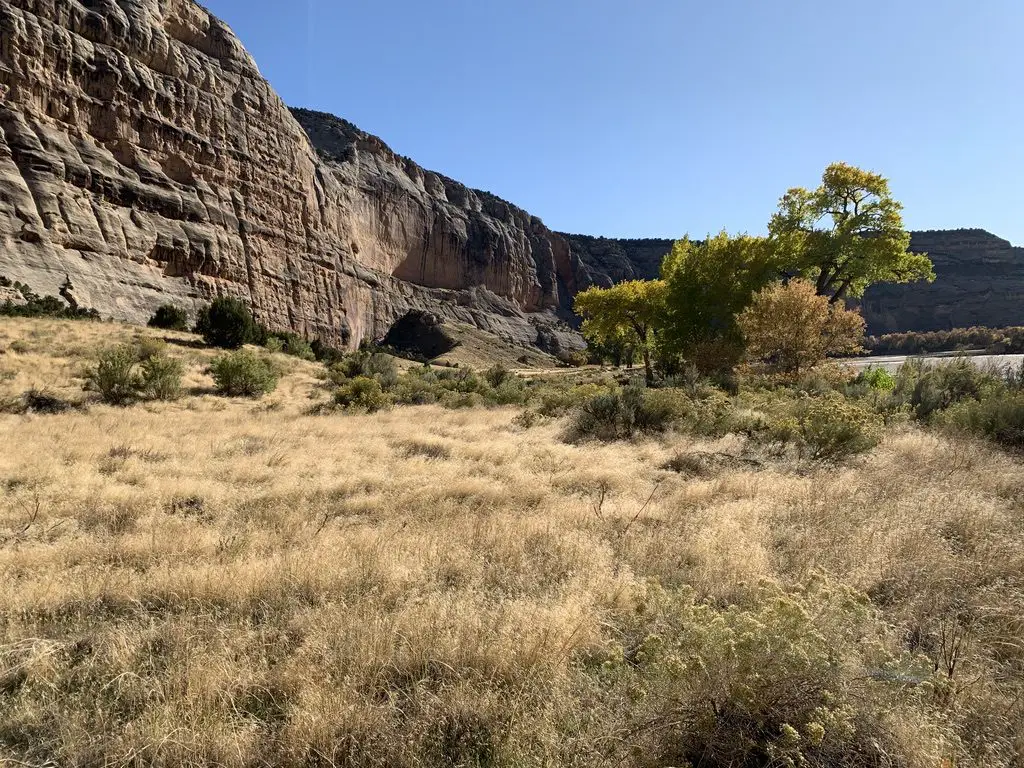
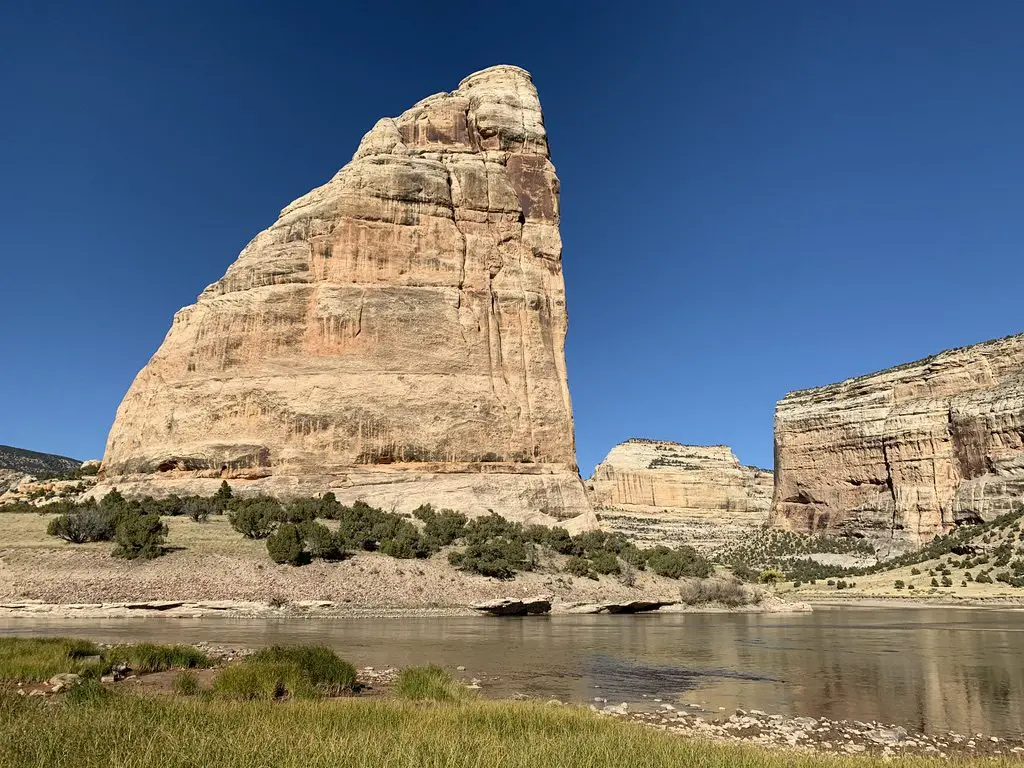
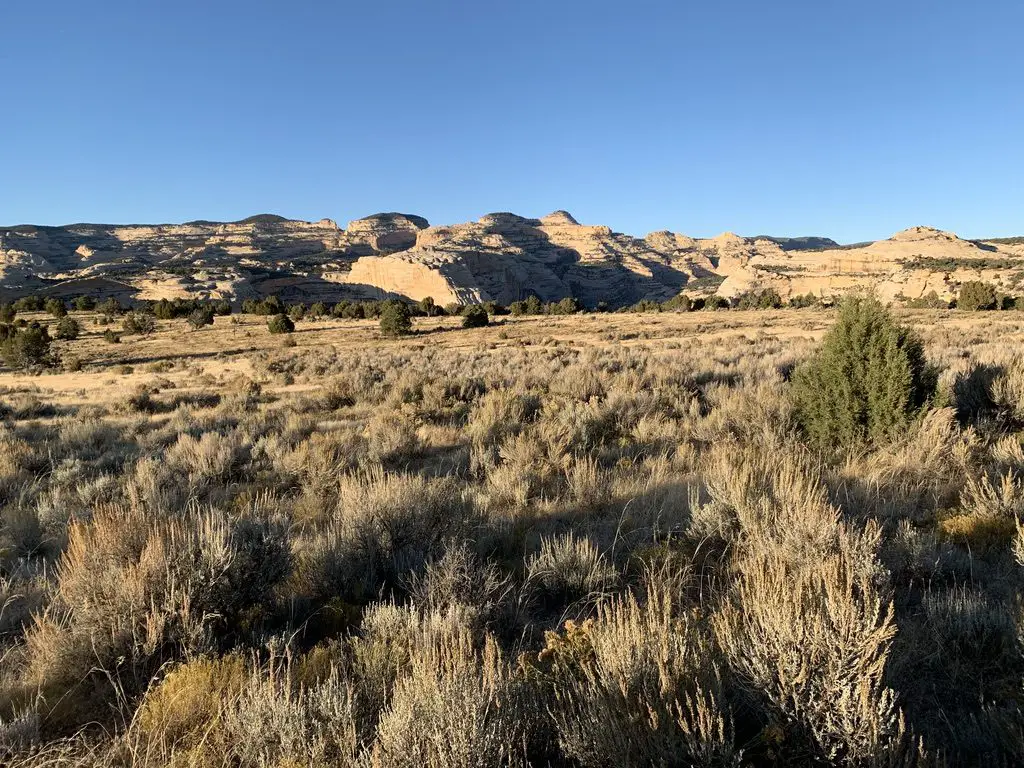
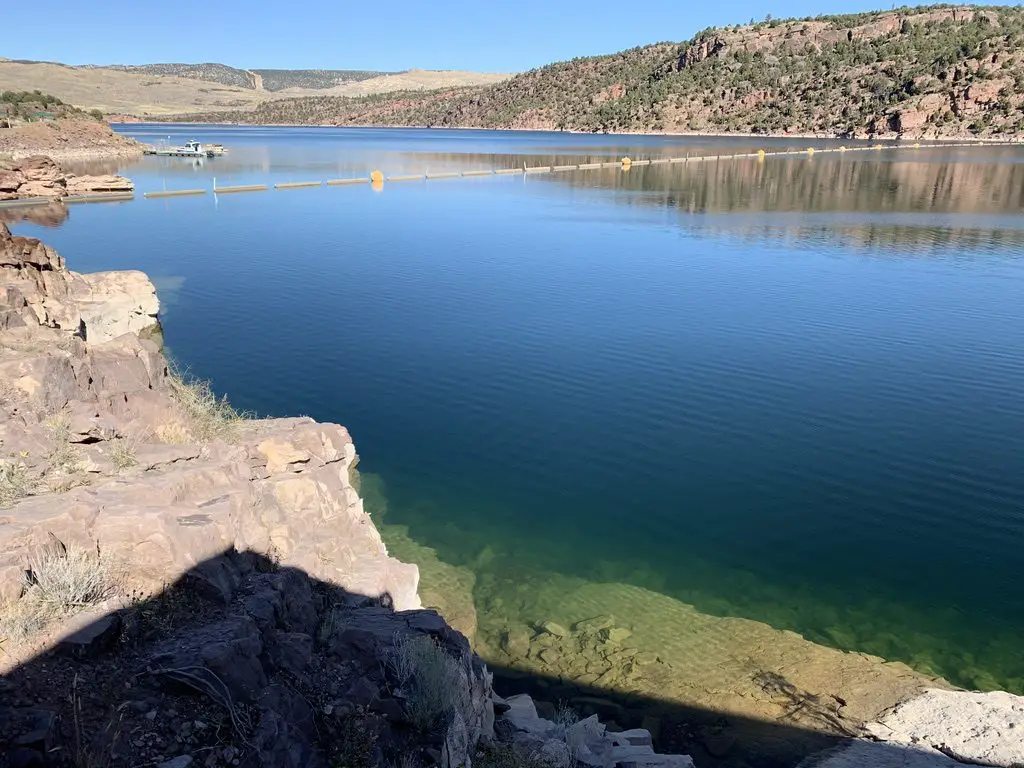
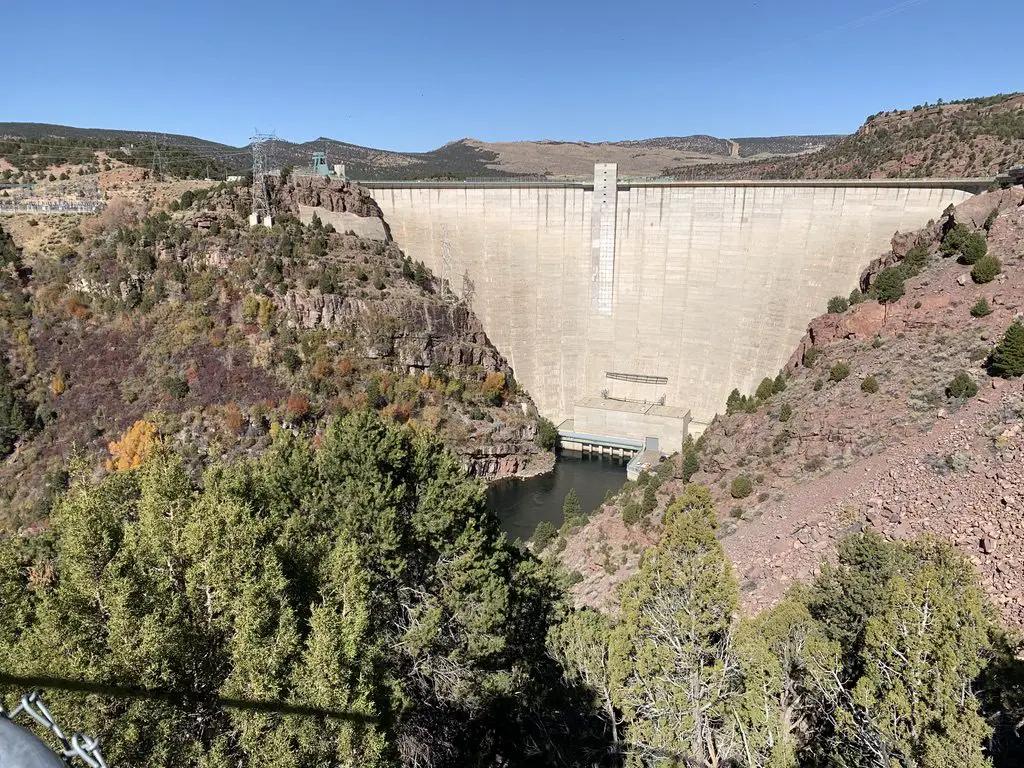
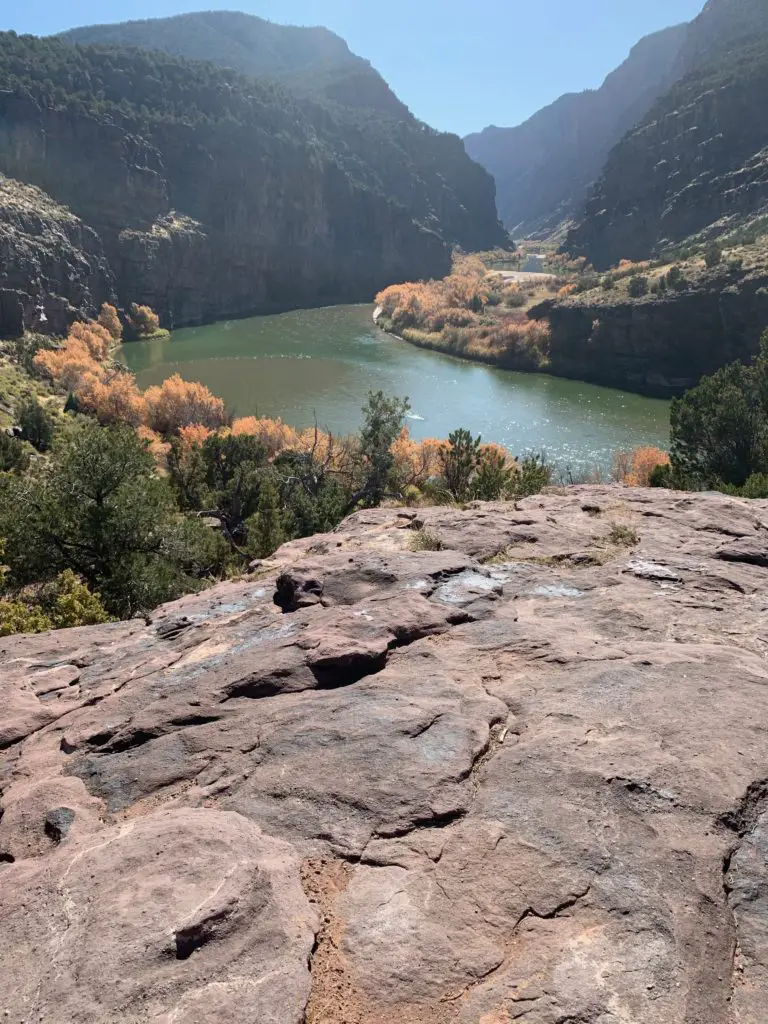
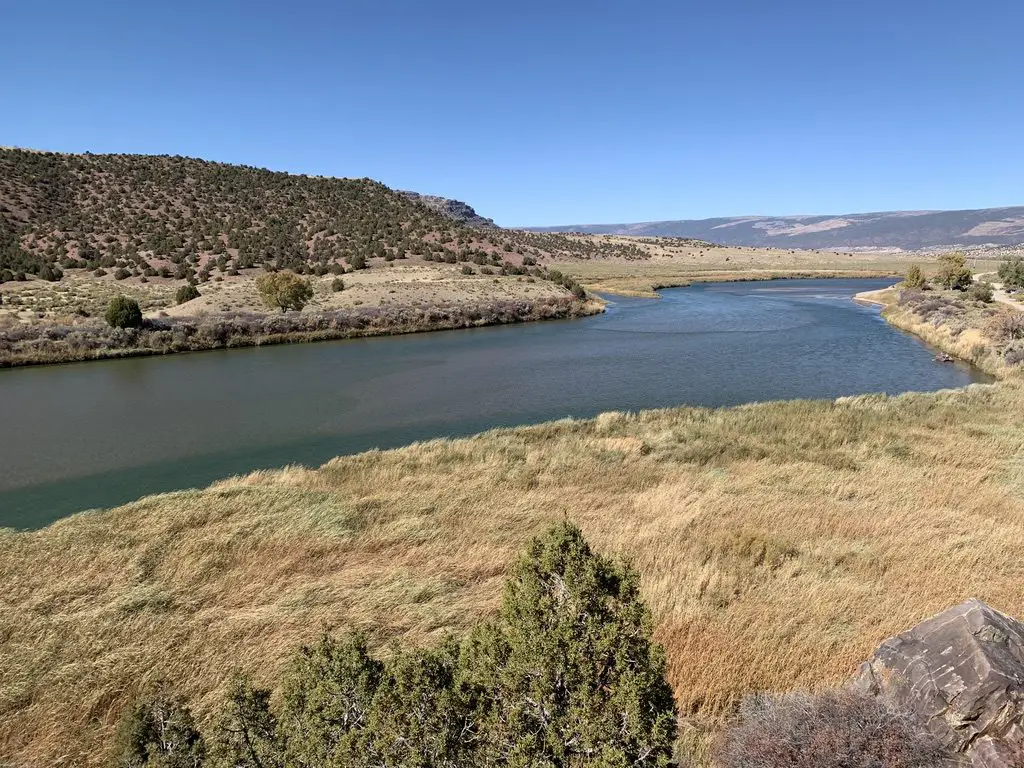
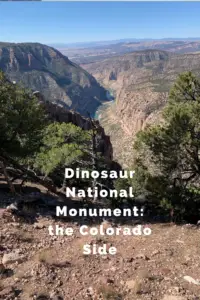
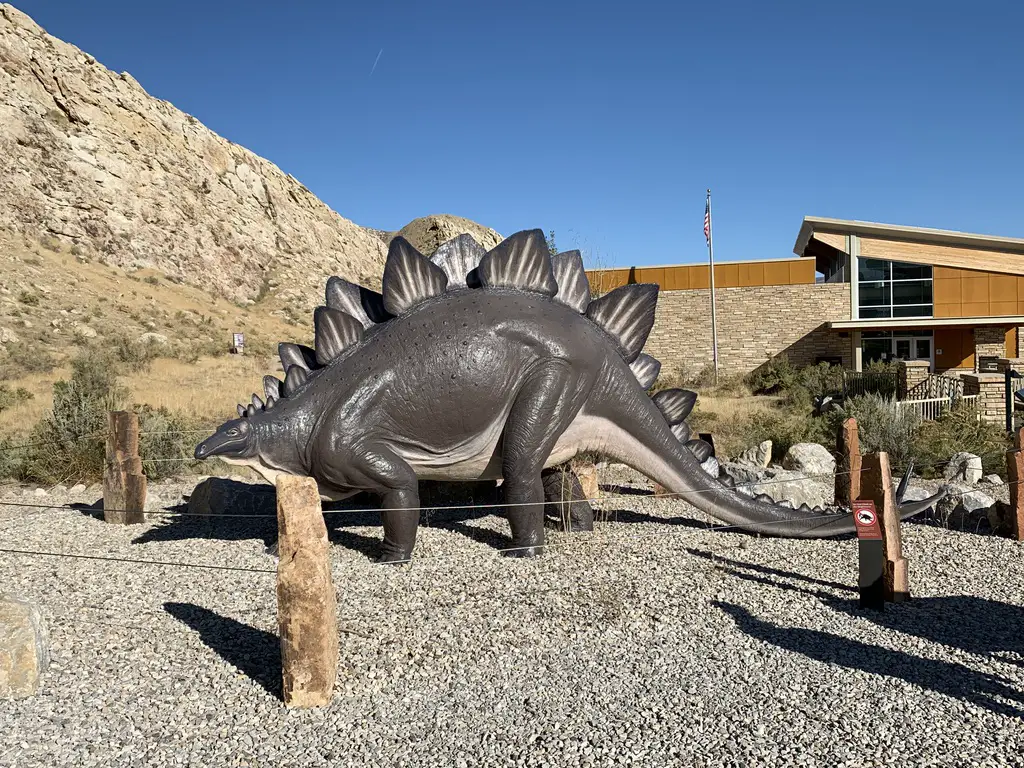
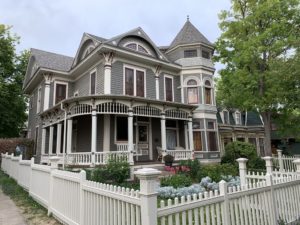
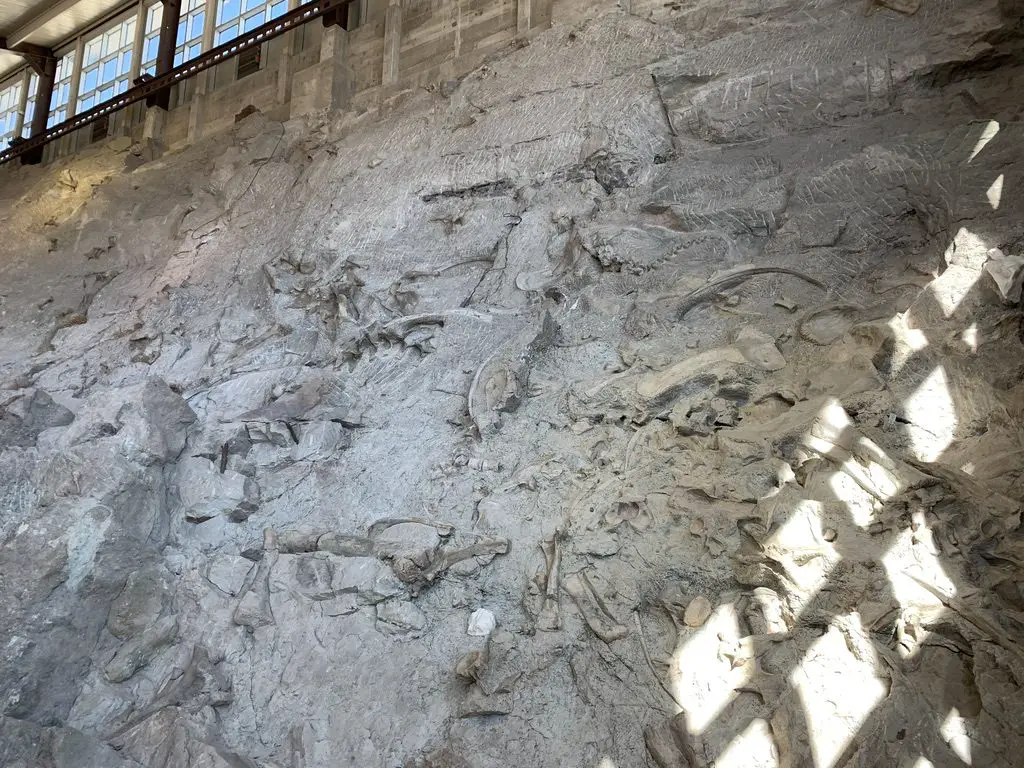
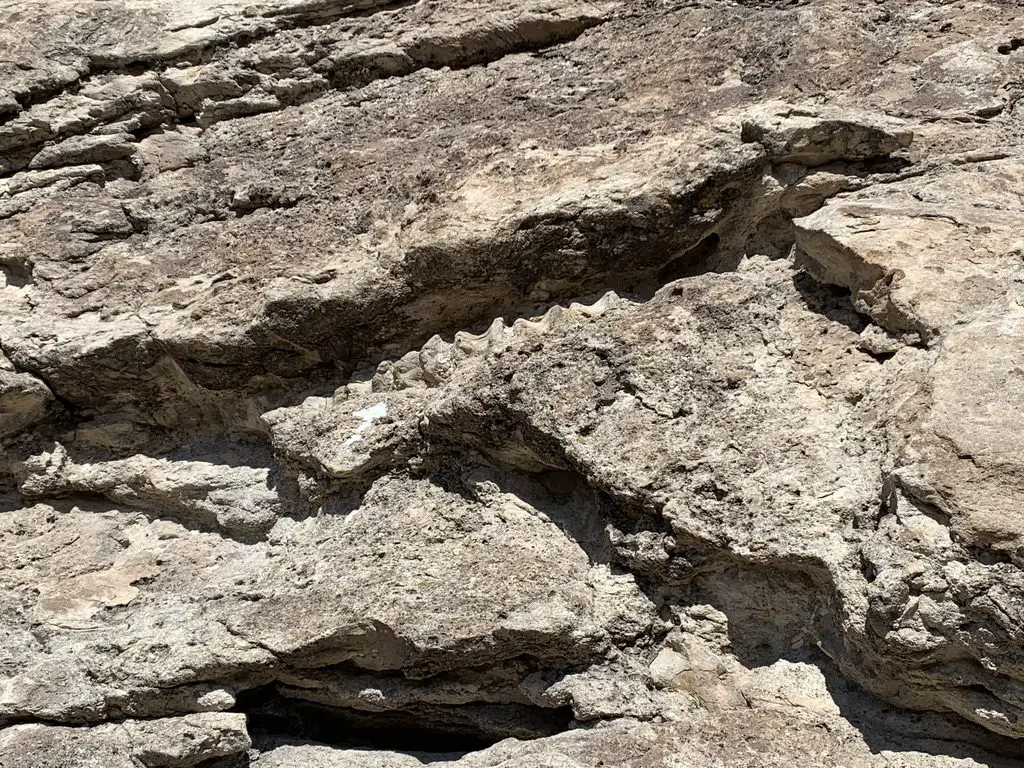
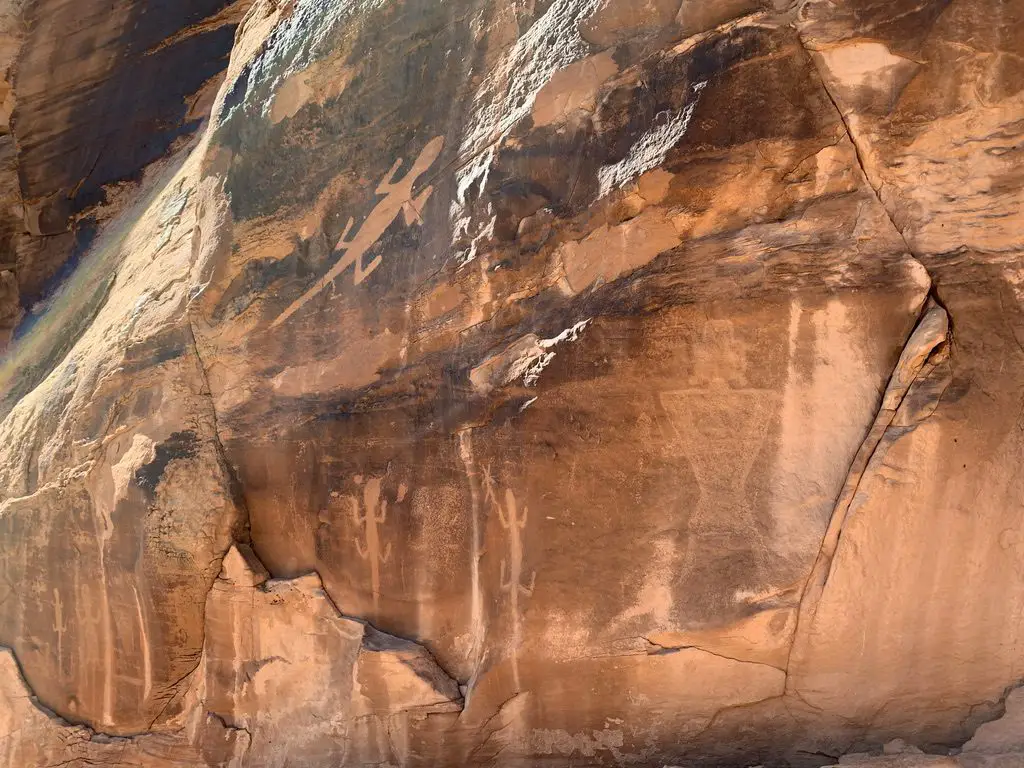
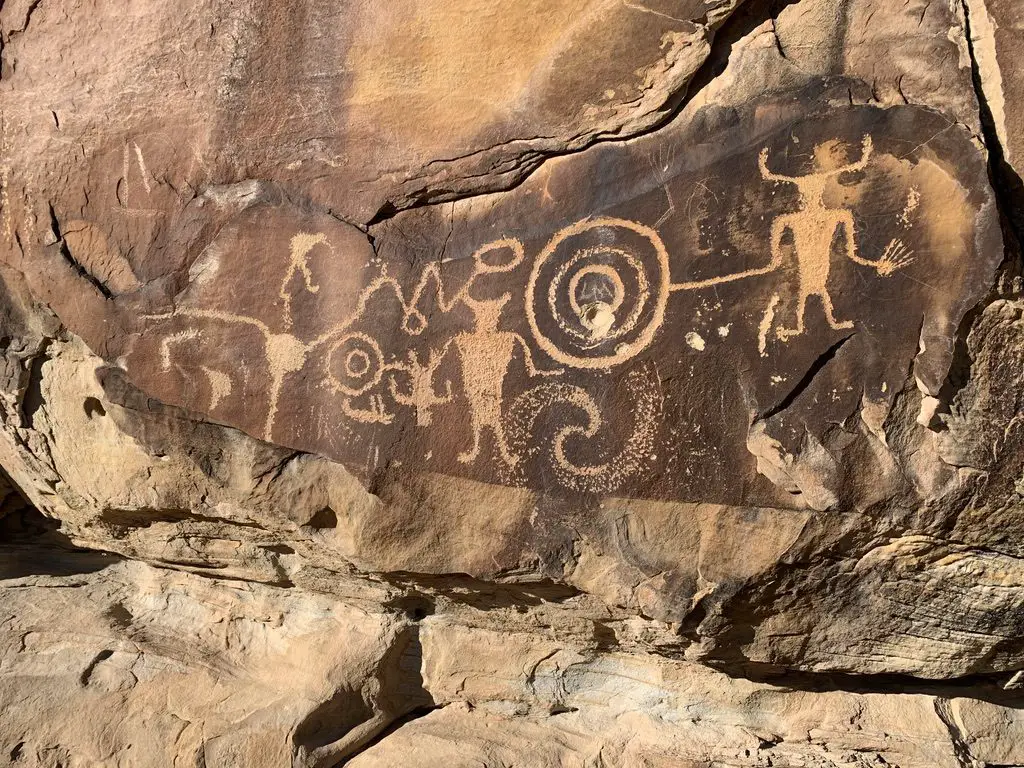
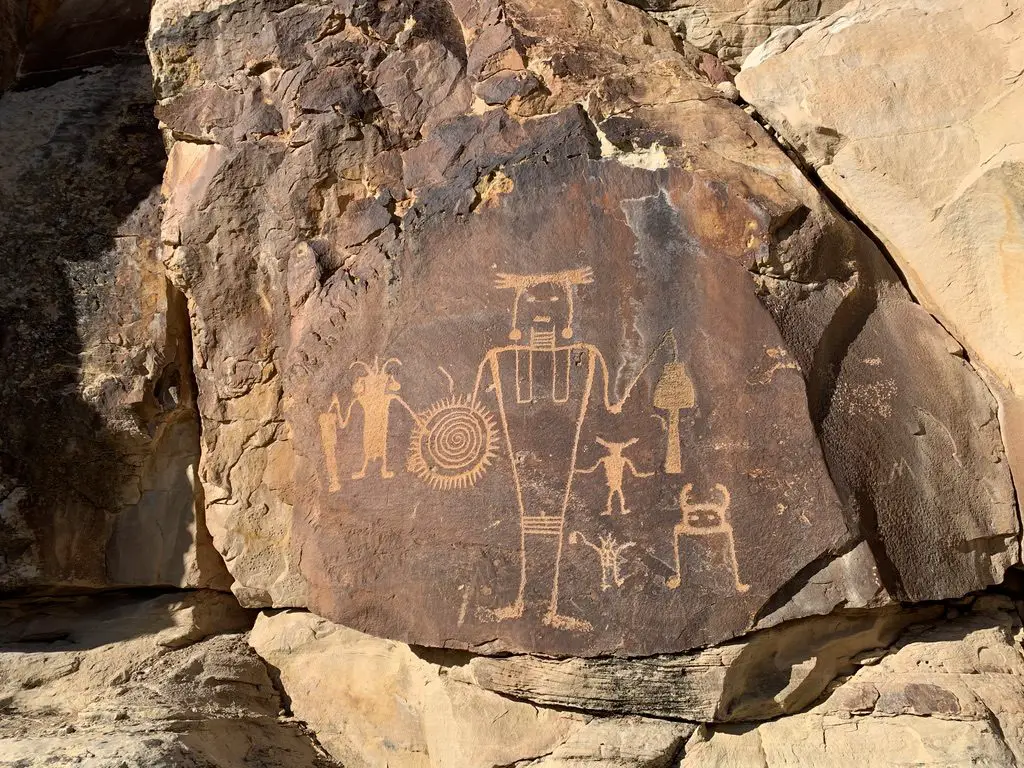
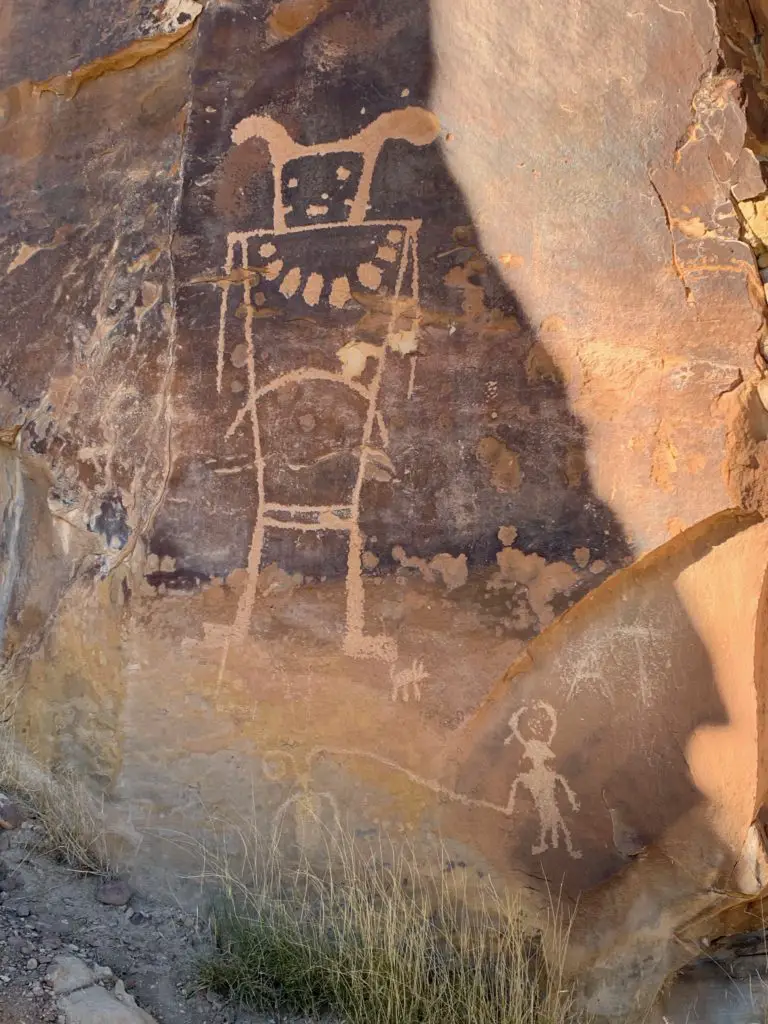
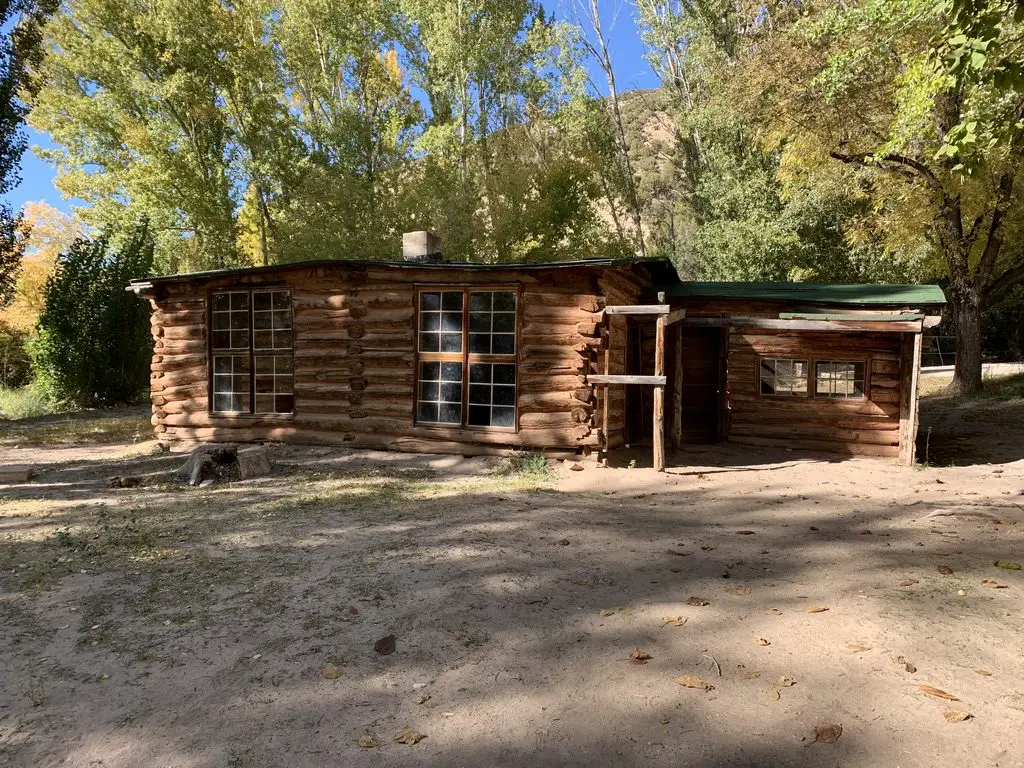
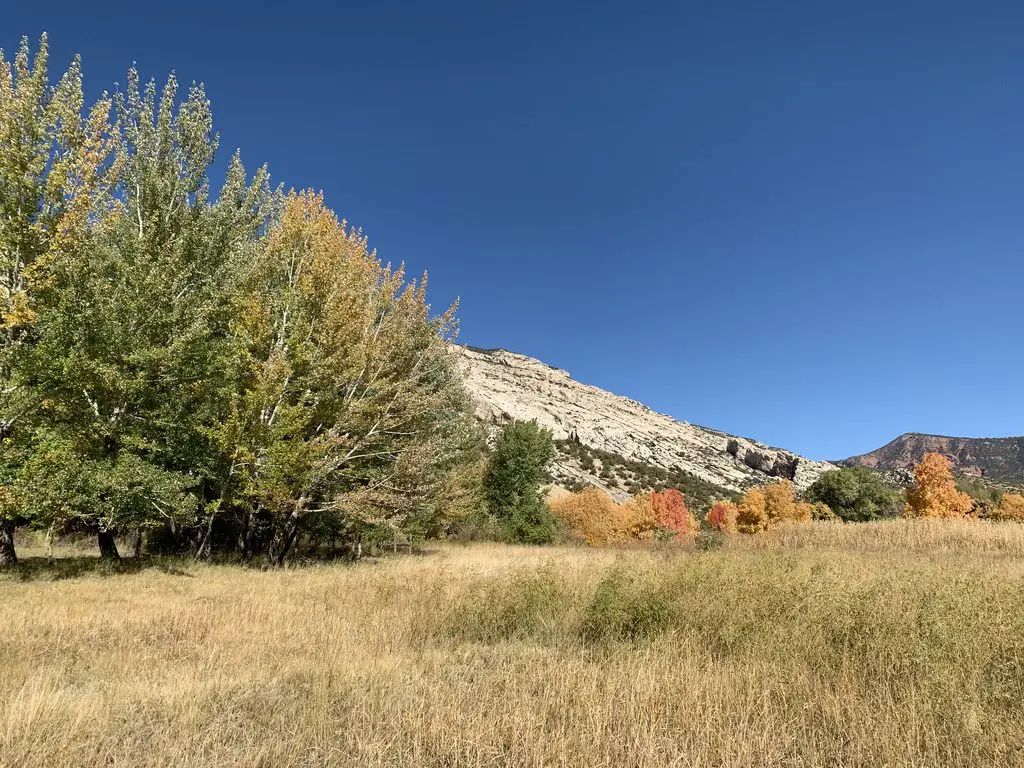
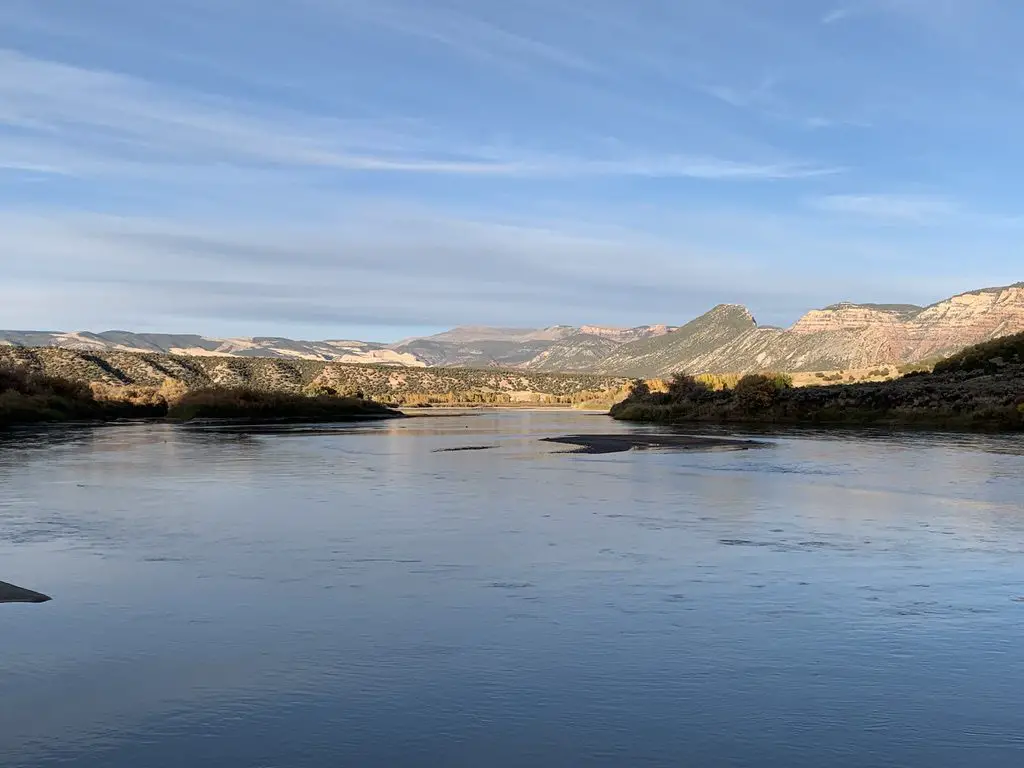
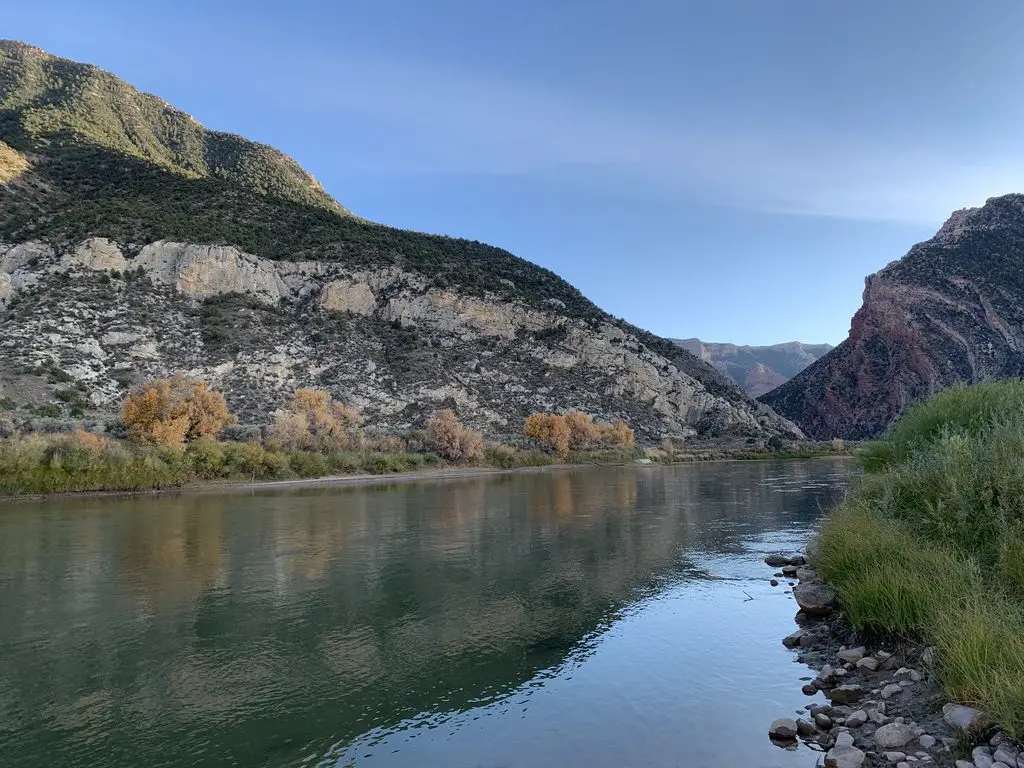
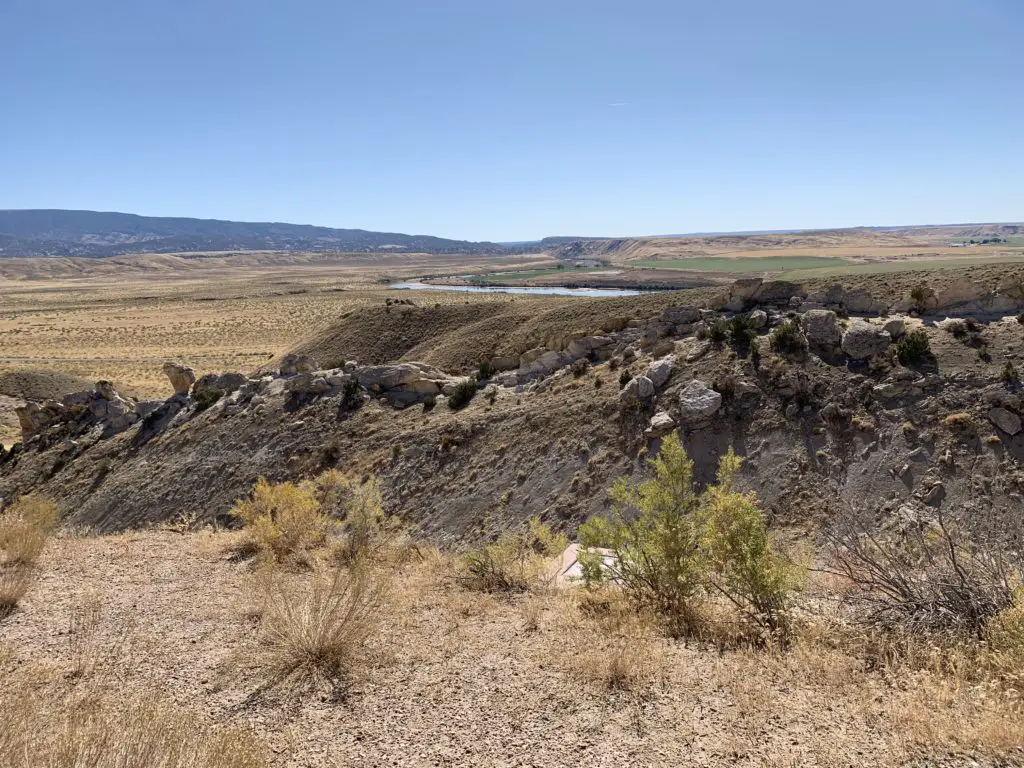
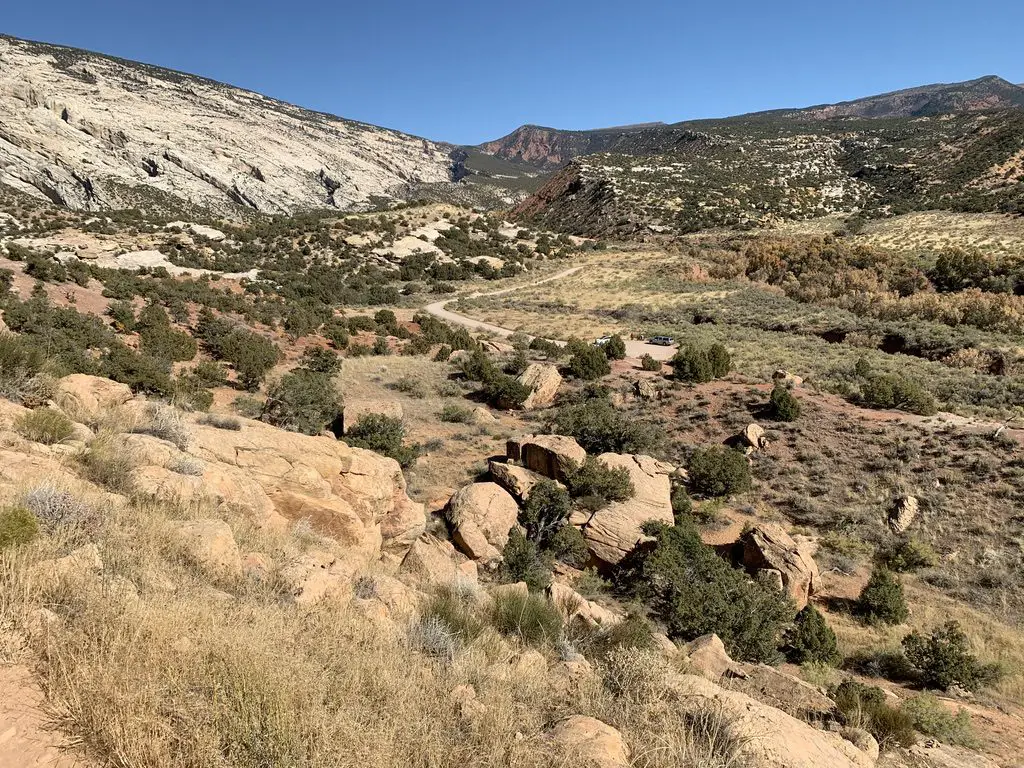
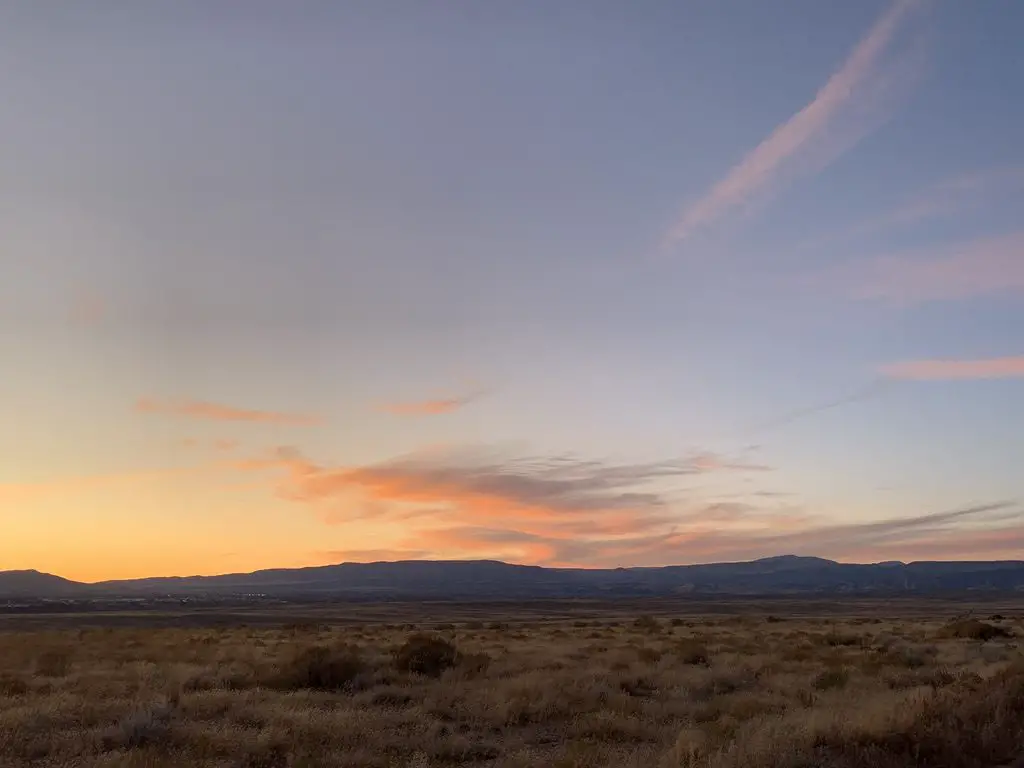
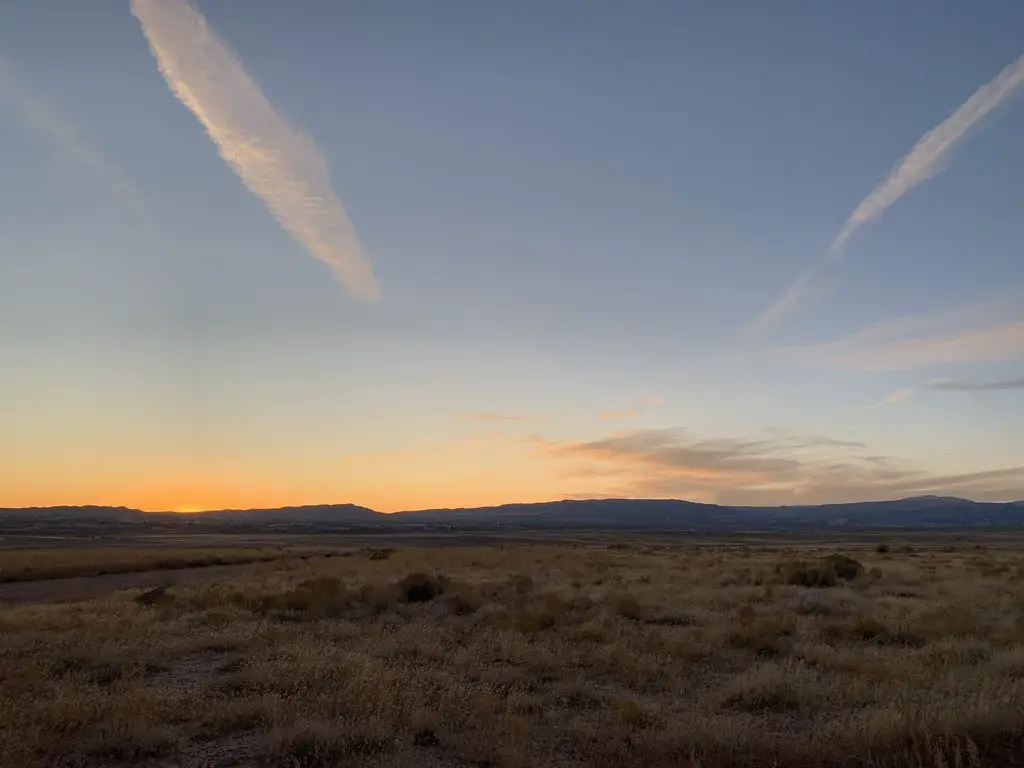
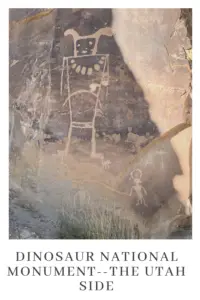
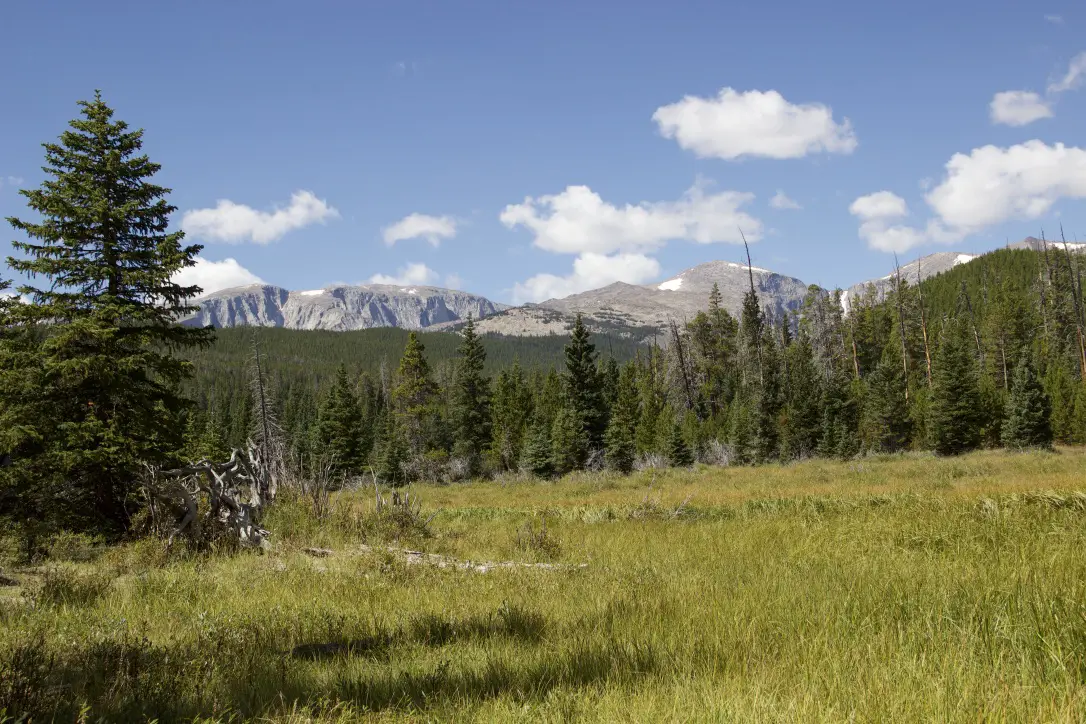
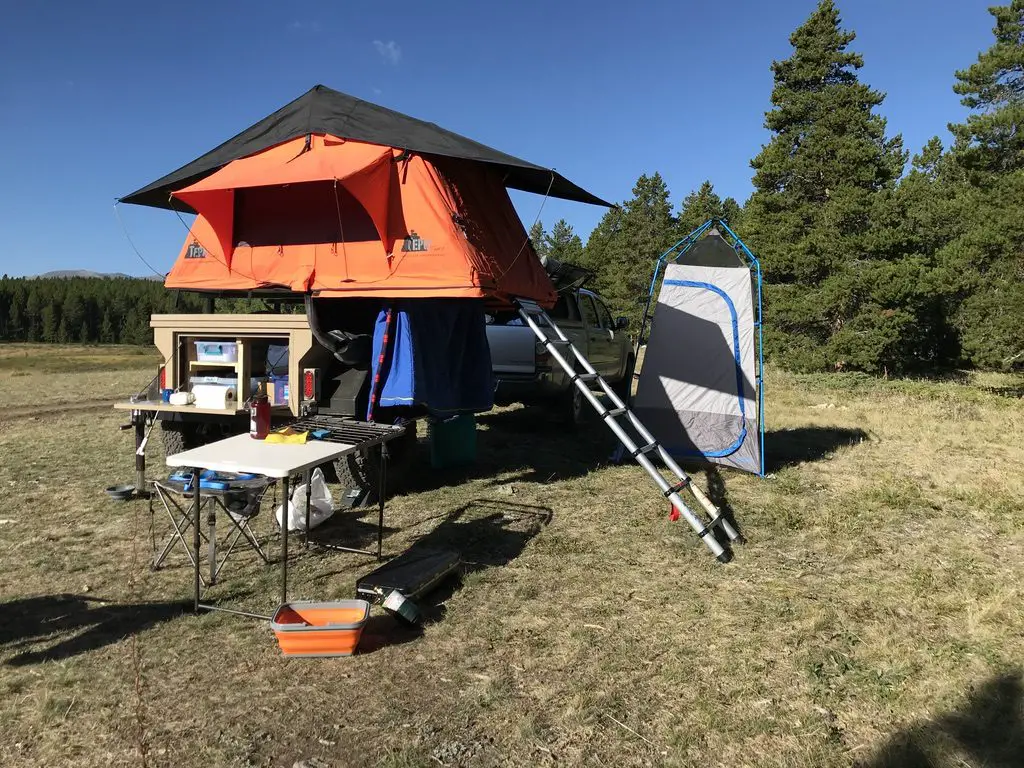
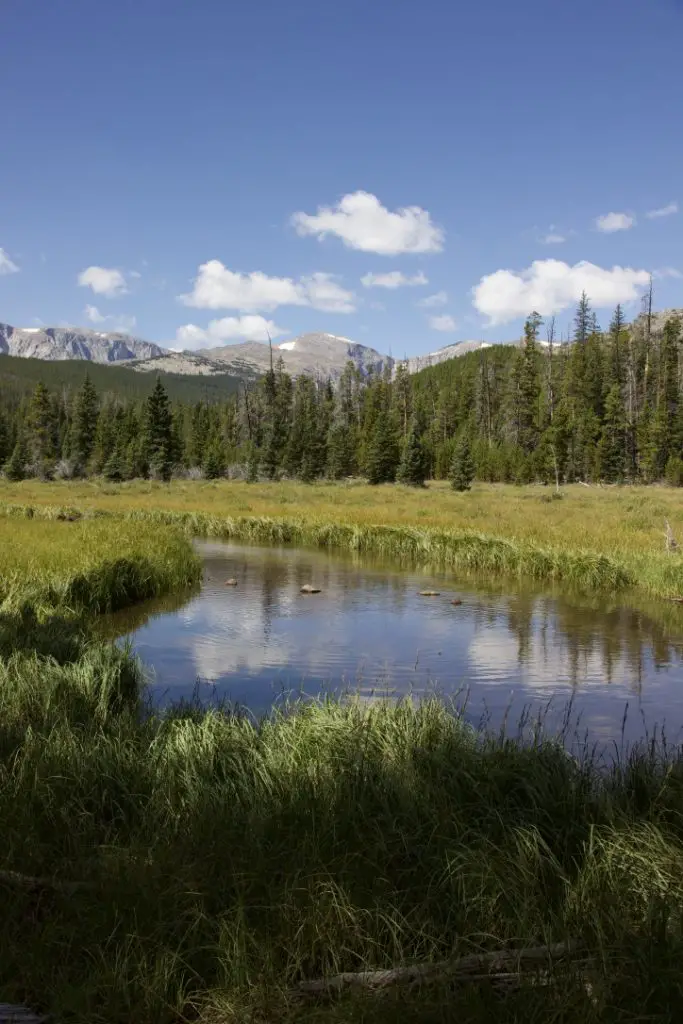 Though this area is just as beautiful as the Rockies, it is FAR less crowded, which makes it so much more pleasant to visit. 😋 There are no lines of people hiking in the Bighorns like we’ve experienced in various places around Colorado. Also, oftentimes, the lower-elevation plains may be baking in 90-degree weather, while it’s in the 60s-70s, and breezy, in the mountains!
Though this area is just as beautiful as the Rockies, it is FAR less crowded, which makes it so much more pleasant to visit. 😋 There are no lines of people hiking in the Bighorns like we’ve experienced in various places around Colorado. Also, oftentimes, the lower-elevation plains may be baking in 90-degree weather, while it’s in the 60s-70s, and breezy, in the mountains!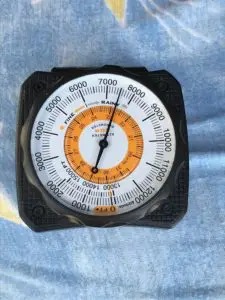 Our campsite was at about 7500 feet on this visit (oftentimes we stay much higher, closer to 9000-10,000 feet). We’ve noticed something odd at these high altitudes that we have also experienced in
Our campsite was at about 7500 feet on this visit (oftentimes we stay much higher, closer to 9000-10,000 feet). We’ve noticed something odd at these high altitudes that we have also experienced in 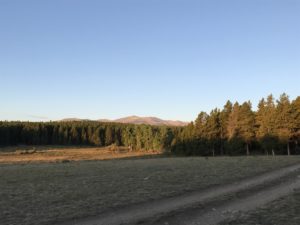 Sometimes when we head out we Disperse Camp. This is also known as “dry camping”, where you just set up your camp somewhere in the national forest, outside of an established campground. We tried this for the first time in Colorado, at both State Forest State Park and near Crested Butte. On both occasions, we did stay at an actual, numbered campsite, it was just away from any campground and we weren’t able to see our neighbors.
Sometimes when we head out we Disperse Camp. This is also known as “dry camping”, where you just set up your camp somewhere in the national forest, outside of an established campground. We tried this for the first time in Colorado, at both State Forest State Park and near Crested Butte. On both occasions, we did stay at an actual, numbered campsite, it was just away from any campground and we weren’t able to see our neighbors.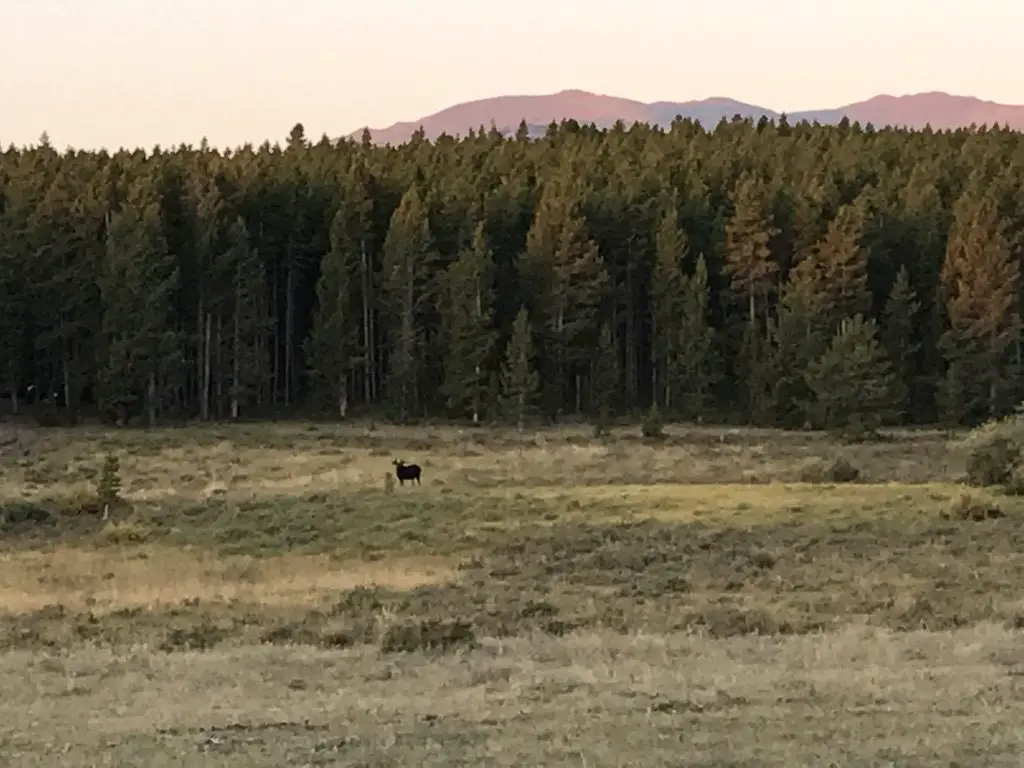
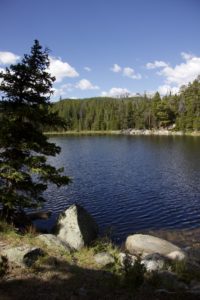
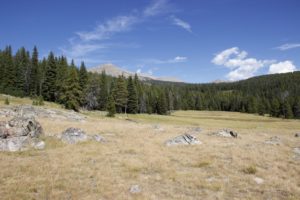 This hike was deceptively tough. It’s only about three miles in total length, but it’s overgrown in many spots, very rocky and there are lots of downed trees. We actually lost the trail several times and had to root around to locate it again. Other parts of it are PERFECT though. They feature a flat, graded path through a moist, pine forest, that is surrounded on both sides by a green carpet of ferns, moss, and soft undergrowth. It almost felt like hiking in the cool rainforests of the Pacific Northwest. It was such an idyllic sight!
This hike was deceptively tough. It’s only about three miles in total length, but it’s overgrown in many spots, very rocky and there are lots of downed trees. We actually lost the trail several times and had to root around to locate it again. Other parts of it are PERFECT though. They feature a flat, graded path through a moist, pine forest, that is surrounded on both sides by a green carpet of ferns, moss, and soft undergrowth. It almost felt like hiking in the cool rainforests of the Pacific Northwest. It was such an idyllic sight!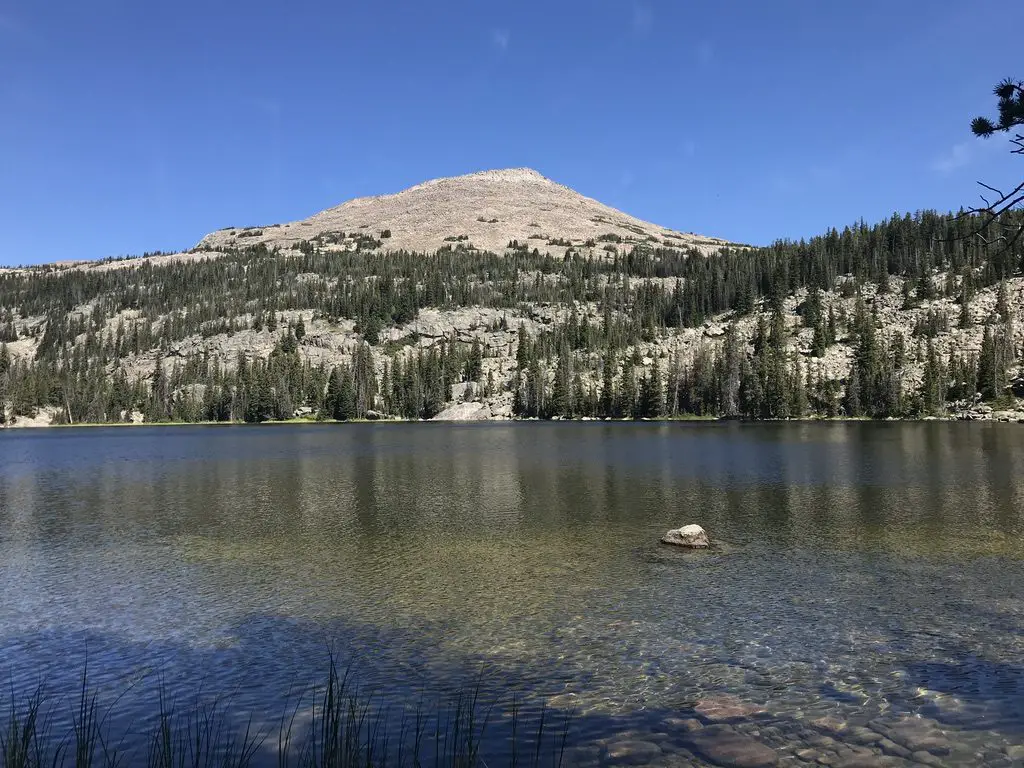
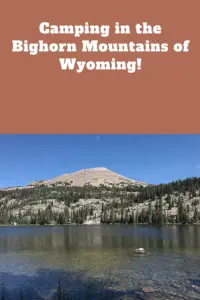
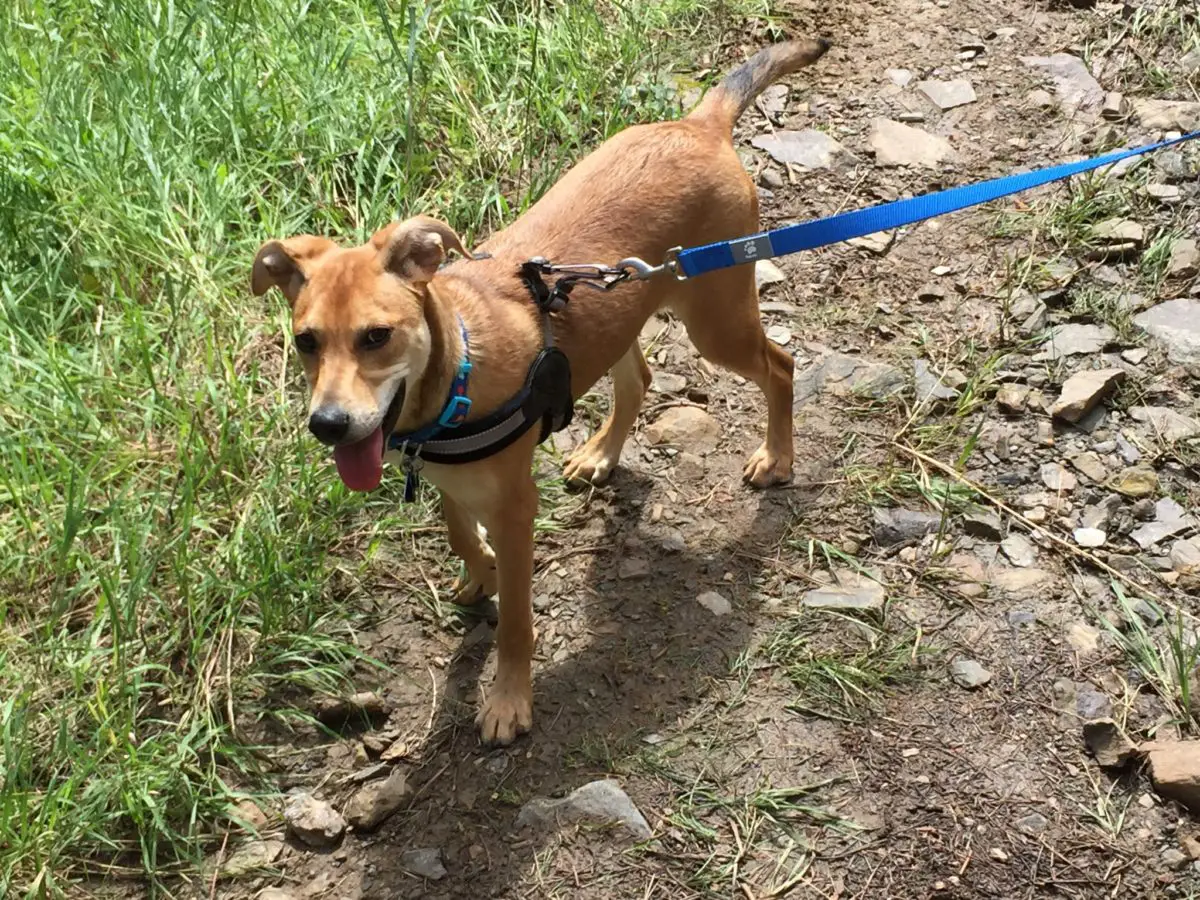
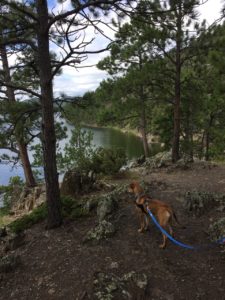 Our pup doesn’t seem to have quite the same stamina as our old, hound dog, though she enjoys the many hikes we’ve taken her on in the nearby Hills. She has also learned to enjoy cars, including the camping trips, visits to the drive-in and storm chases we’ve taken in them.
Our pup doesn’t seem to have quite the same stamina as our old, hound dog, though she enjoys the many hikes we’ve taken her on in the nearby Hills. She has also learned to enjoy cars, including the camping trips, visits to the drive-in and storm chases we’ve taken in them. I read a puppy training book called
I read a puppy training book called

